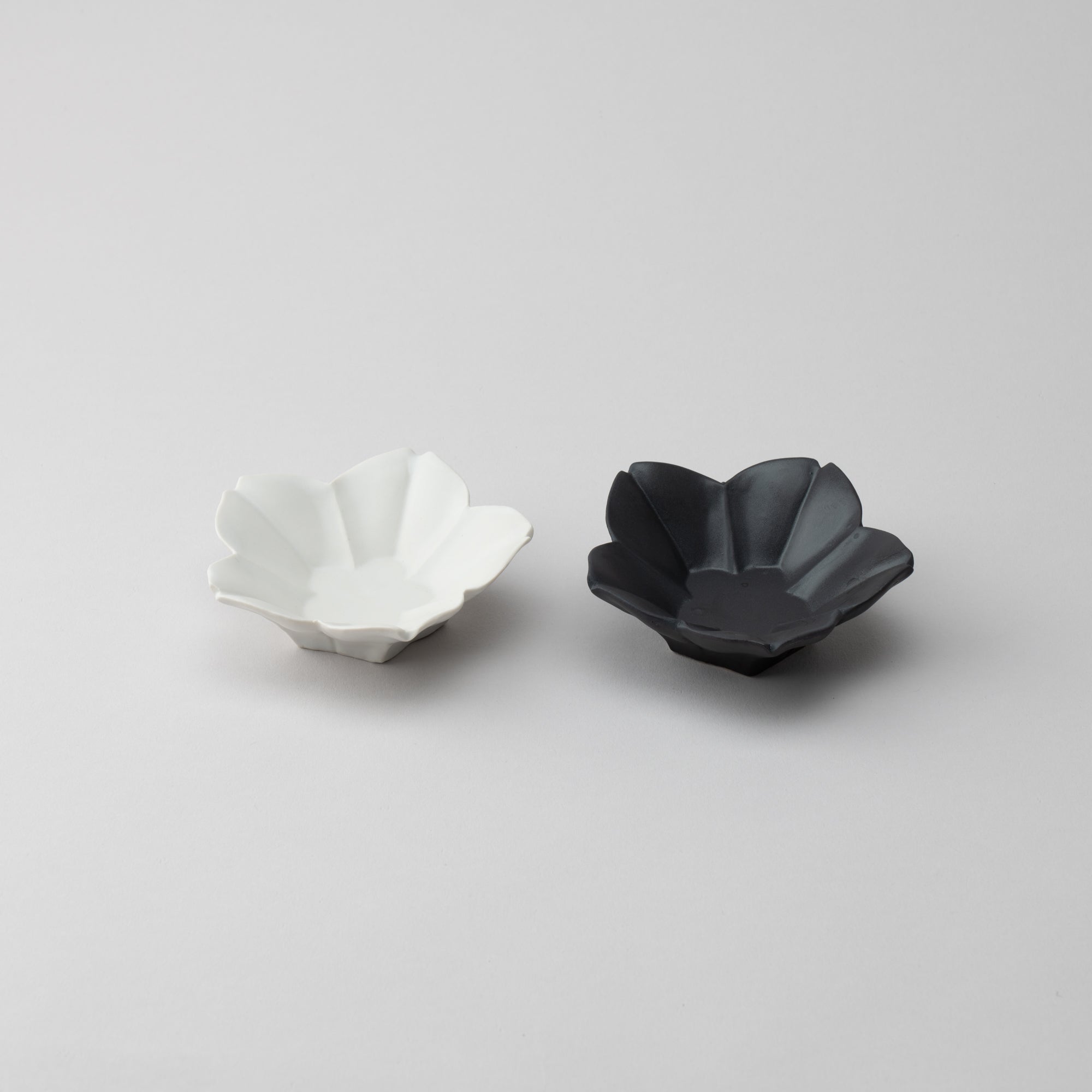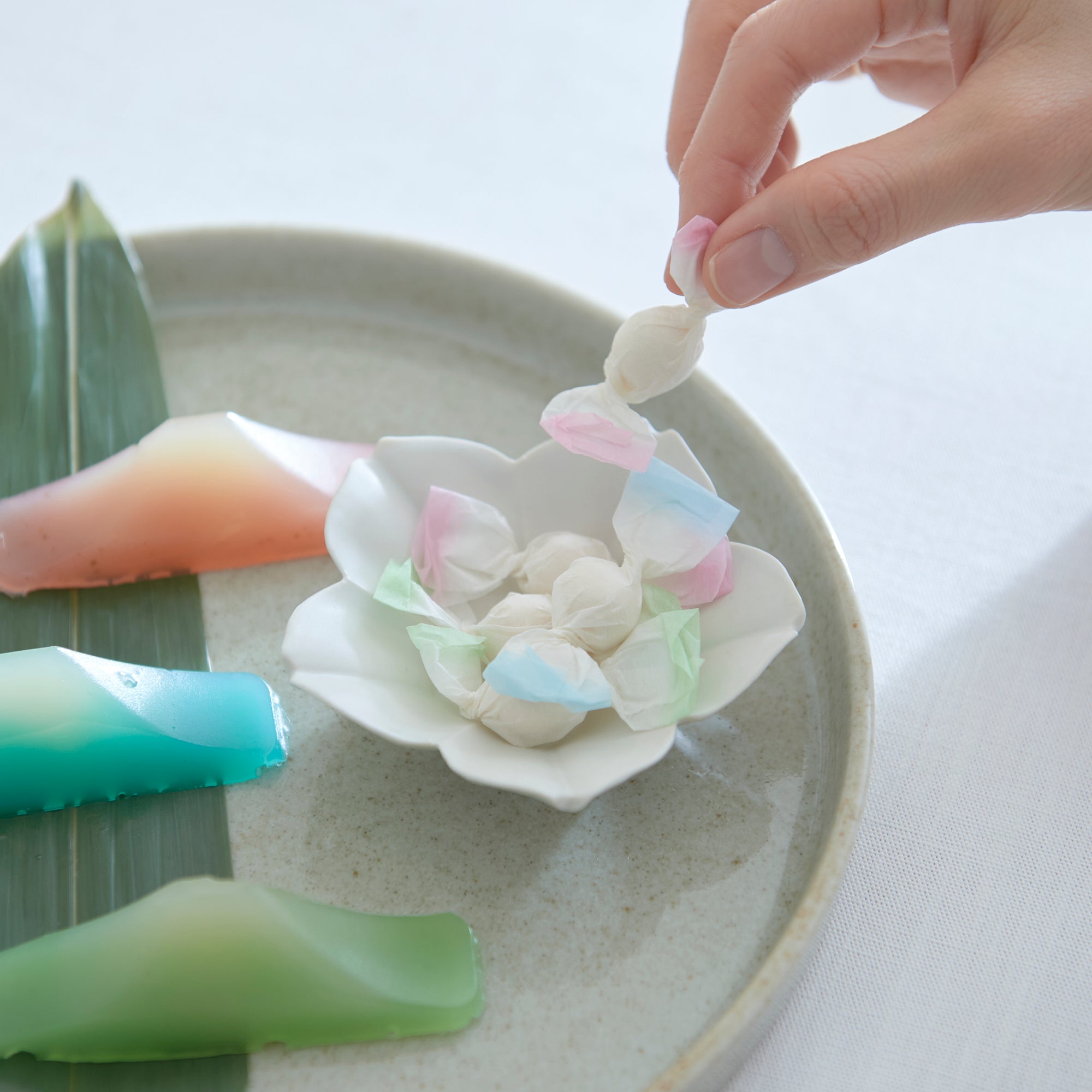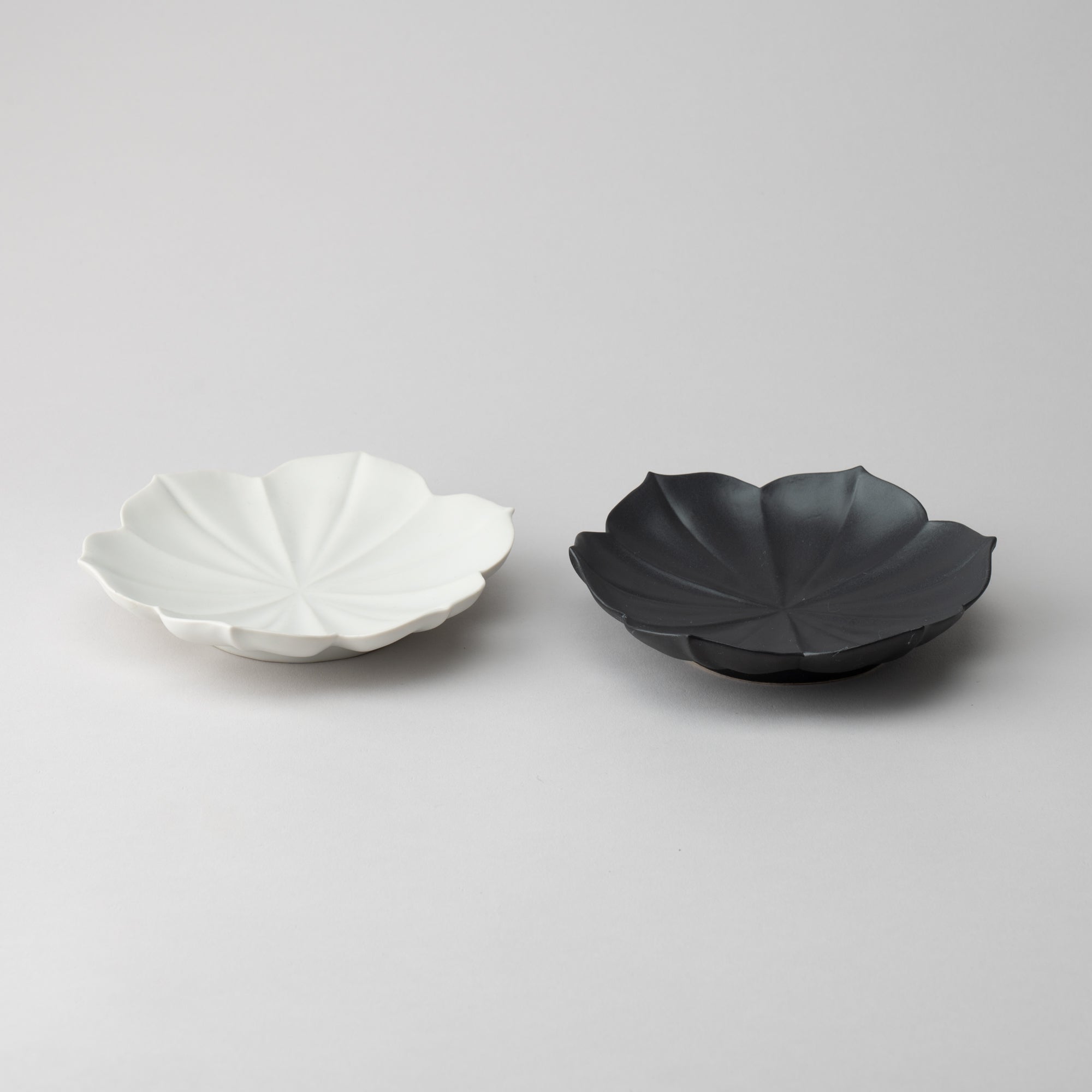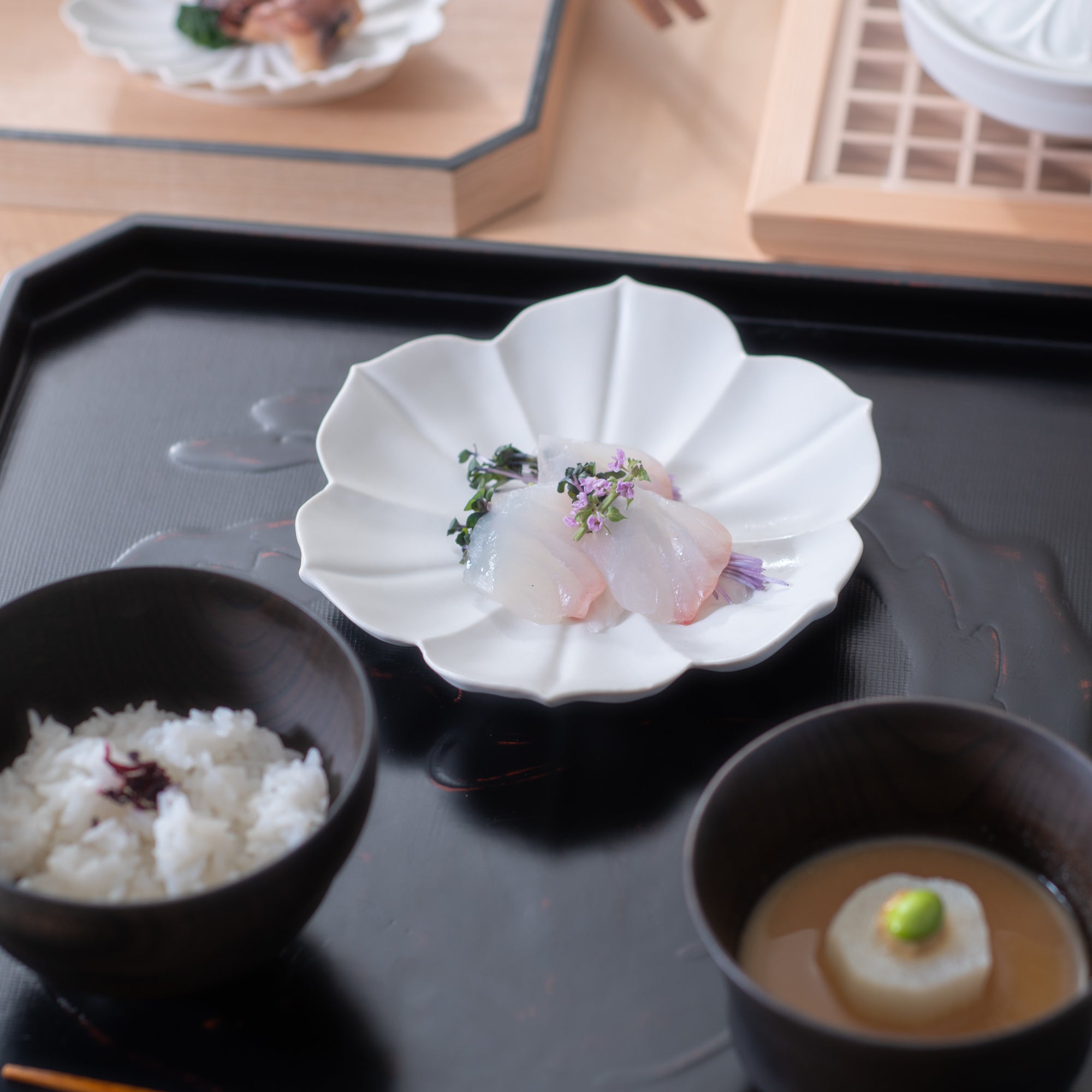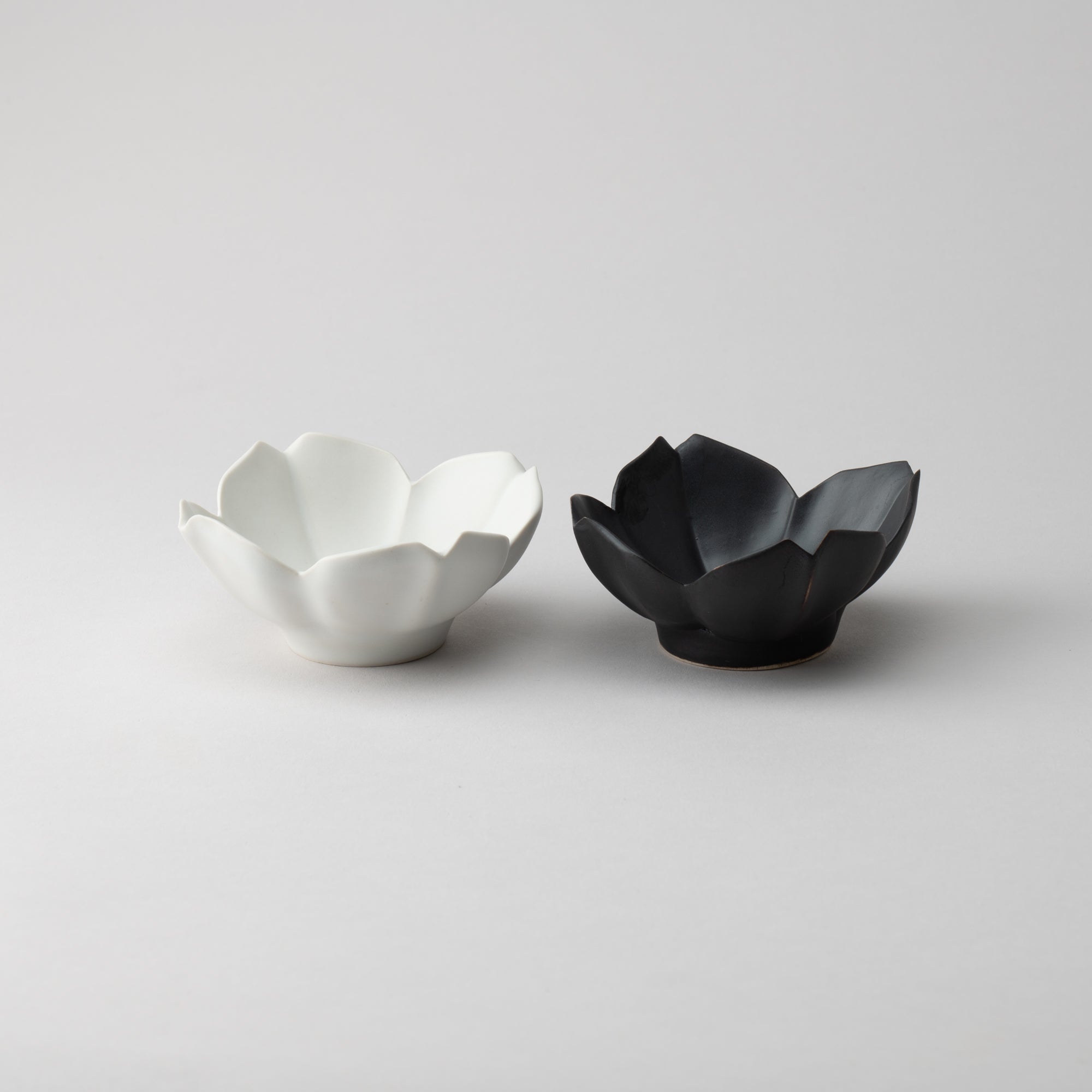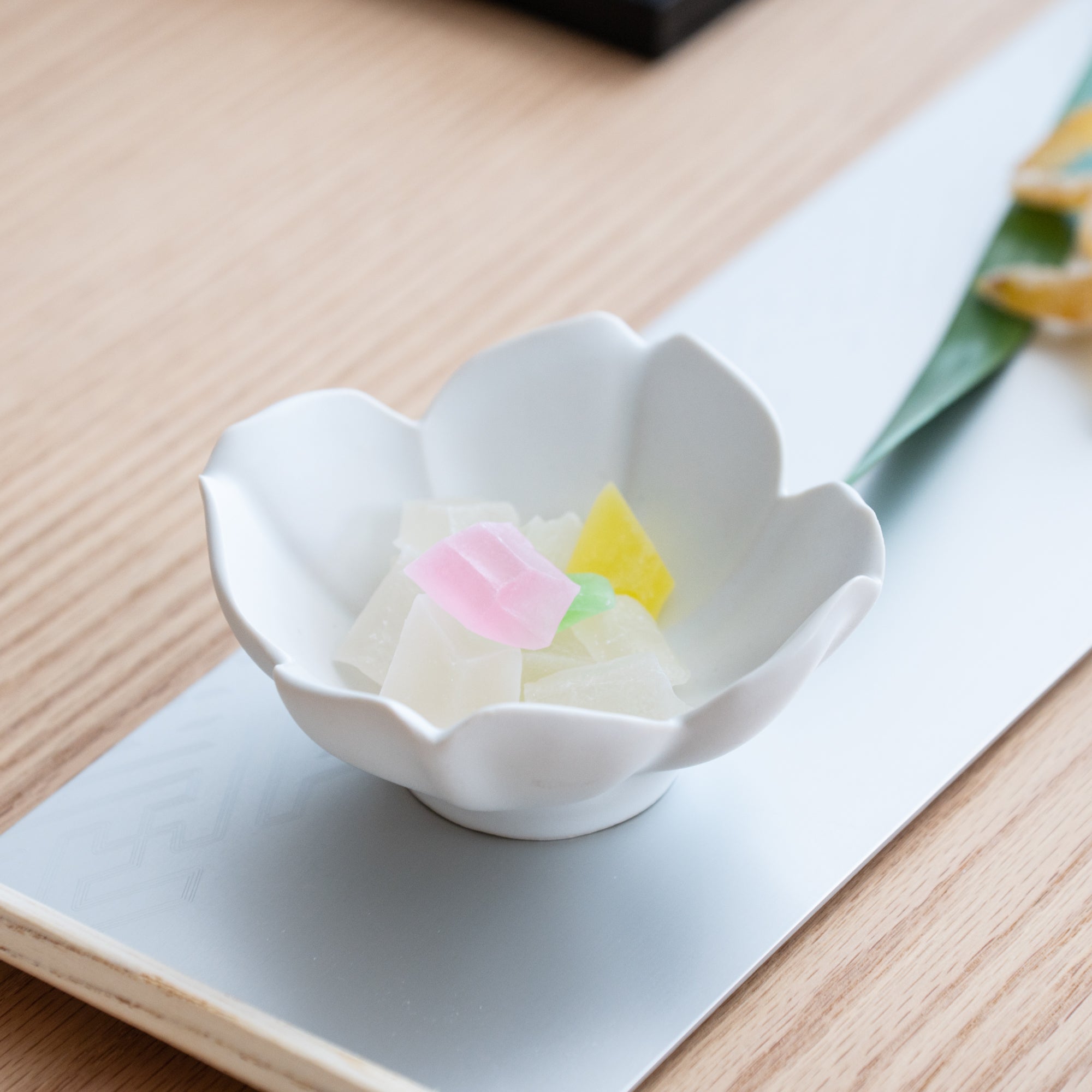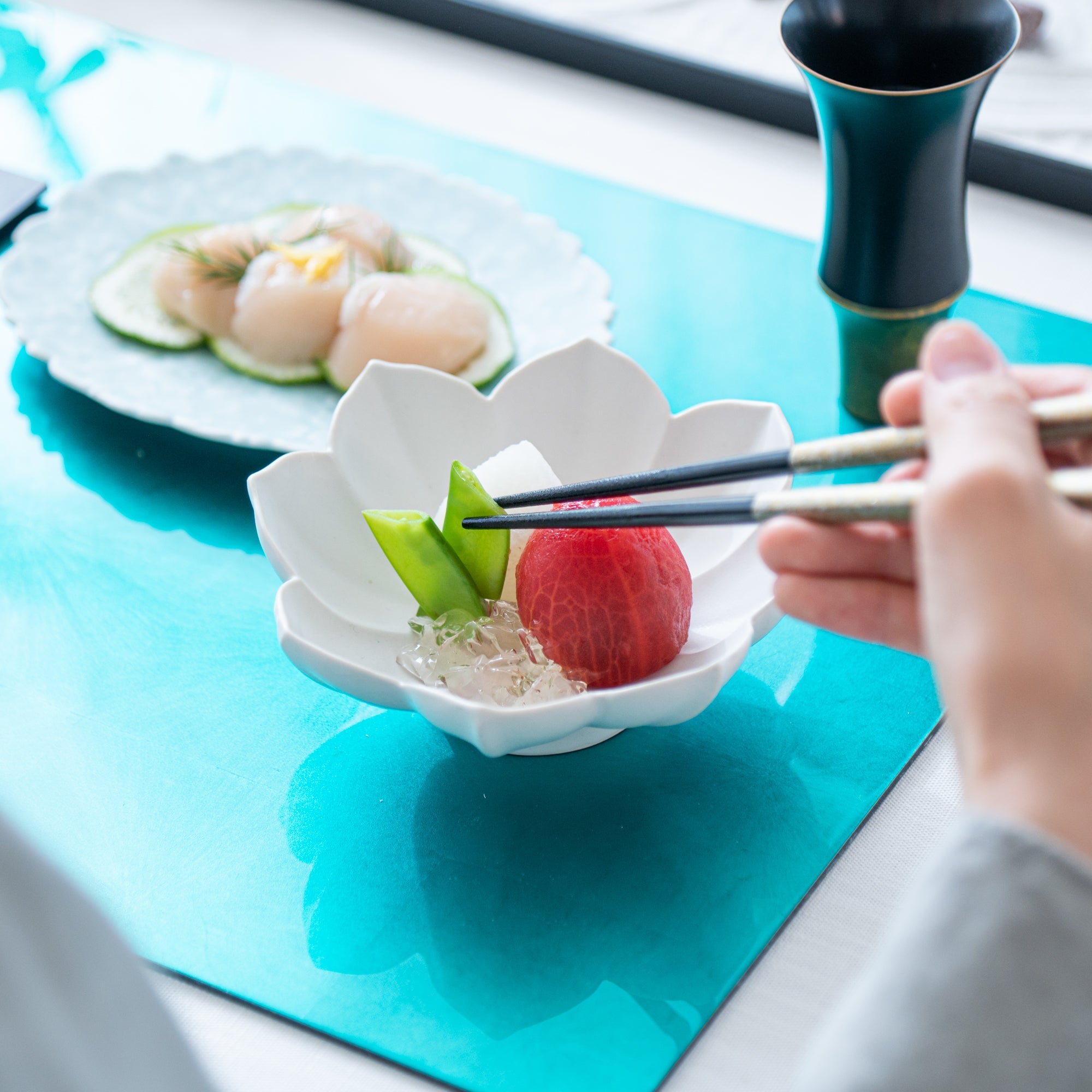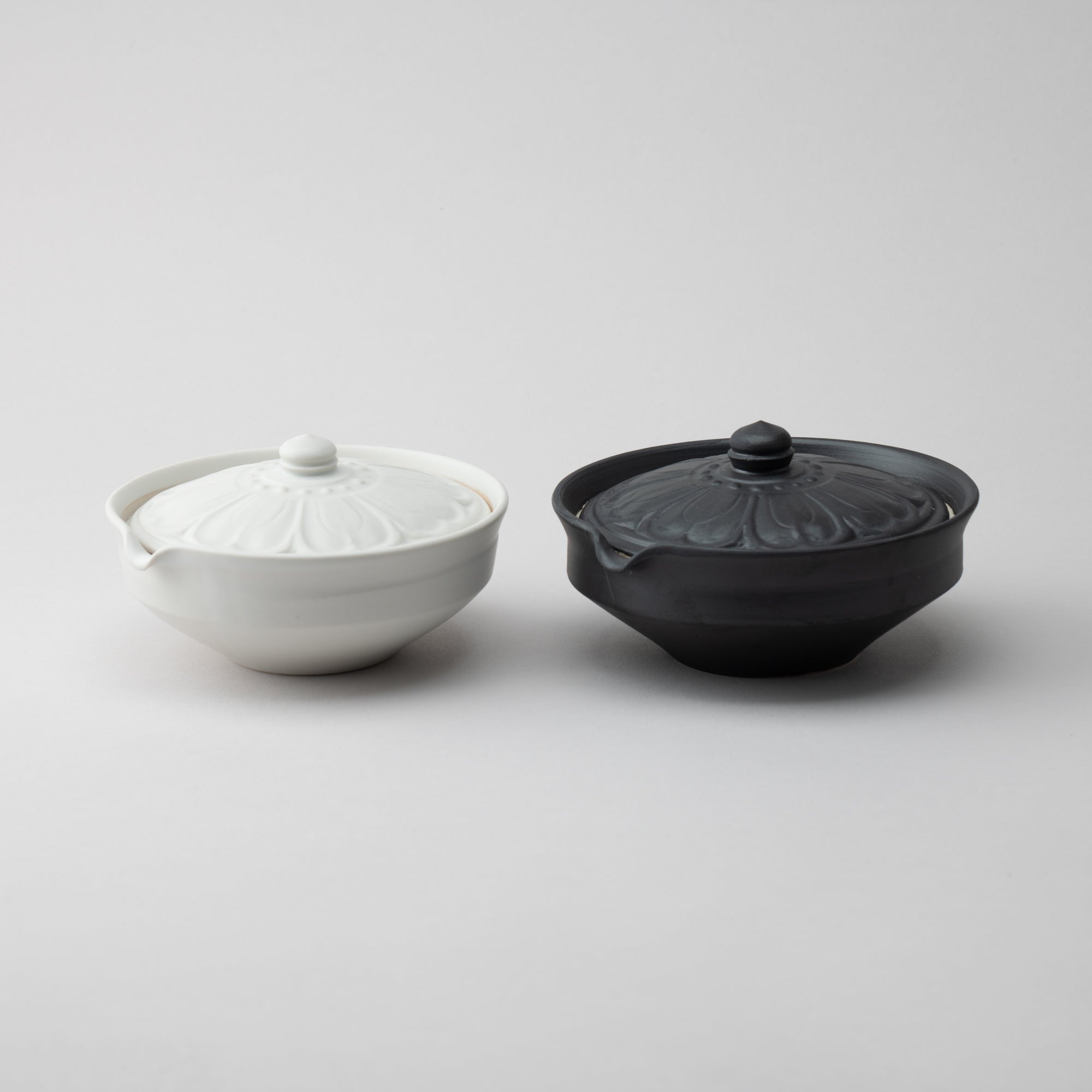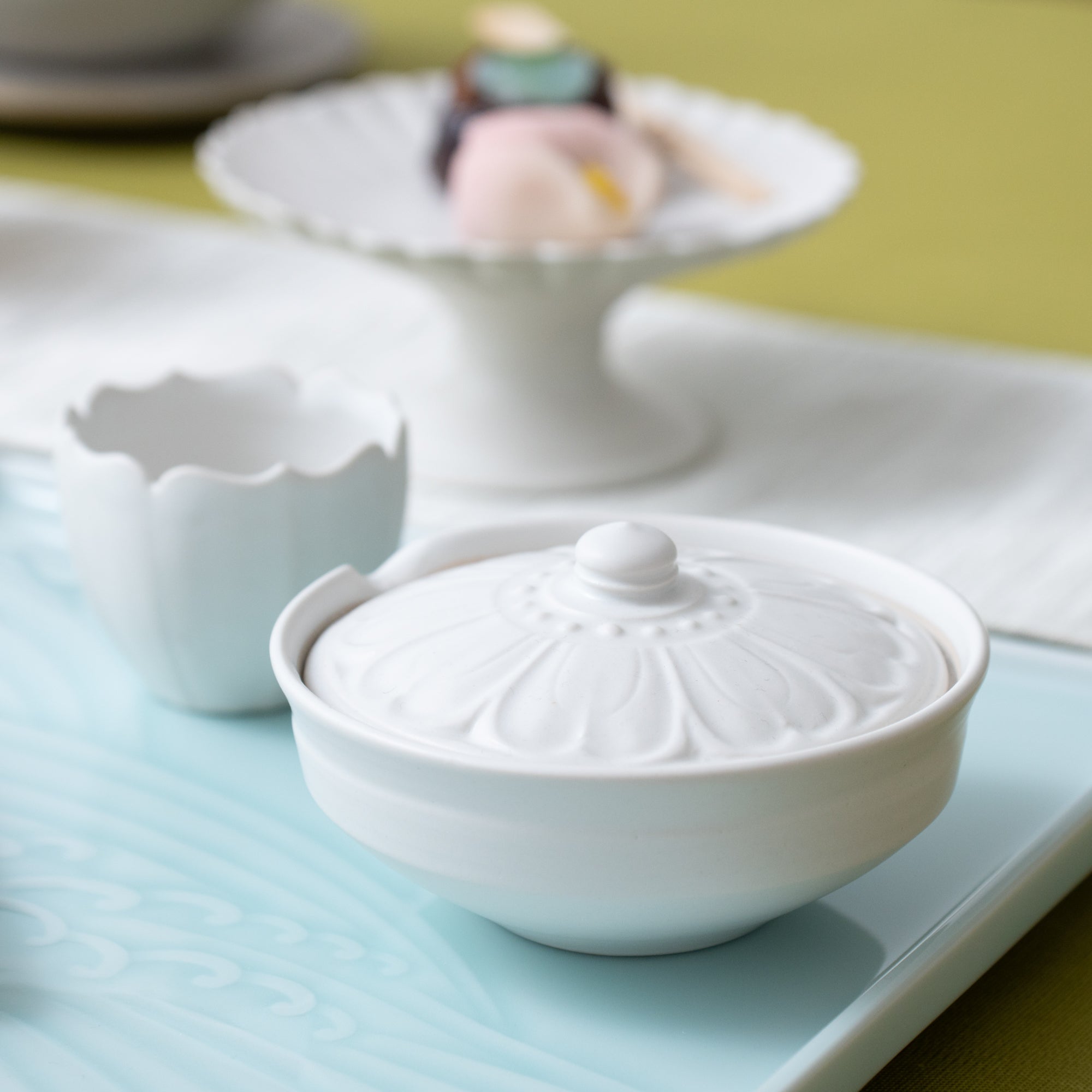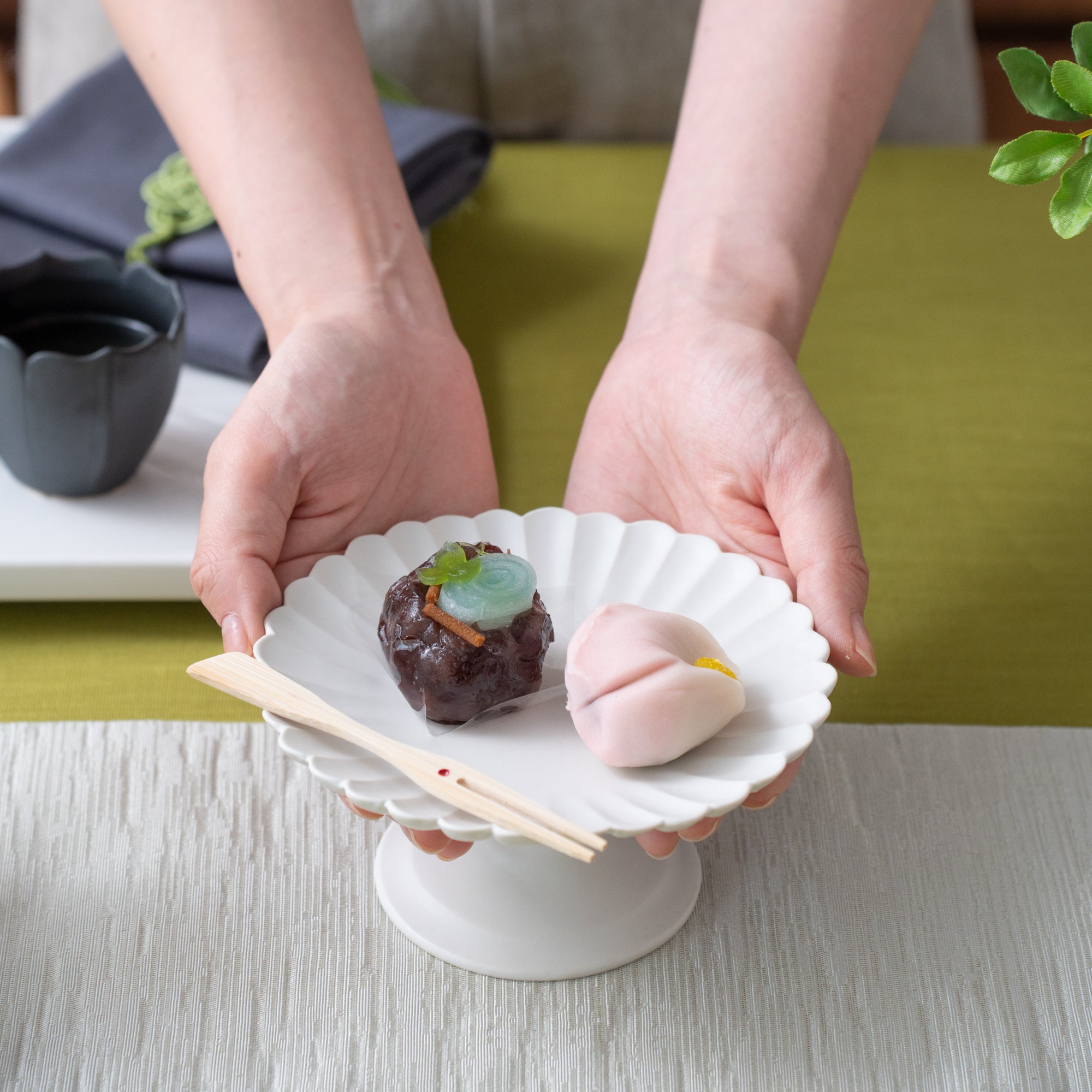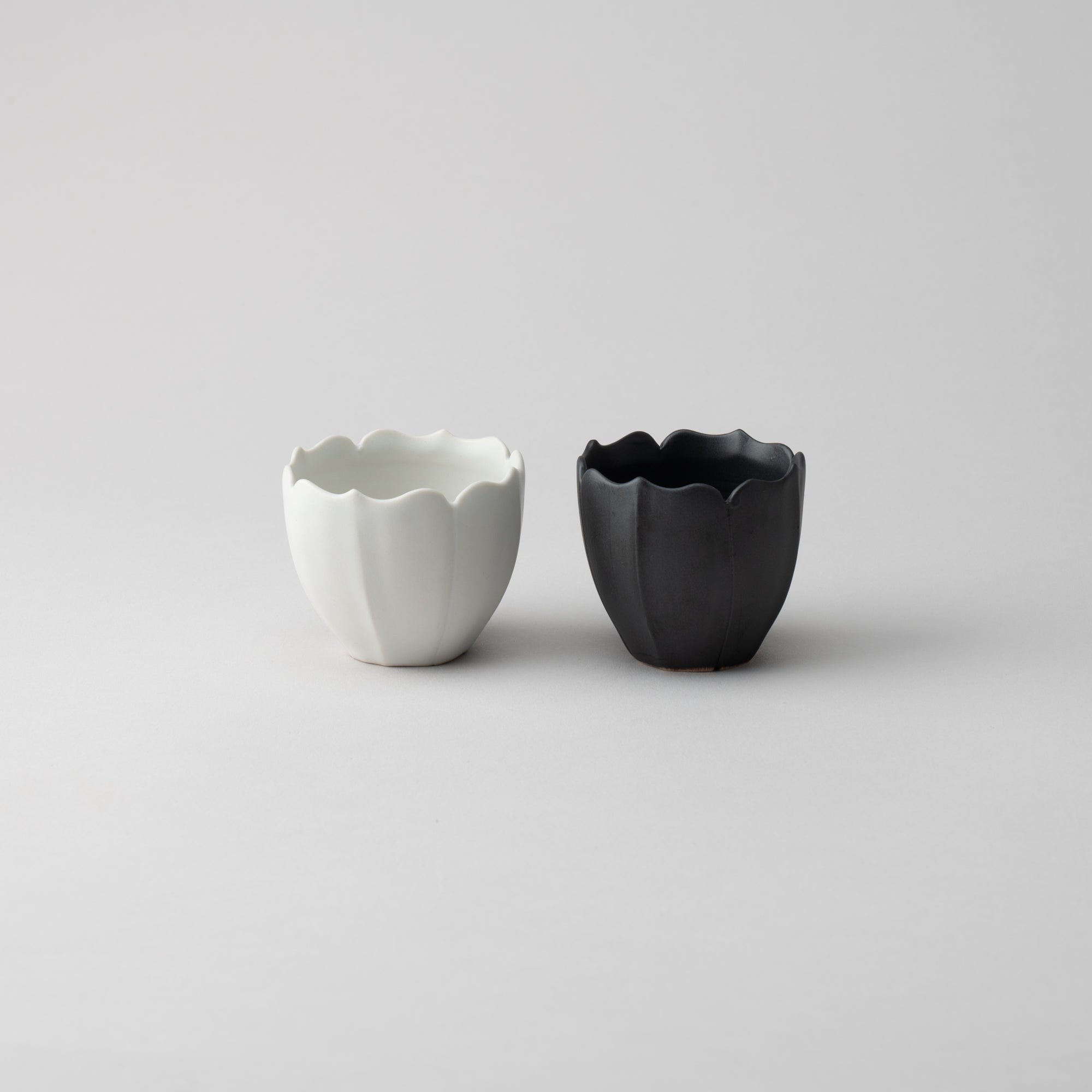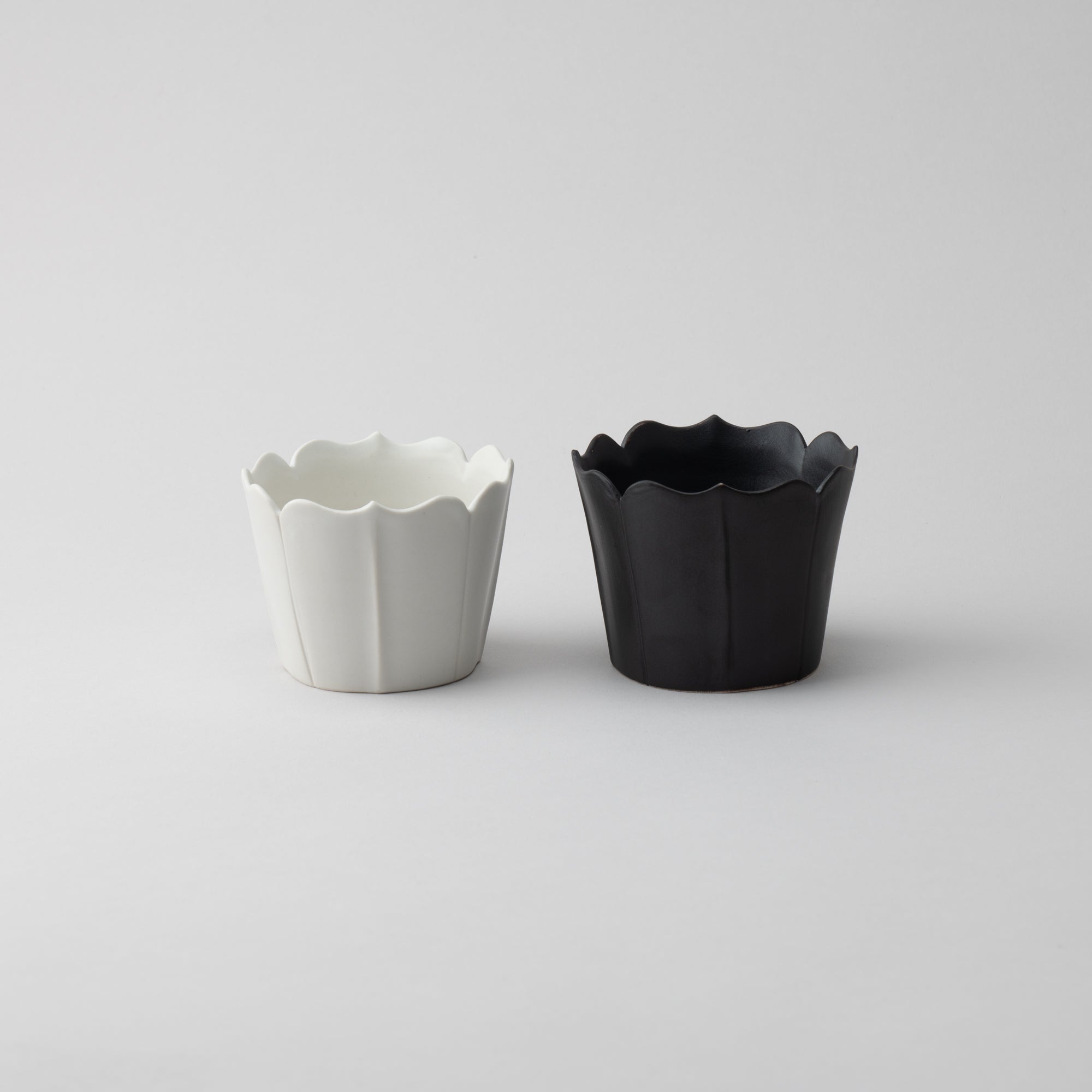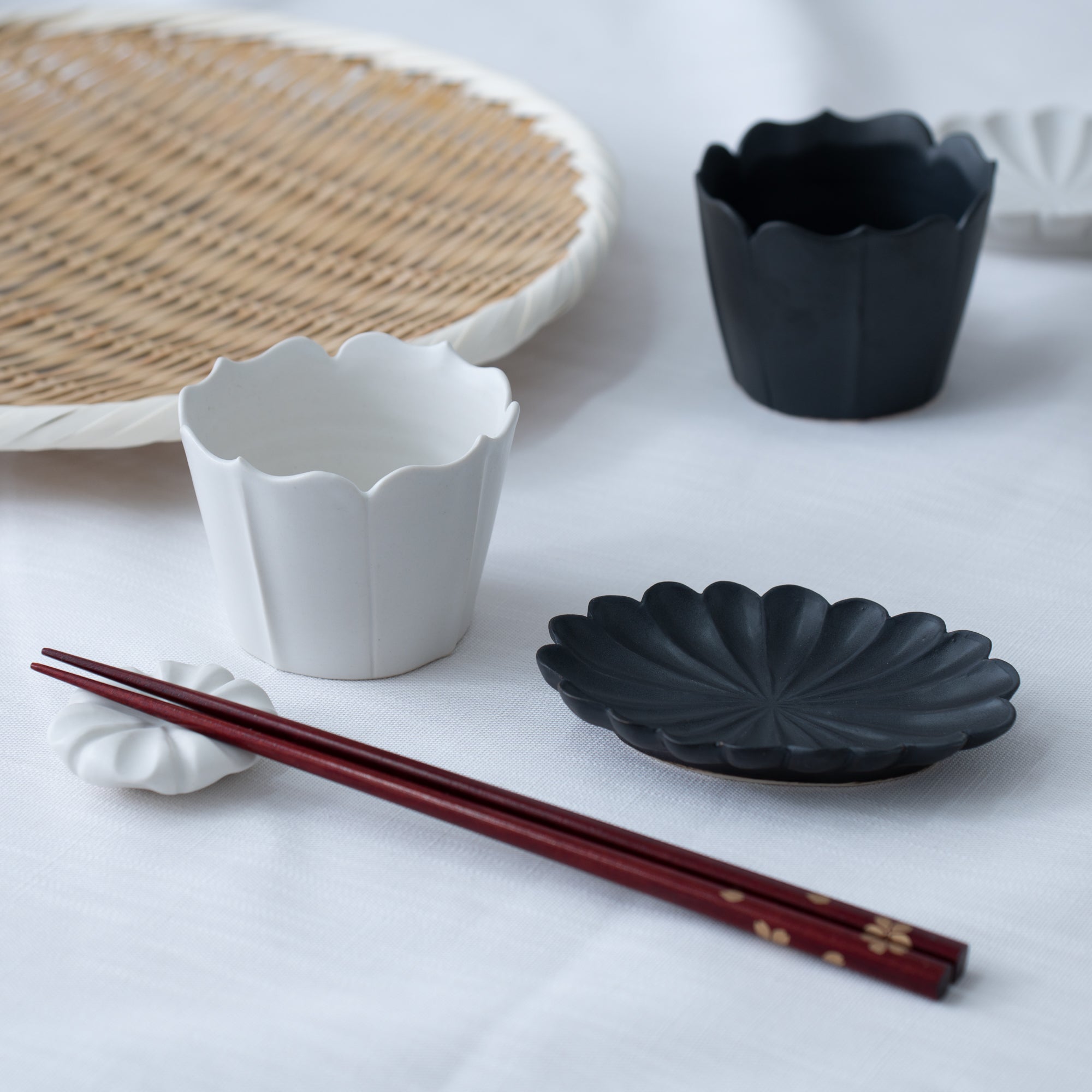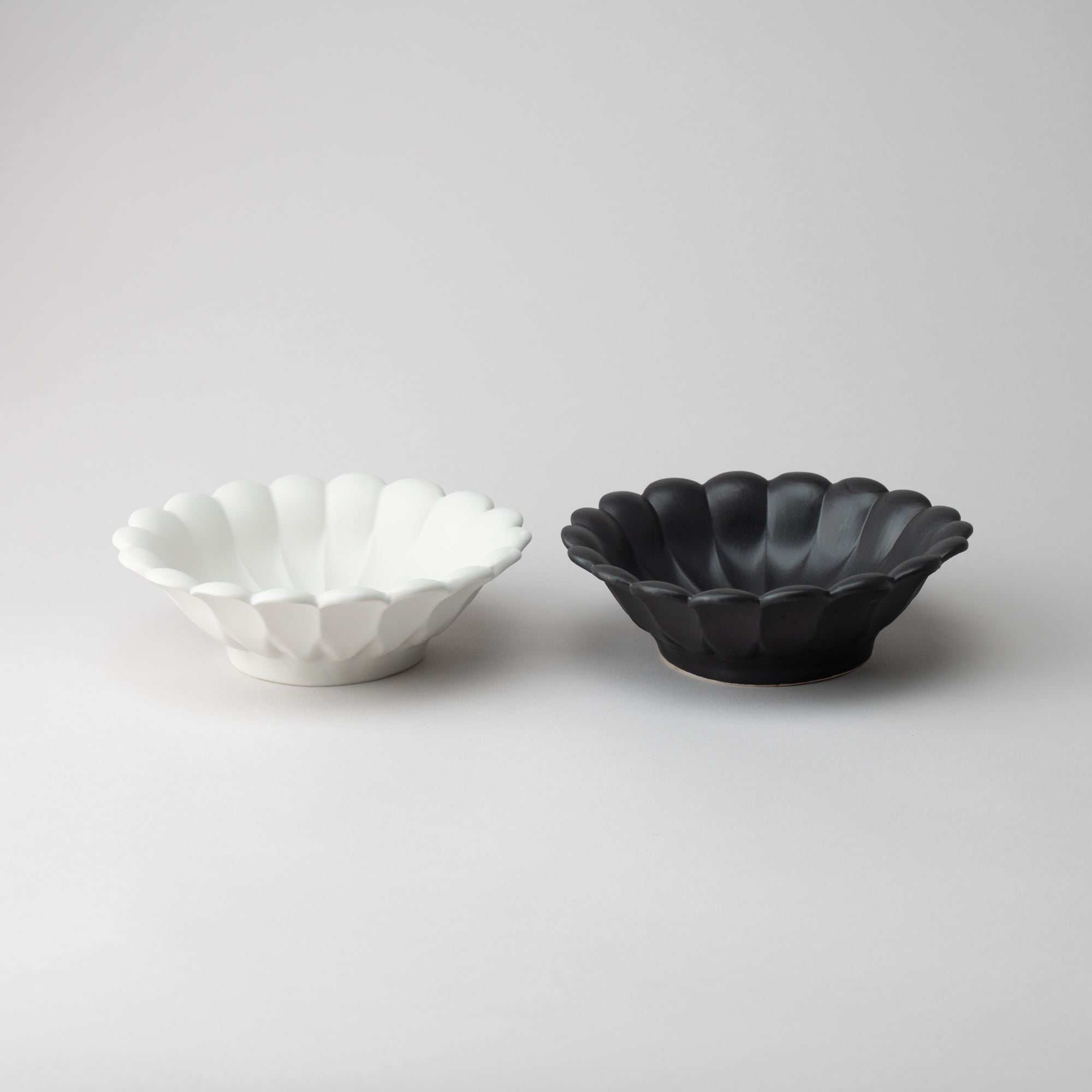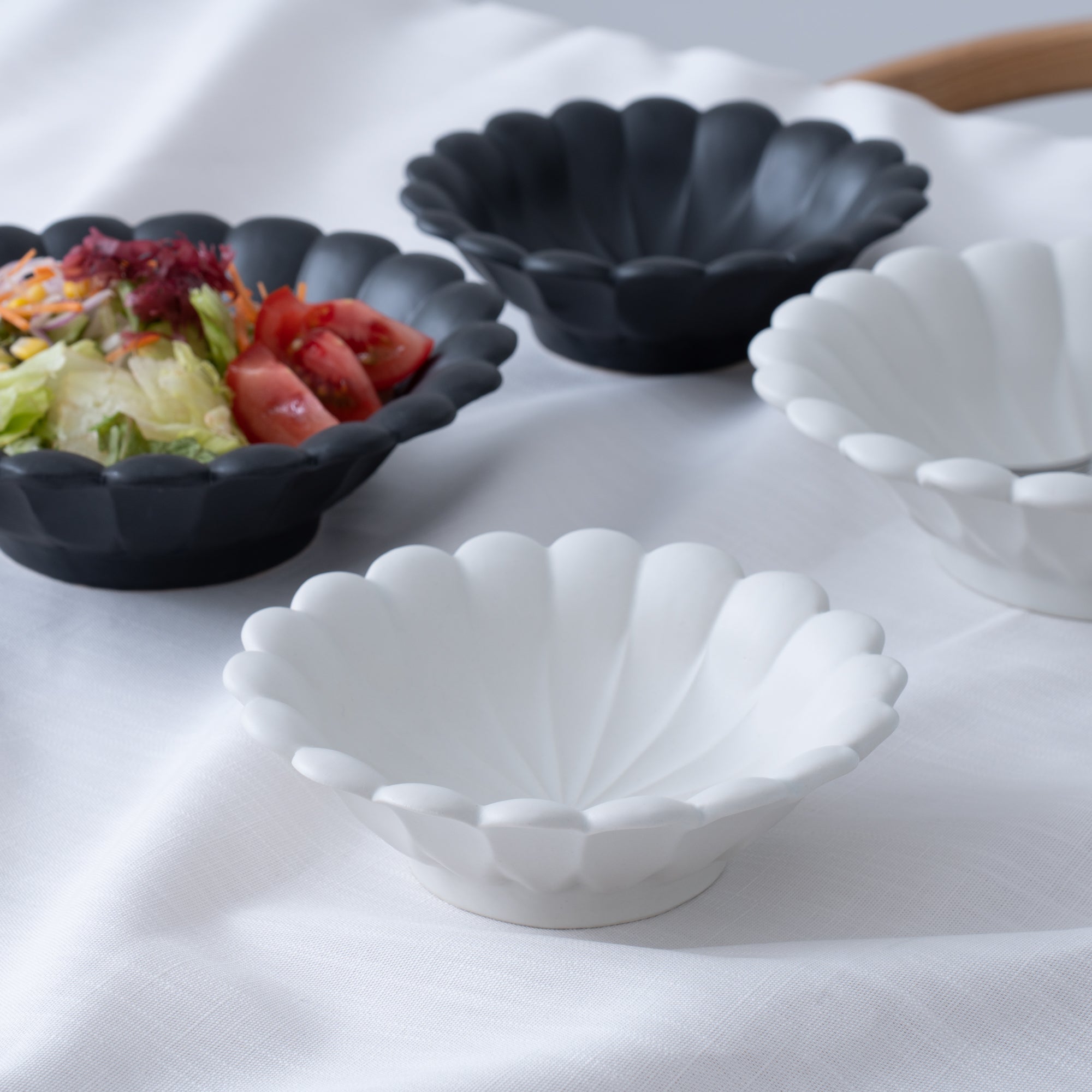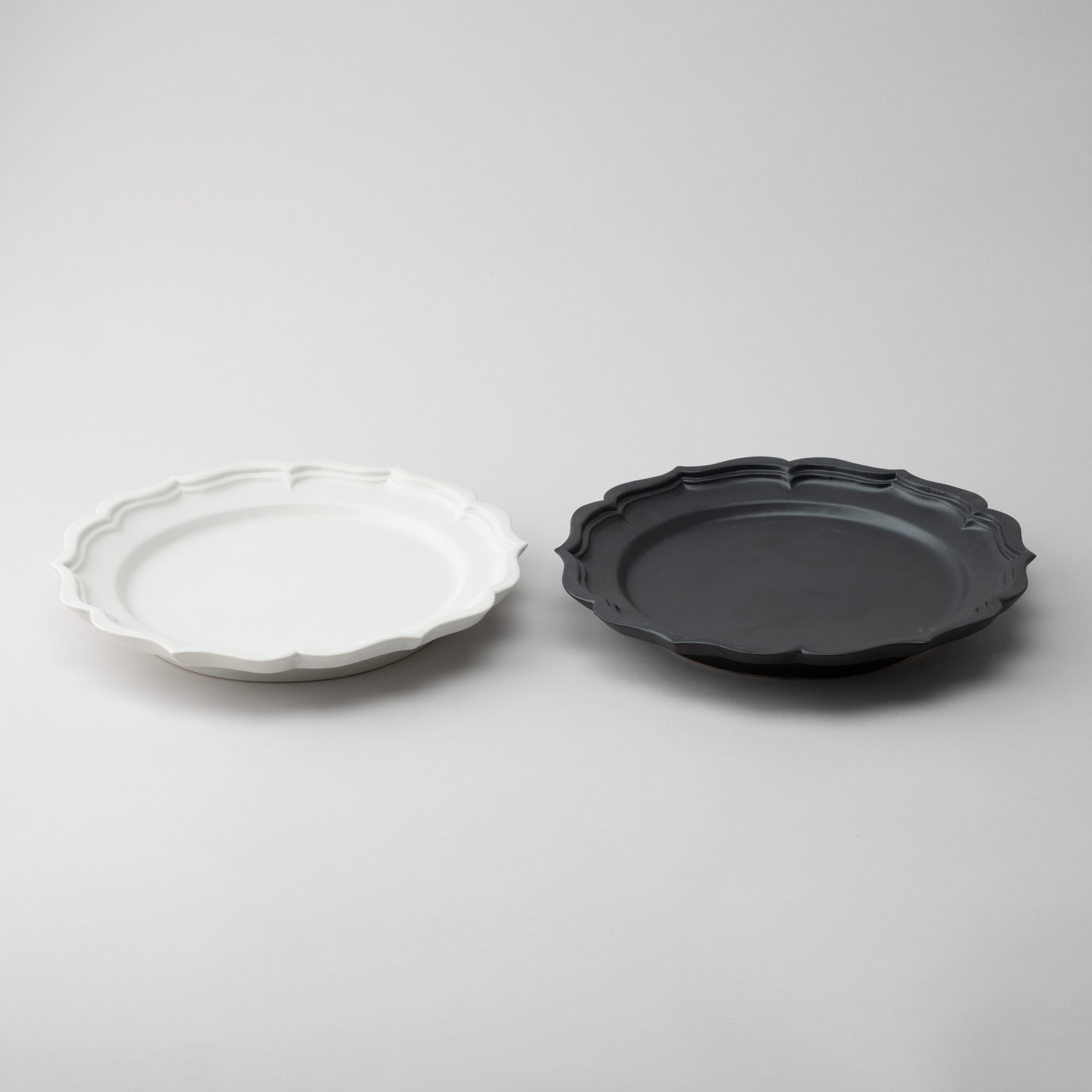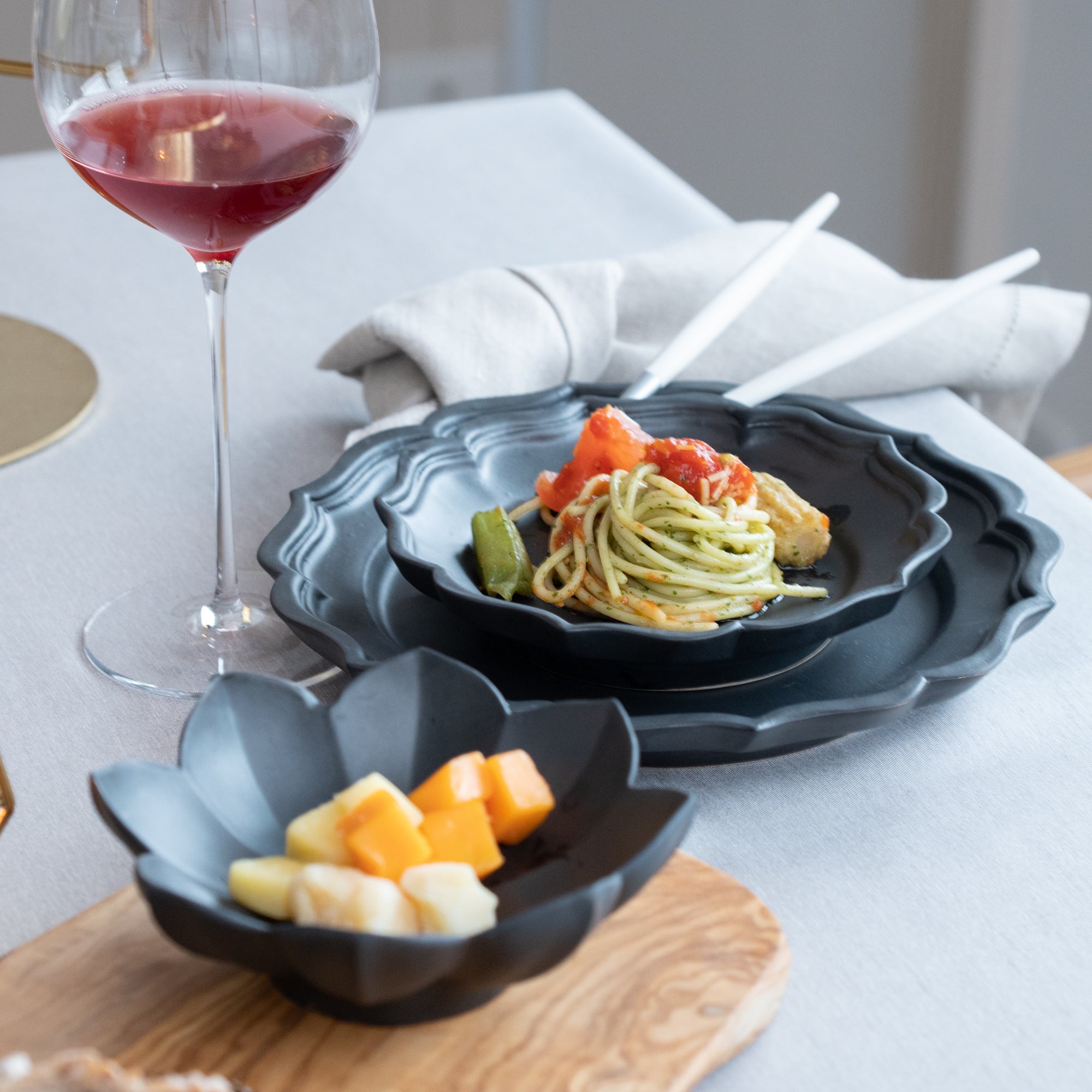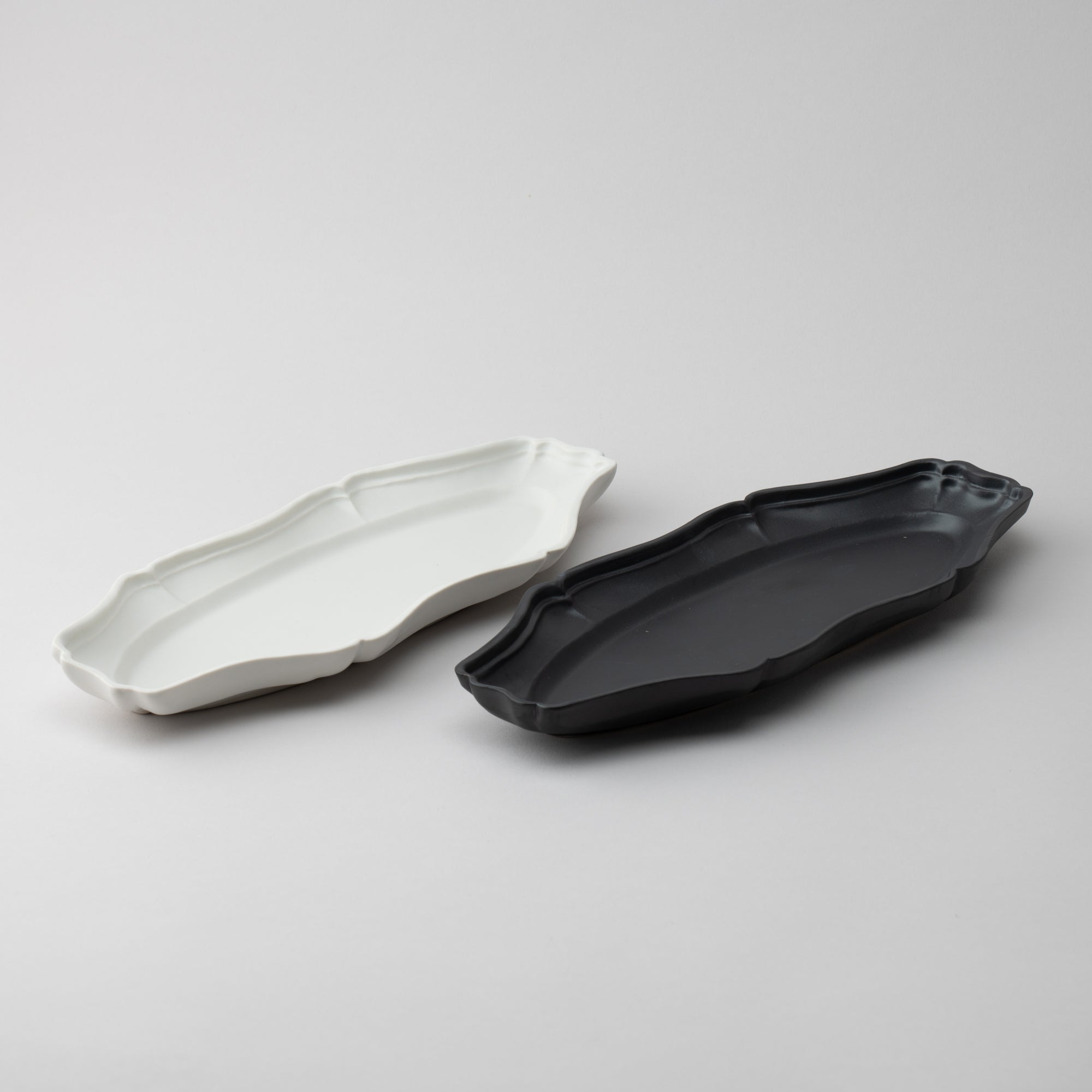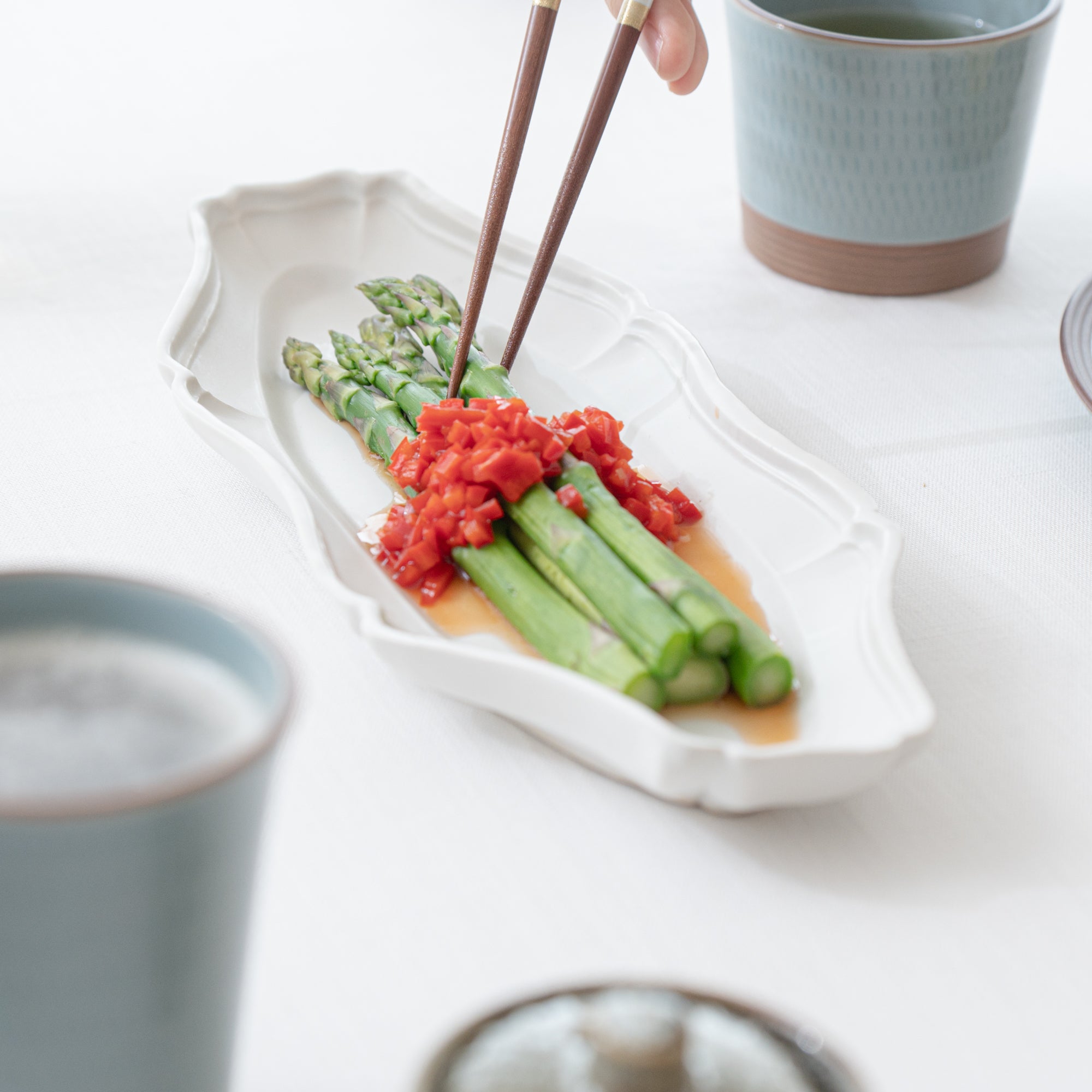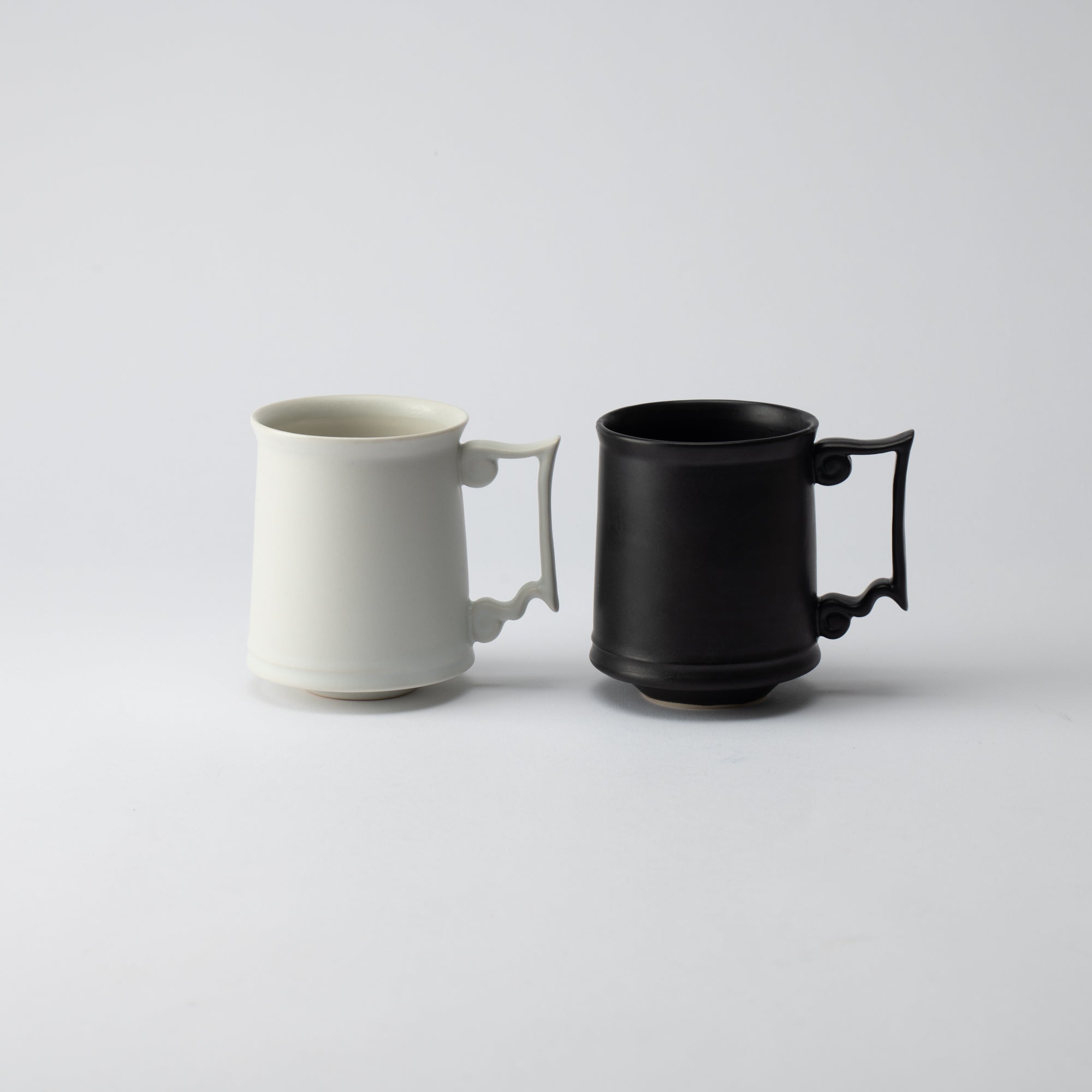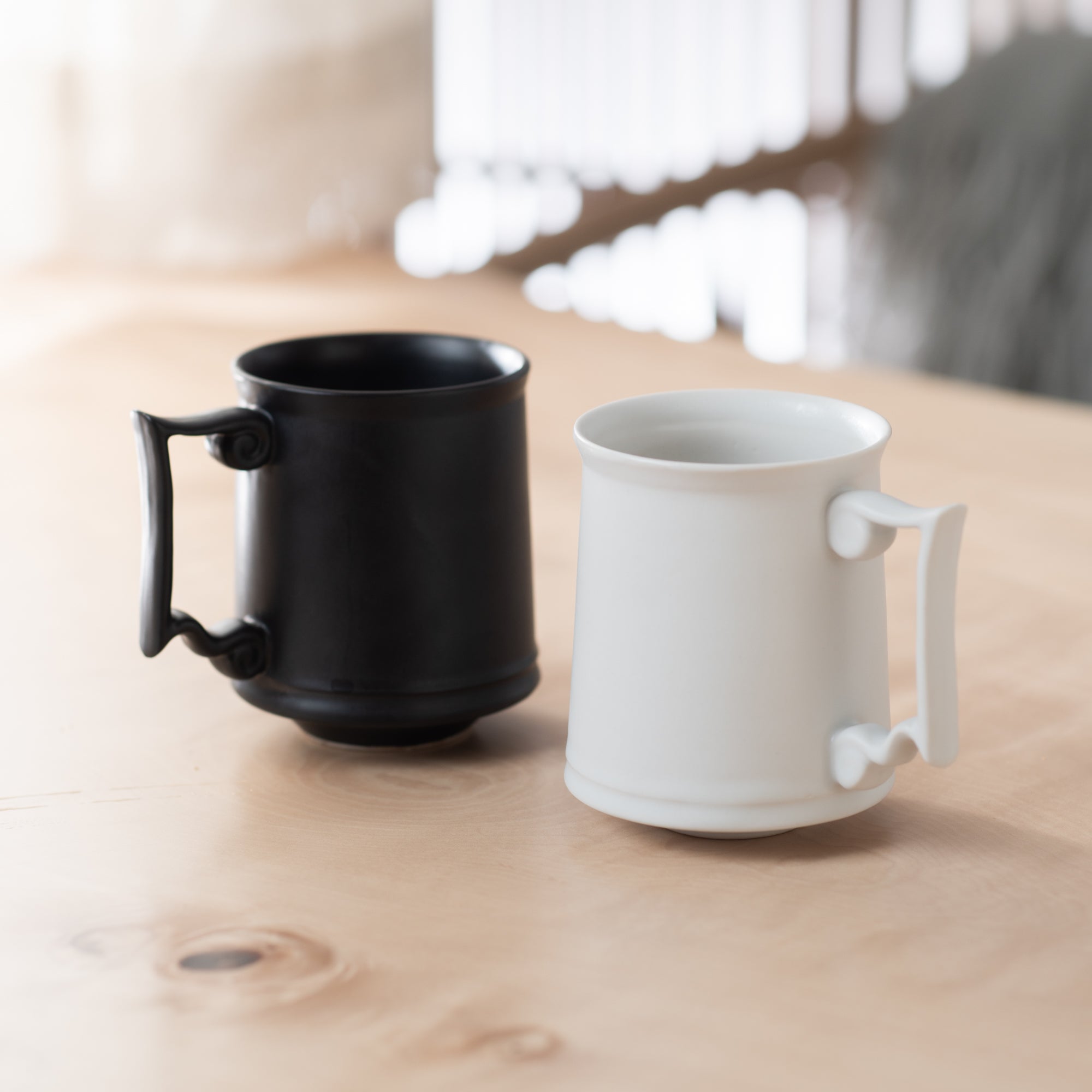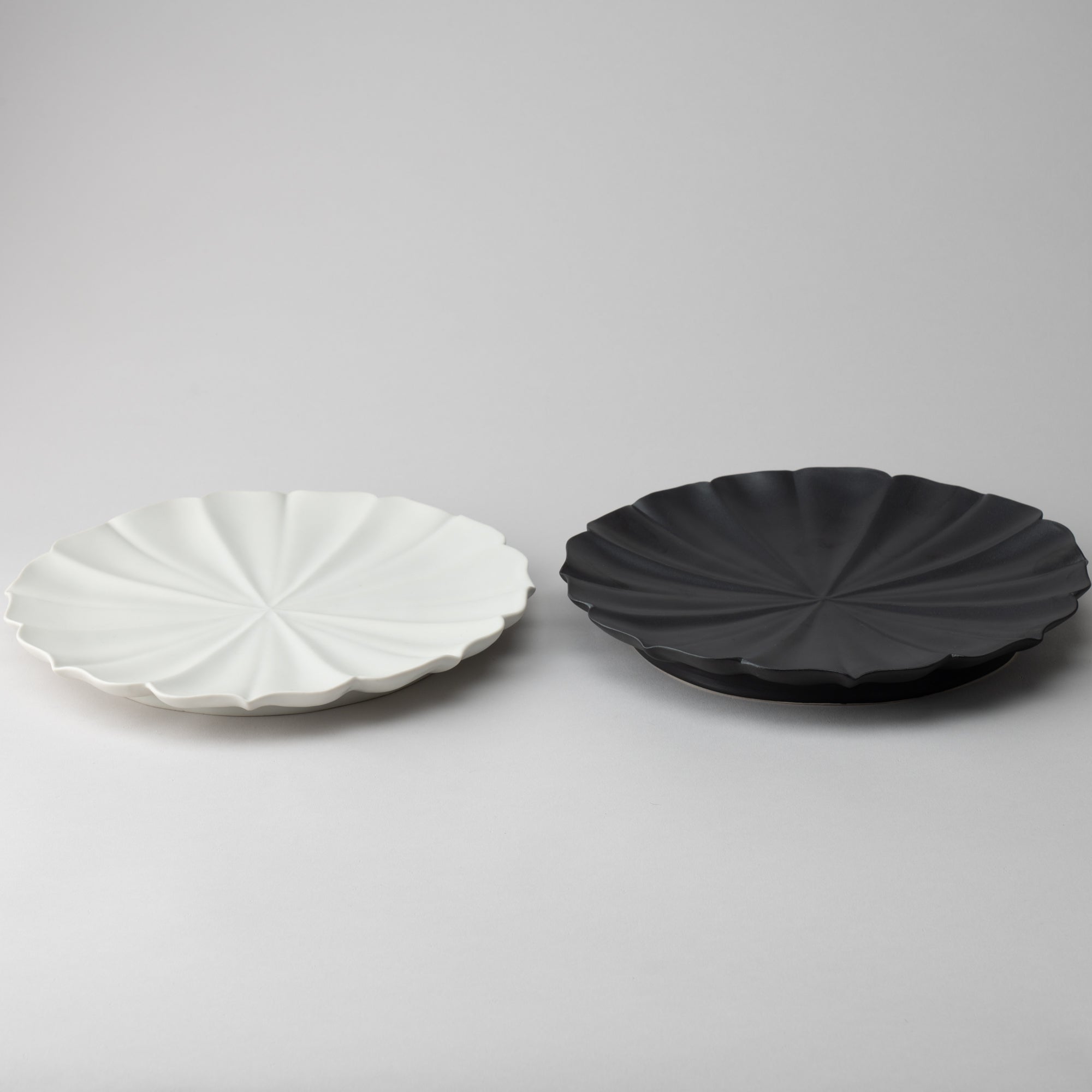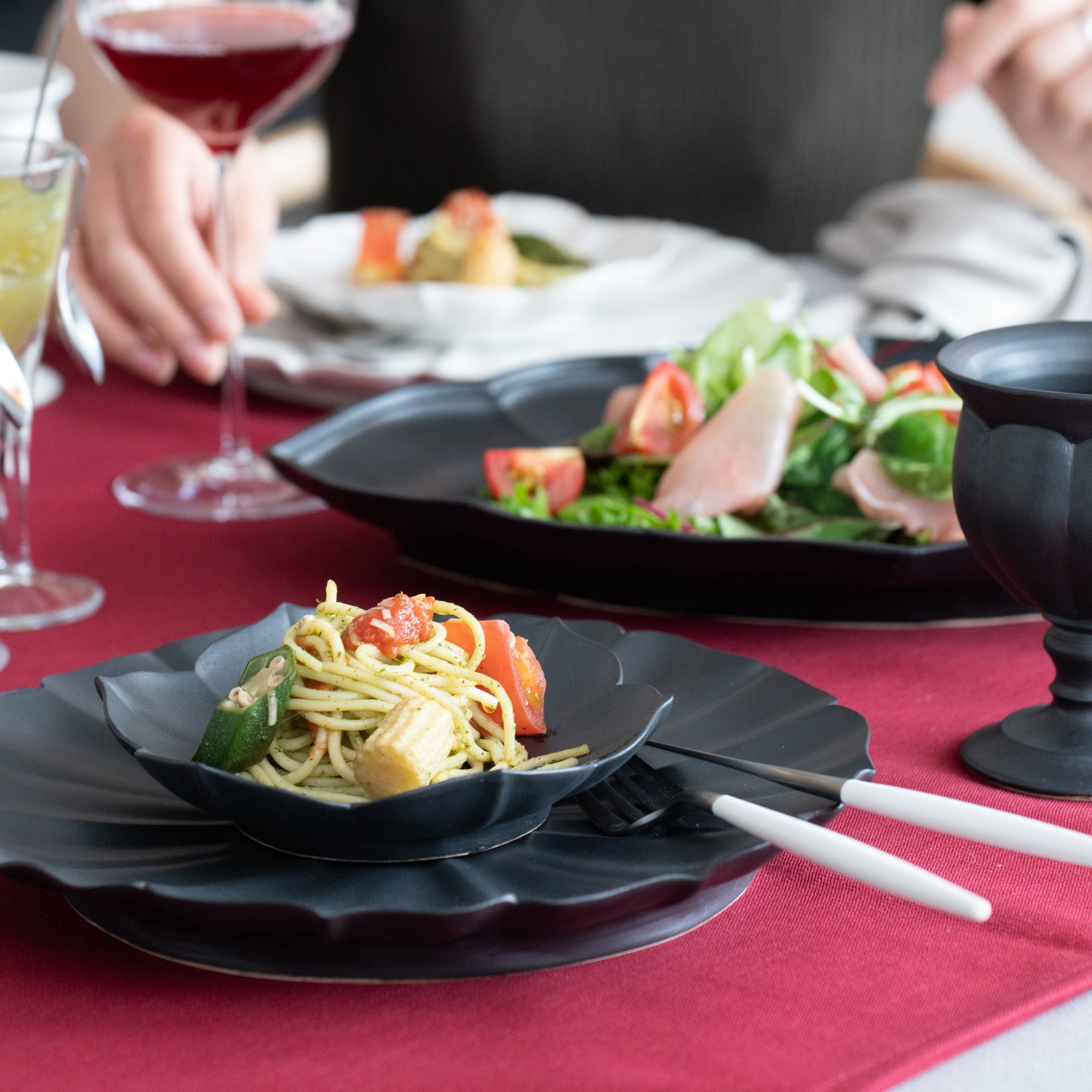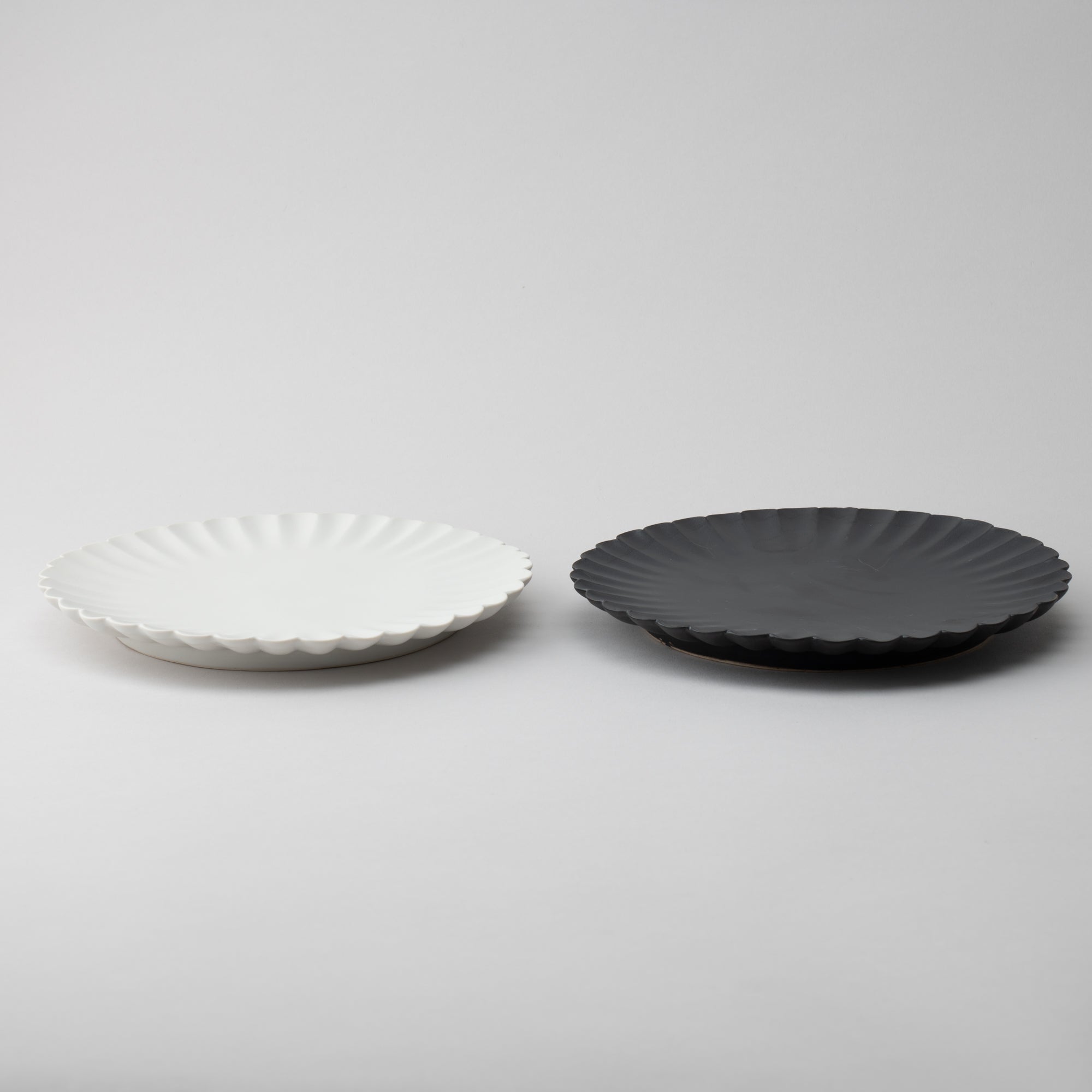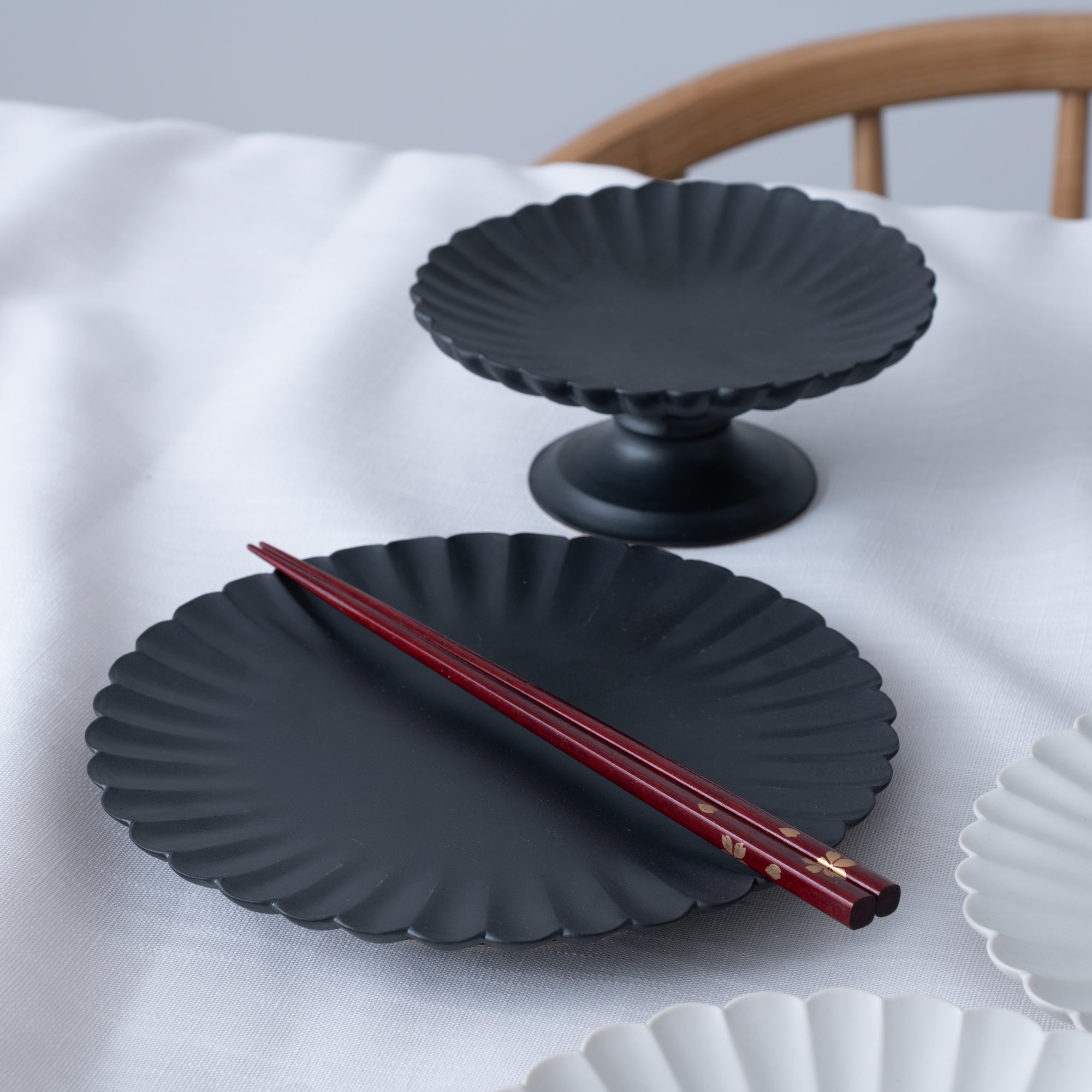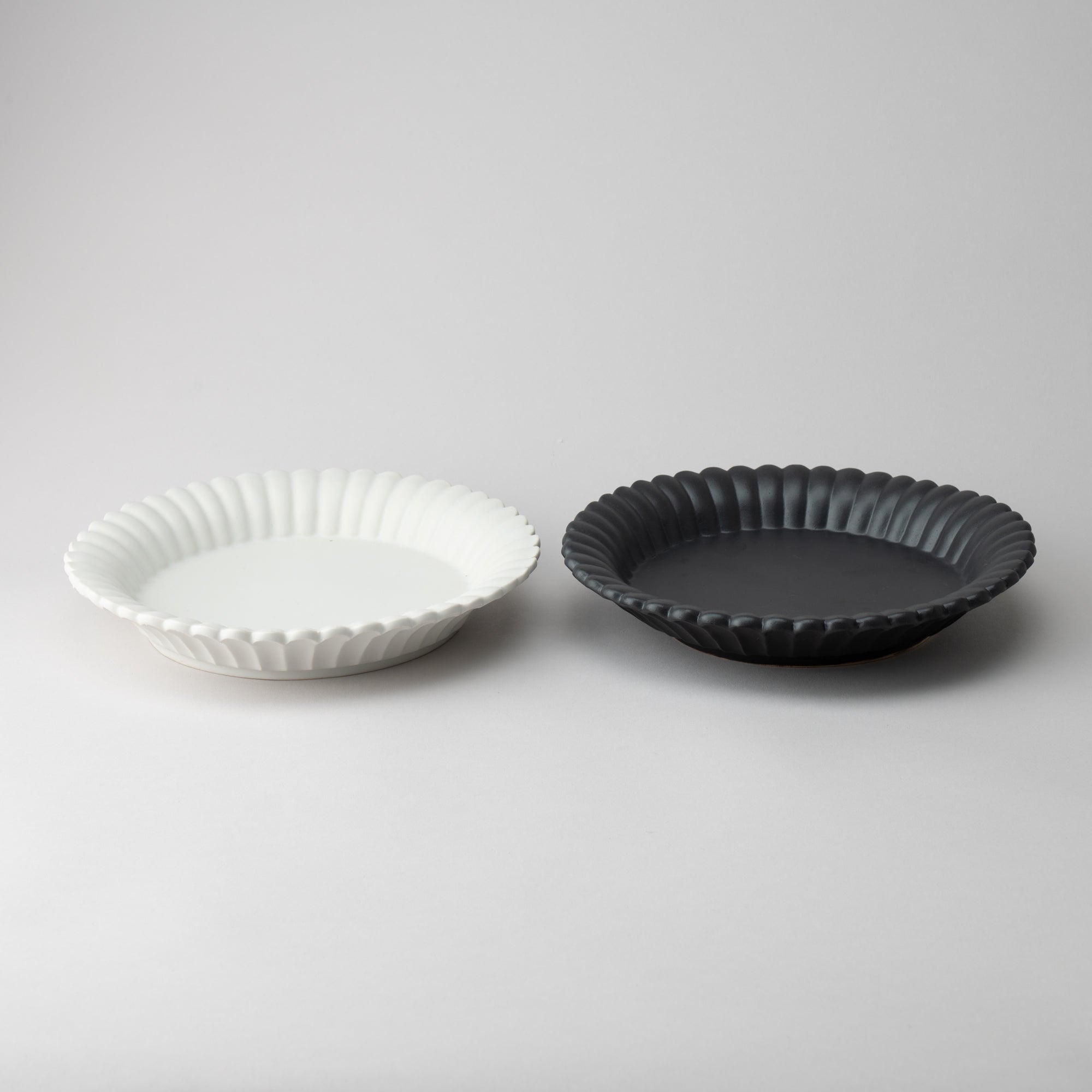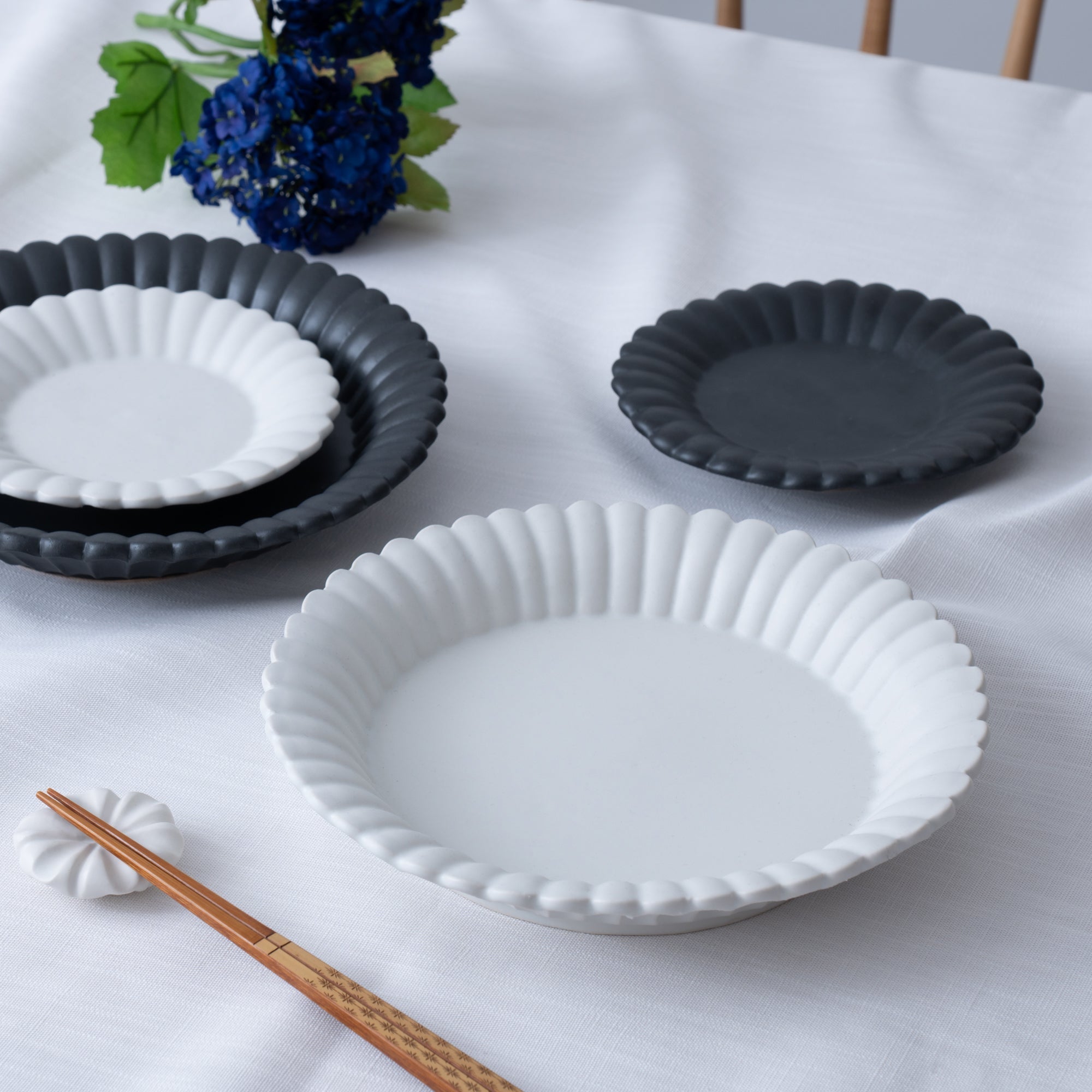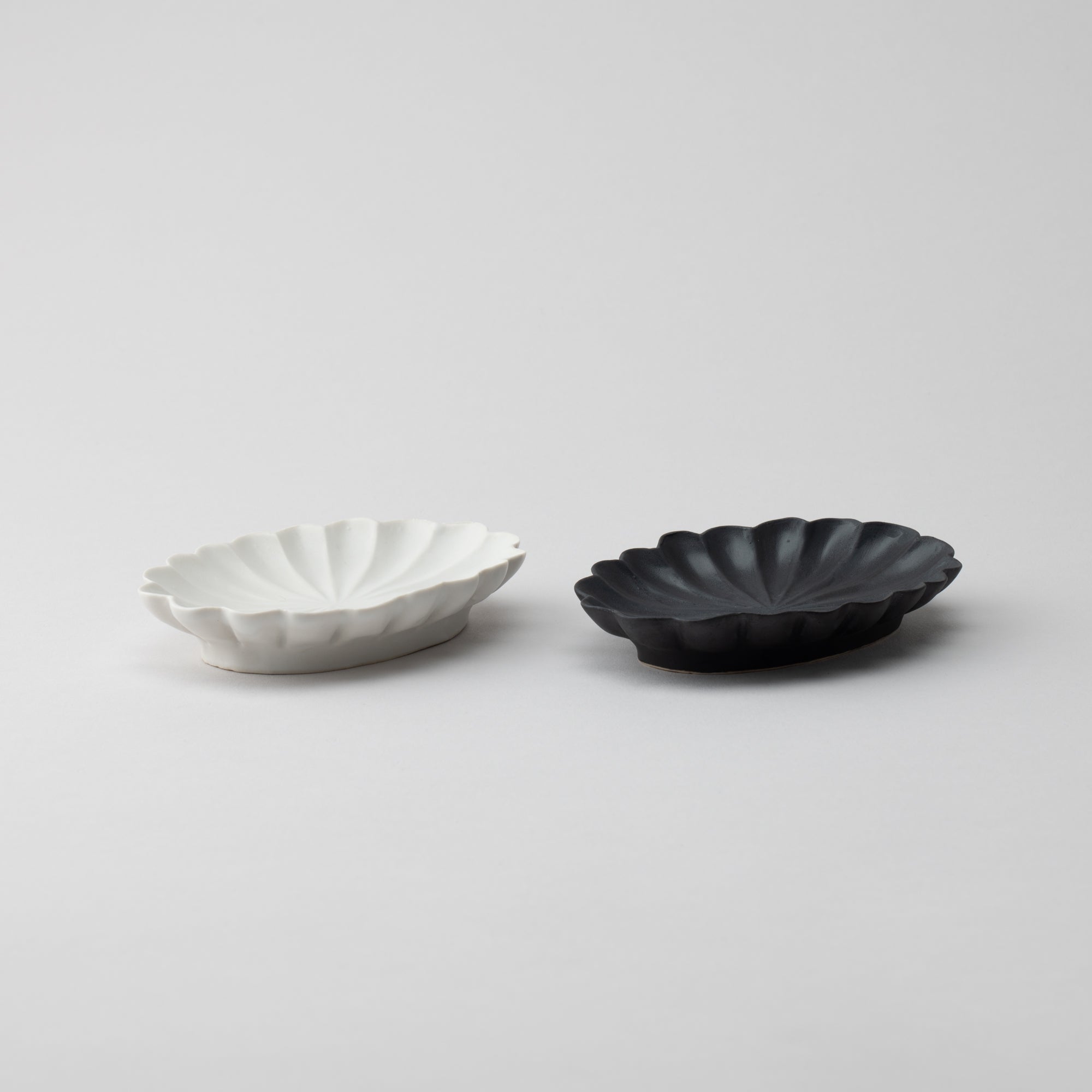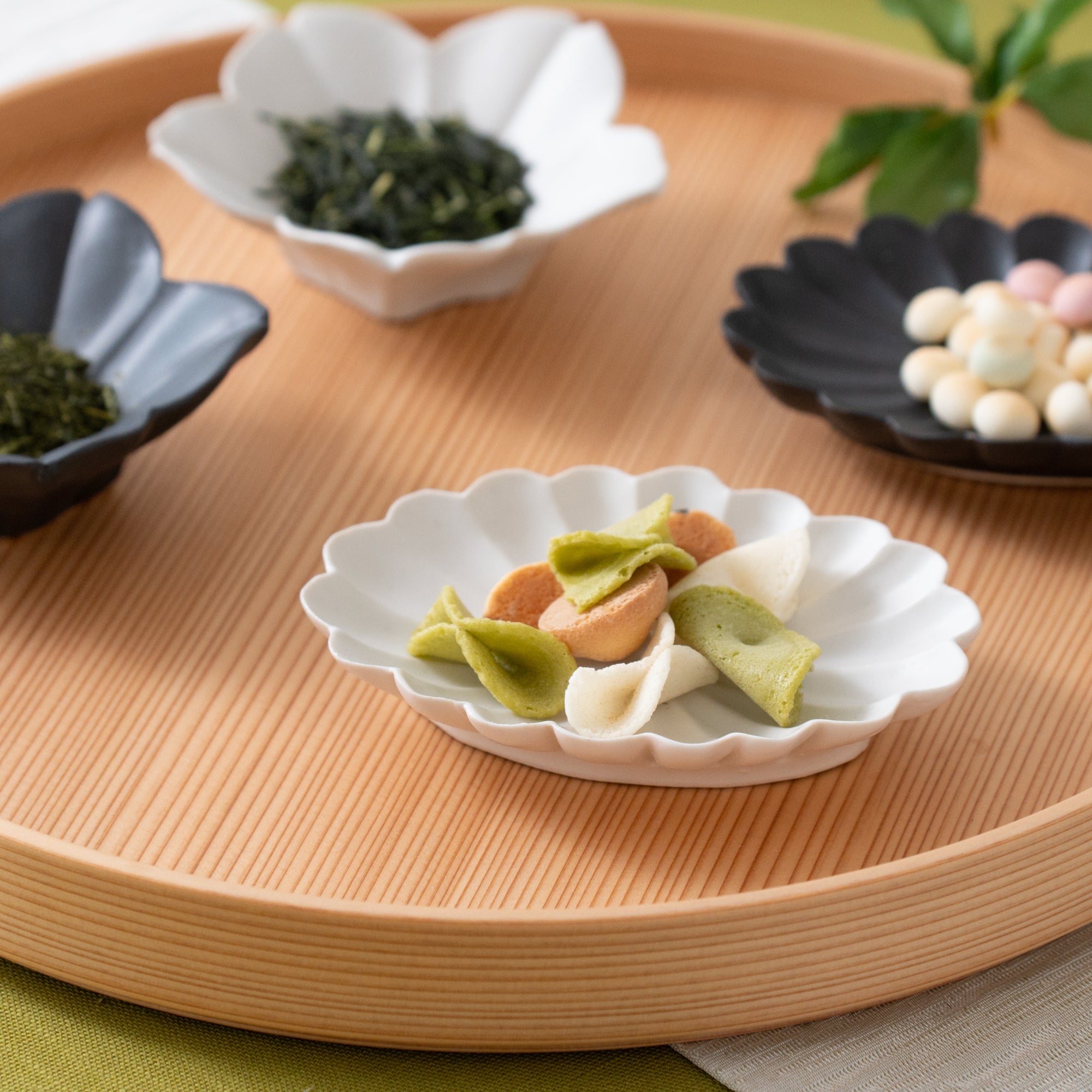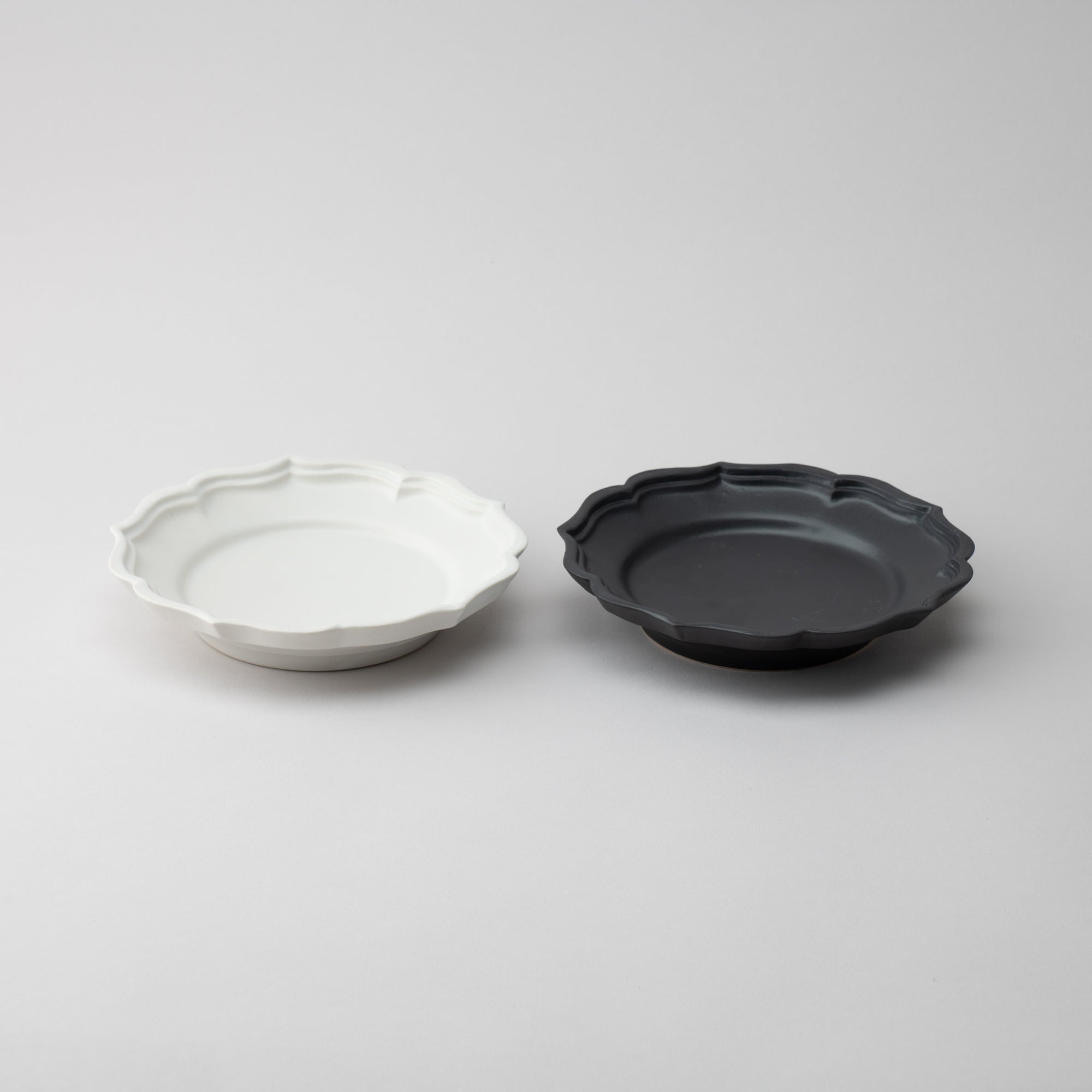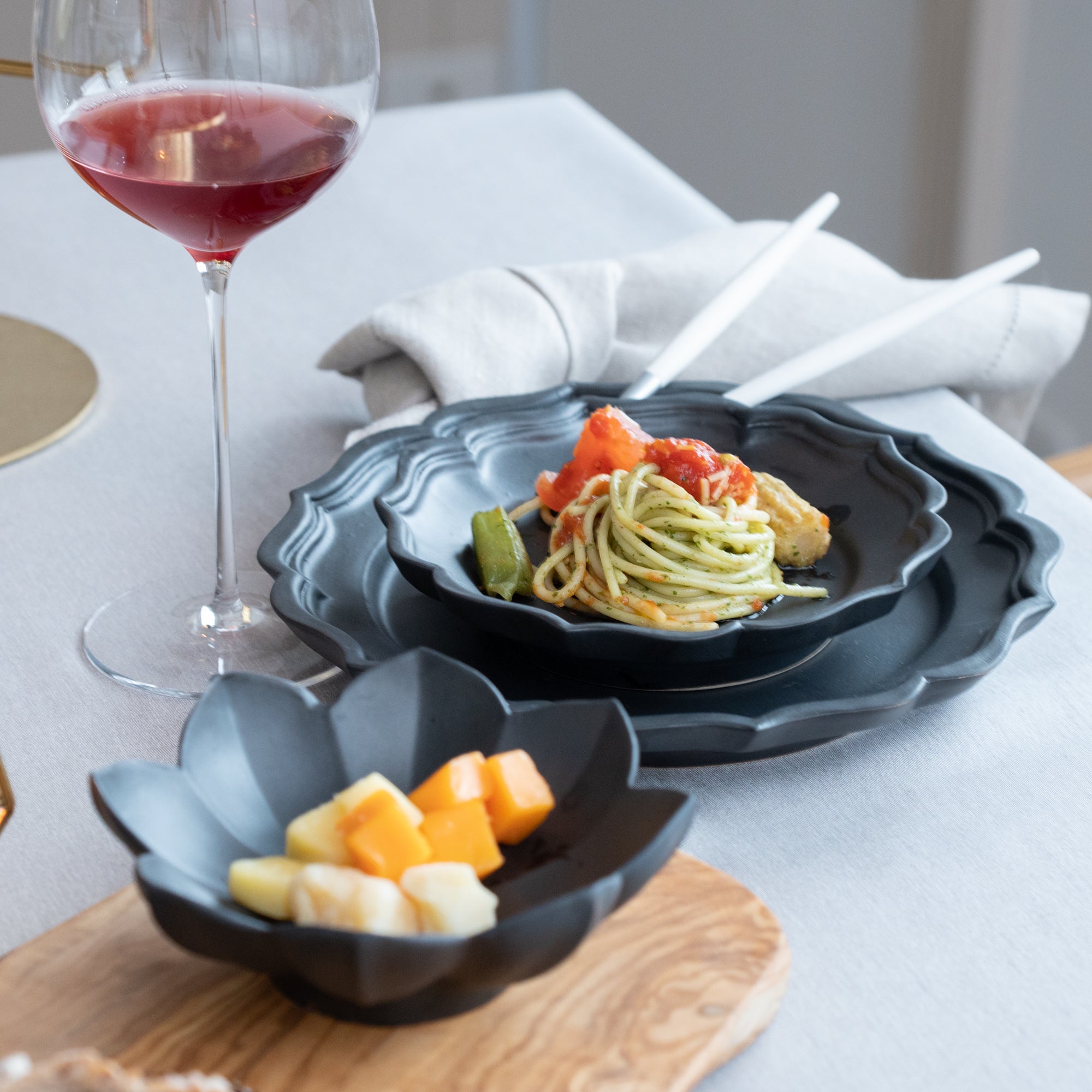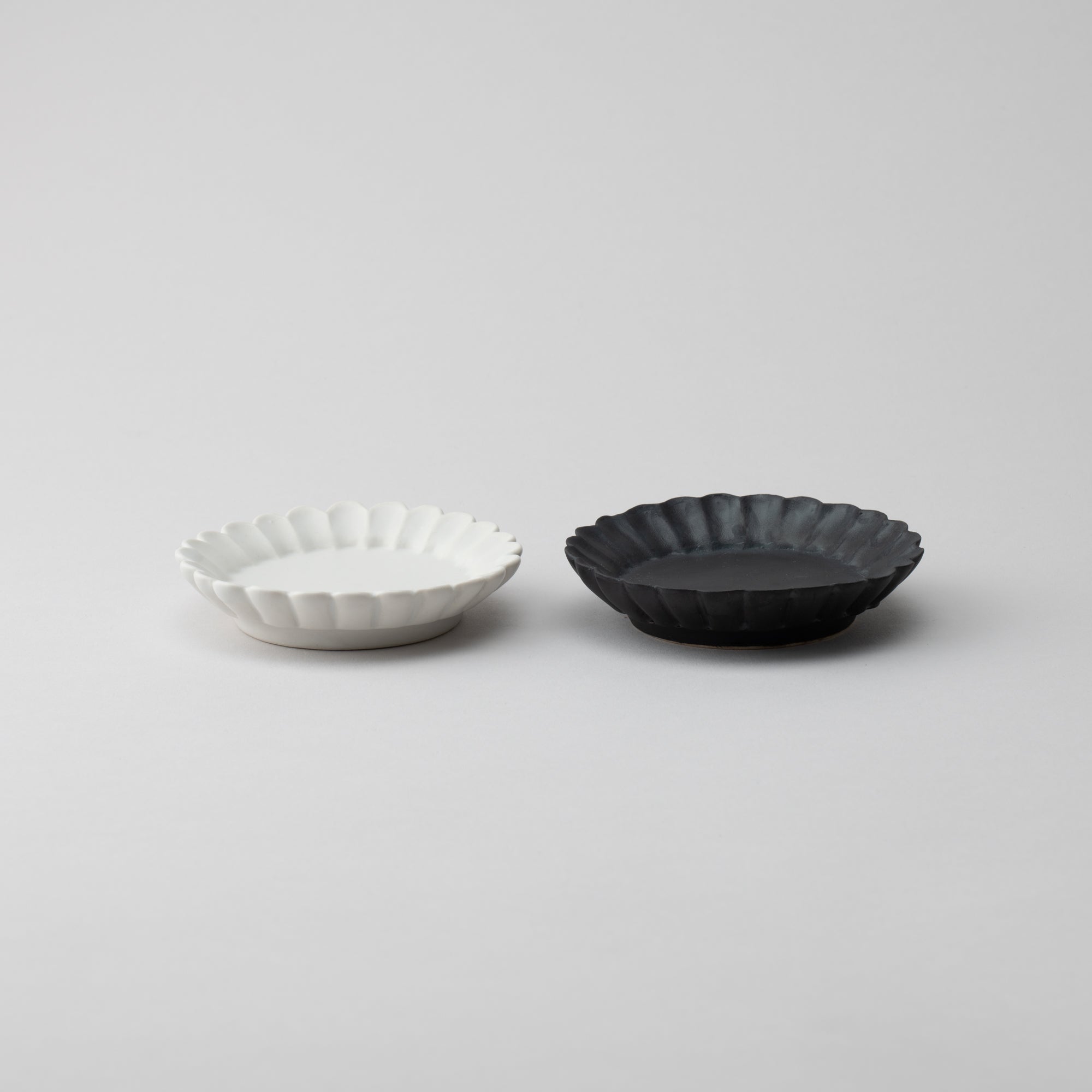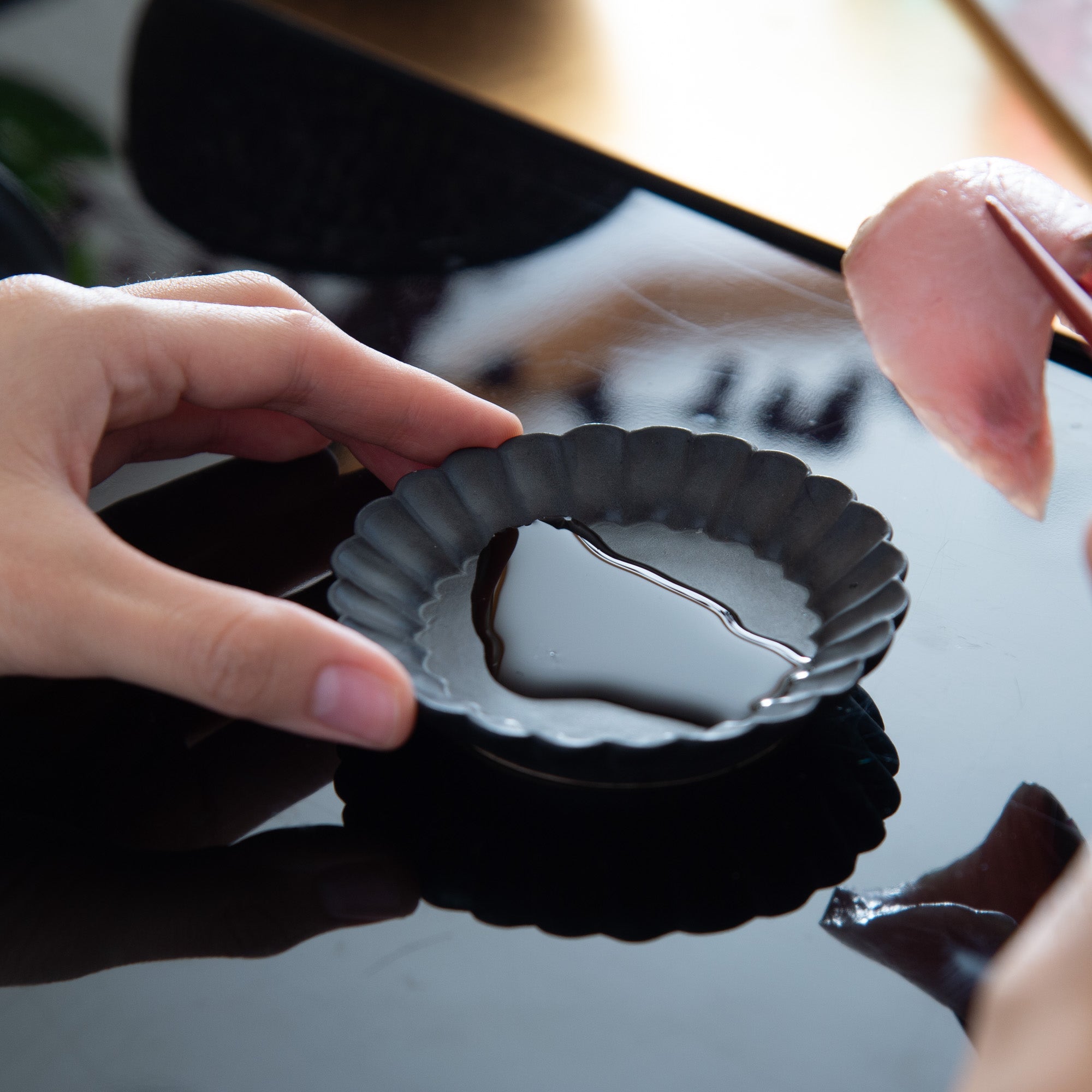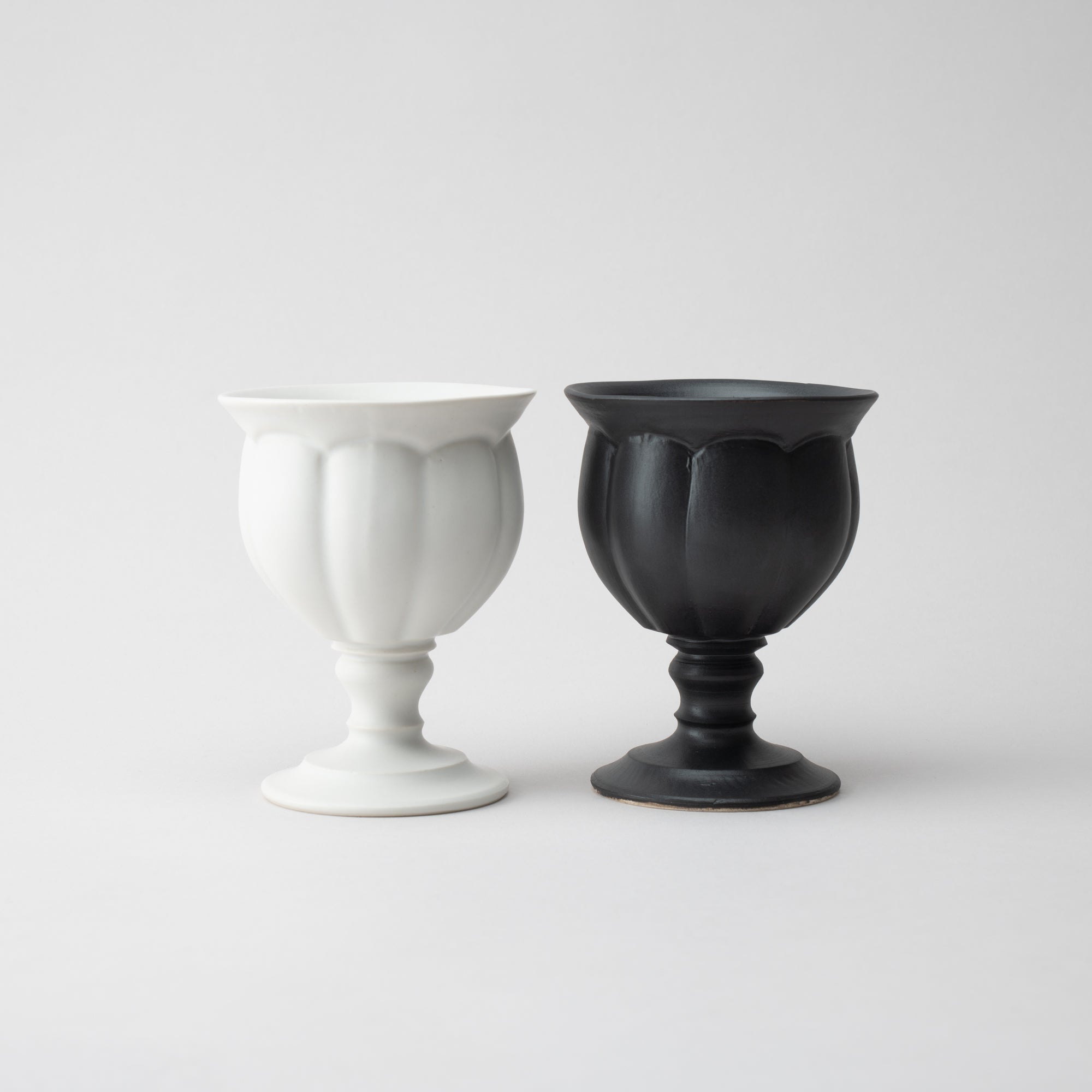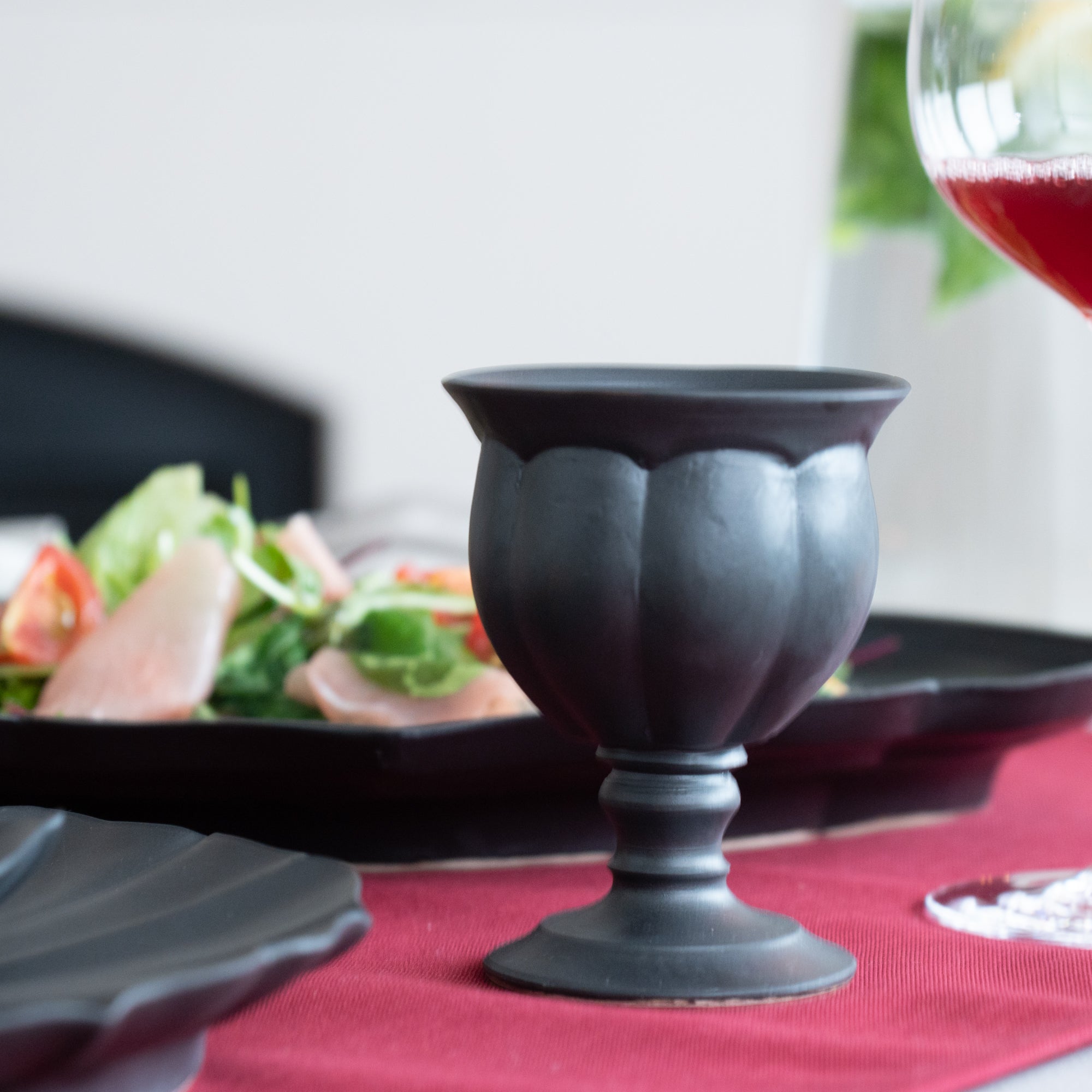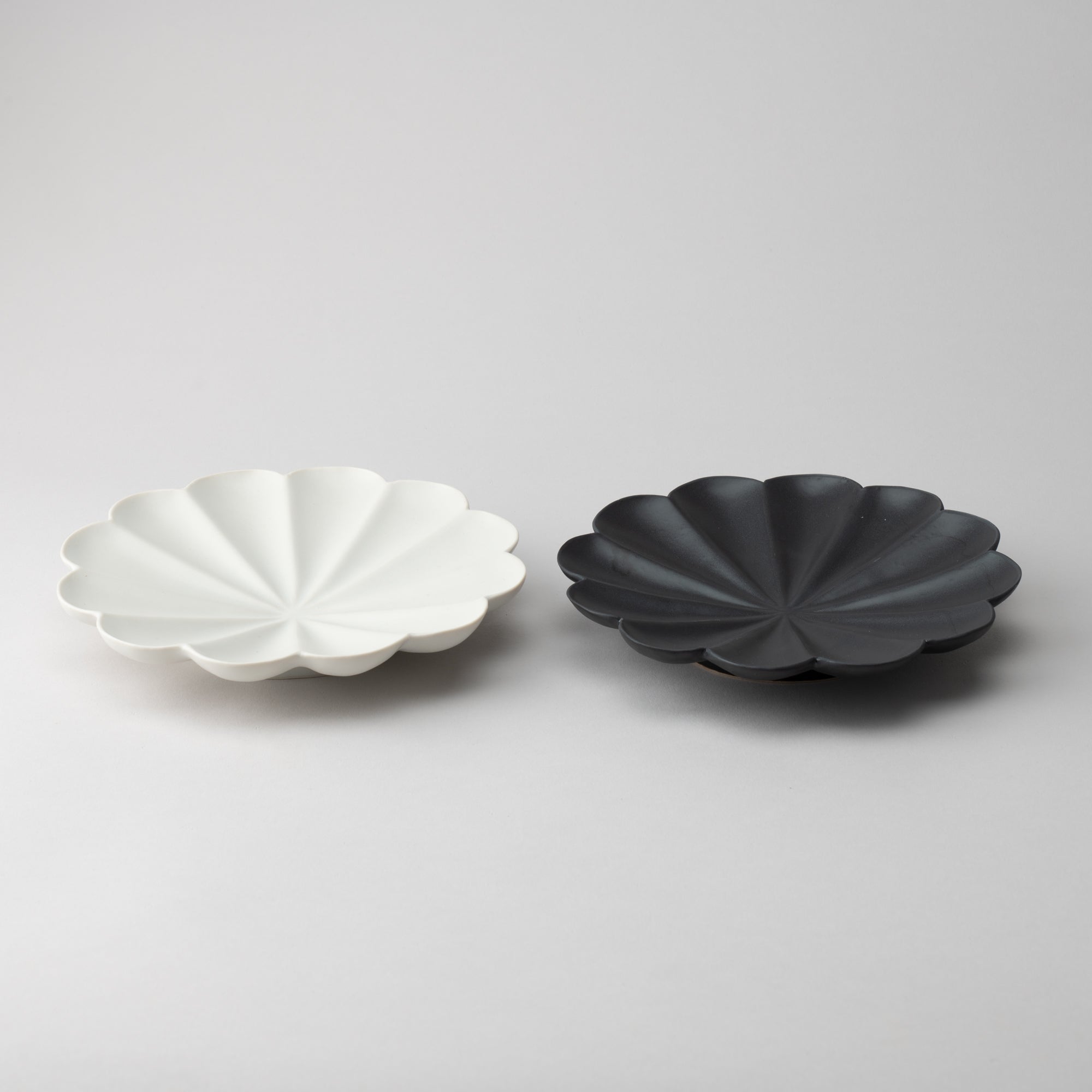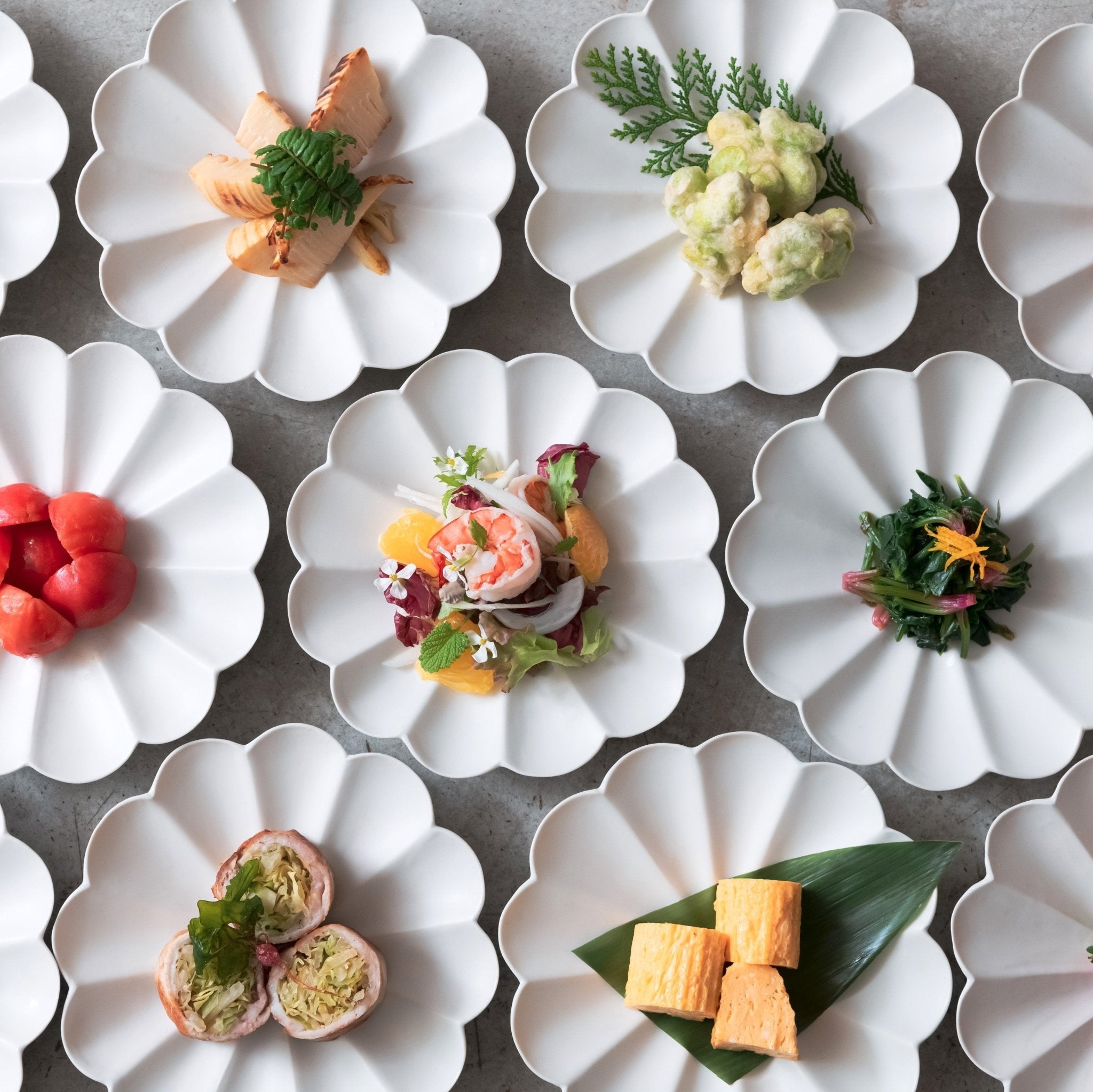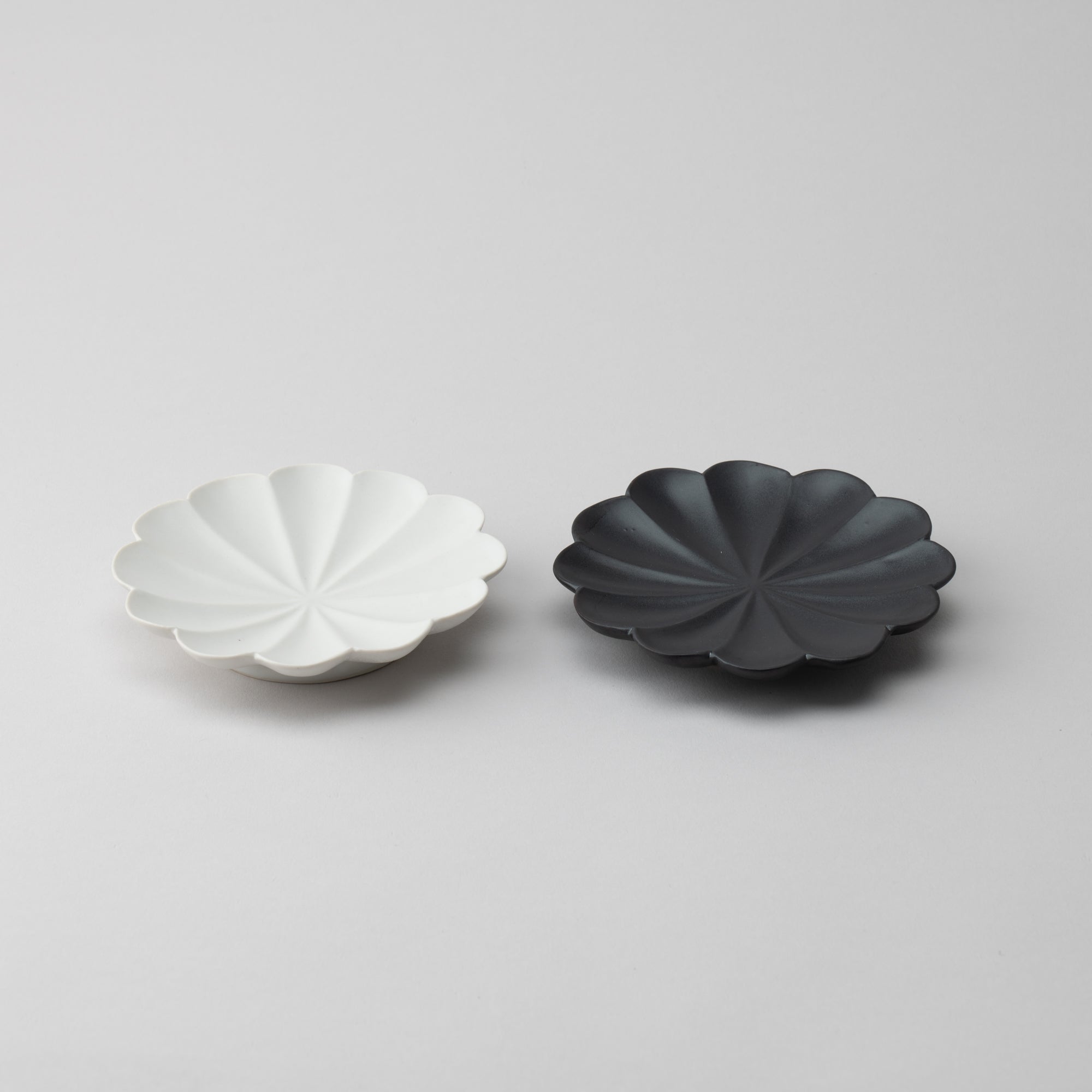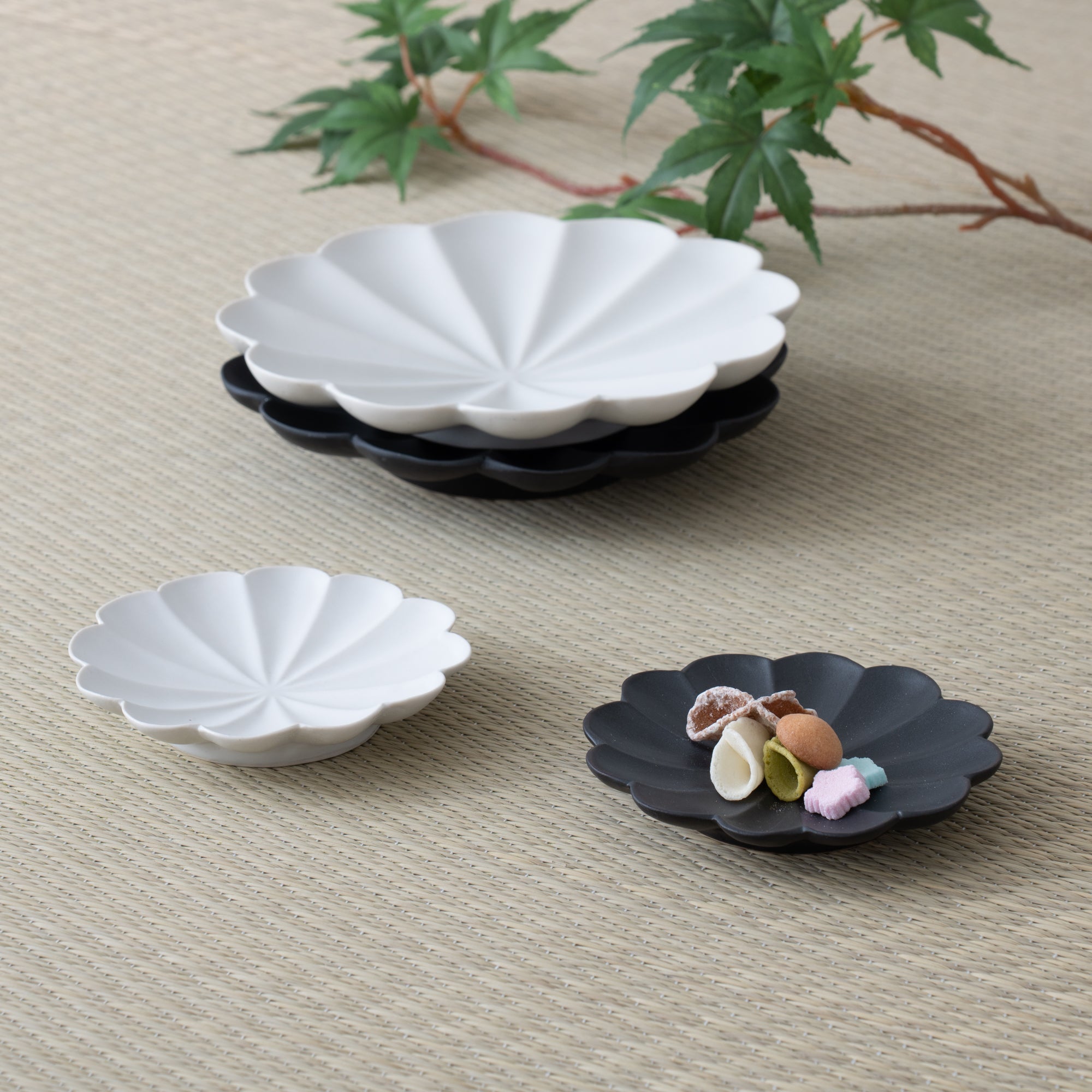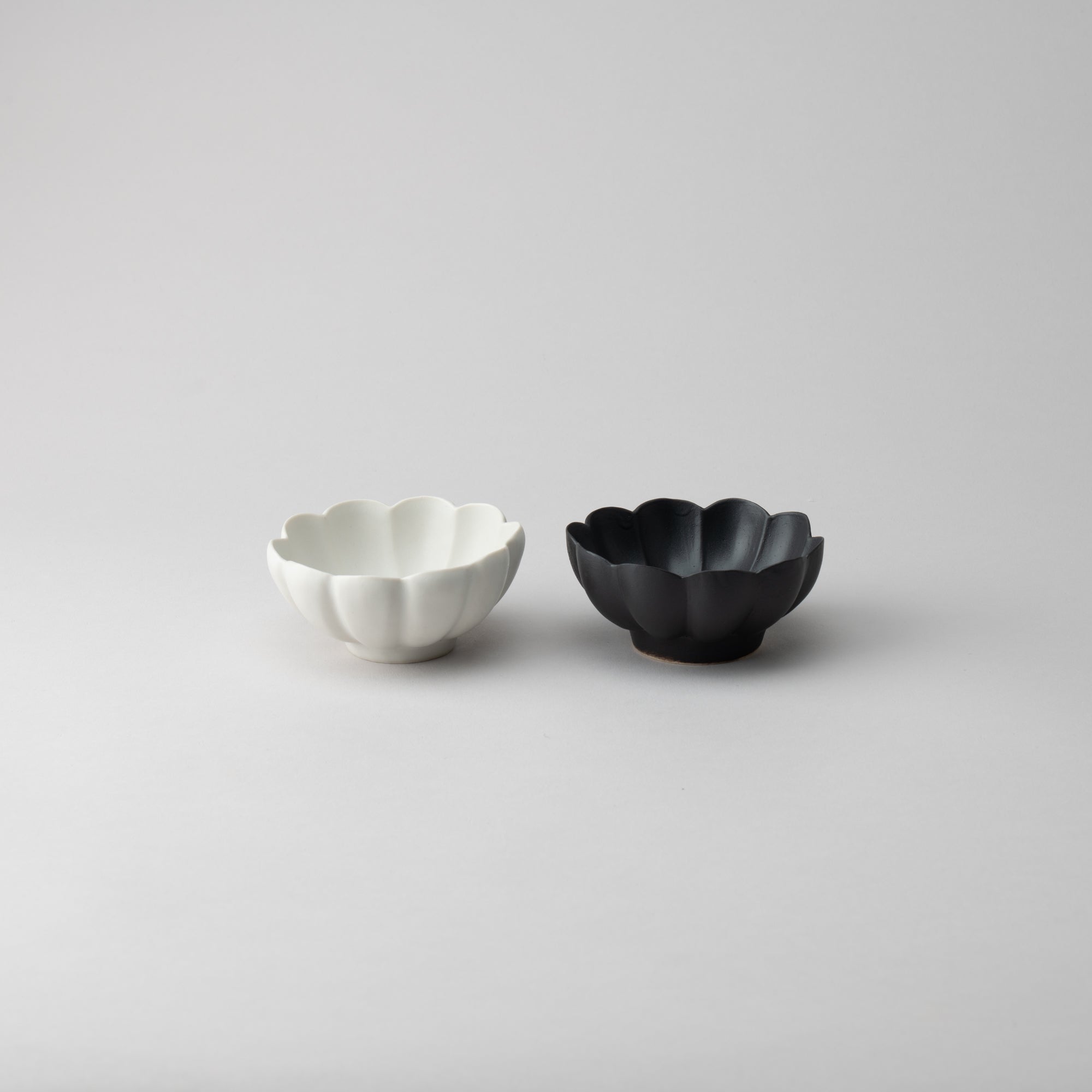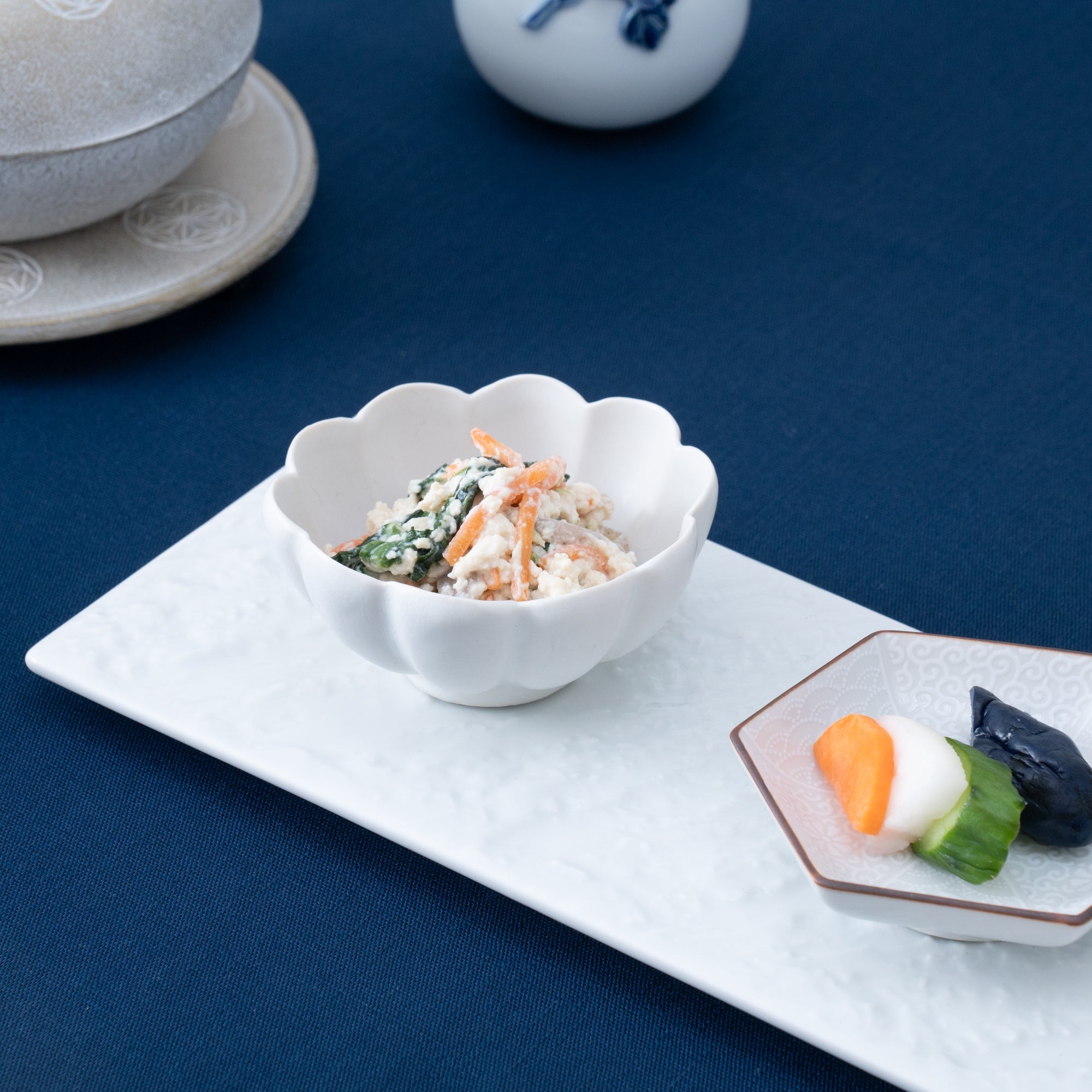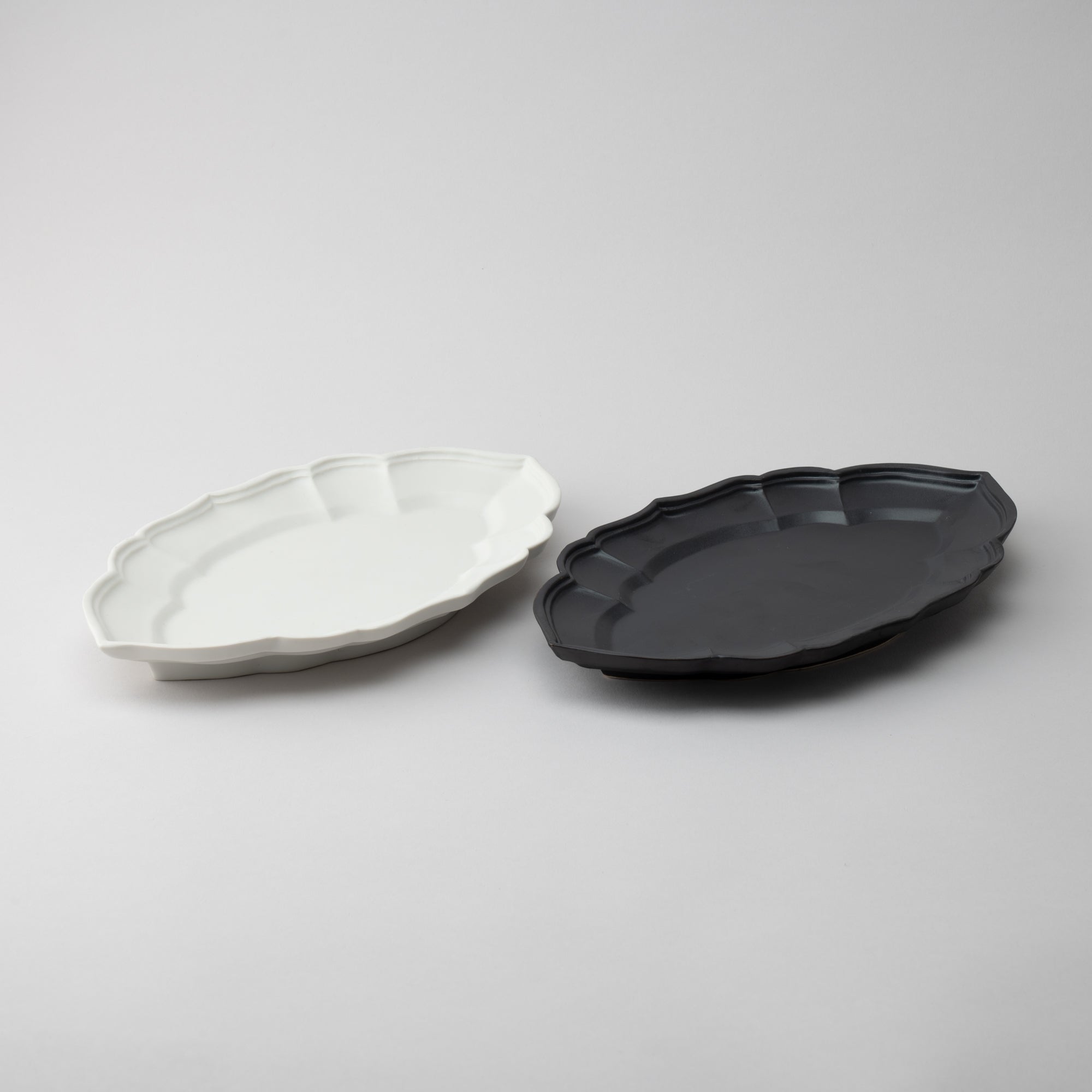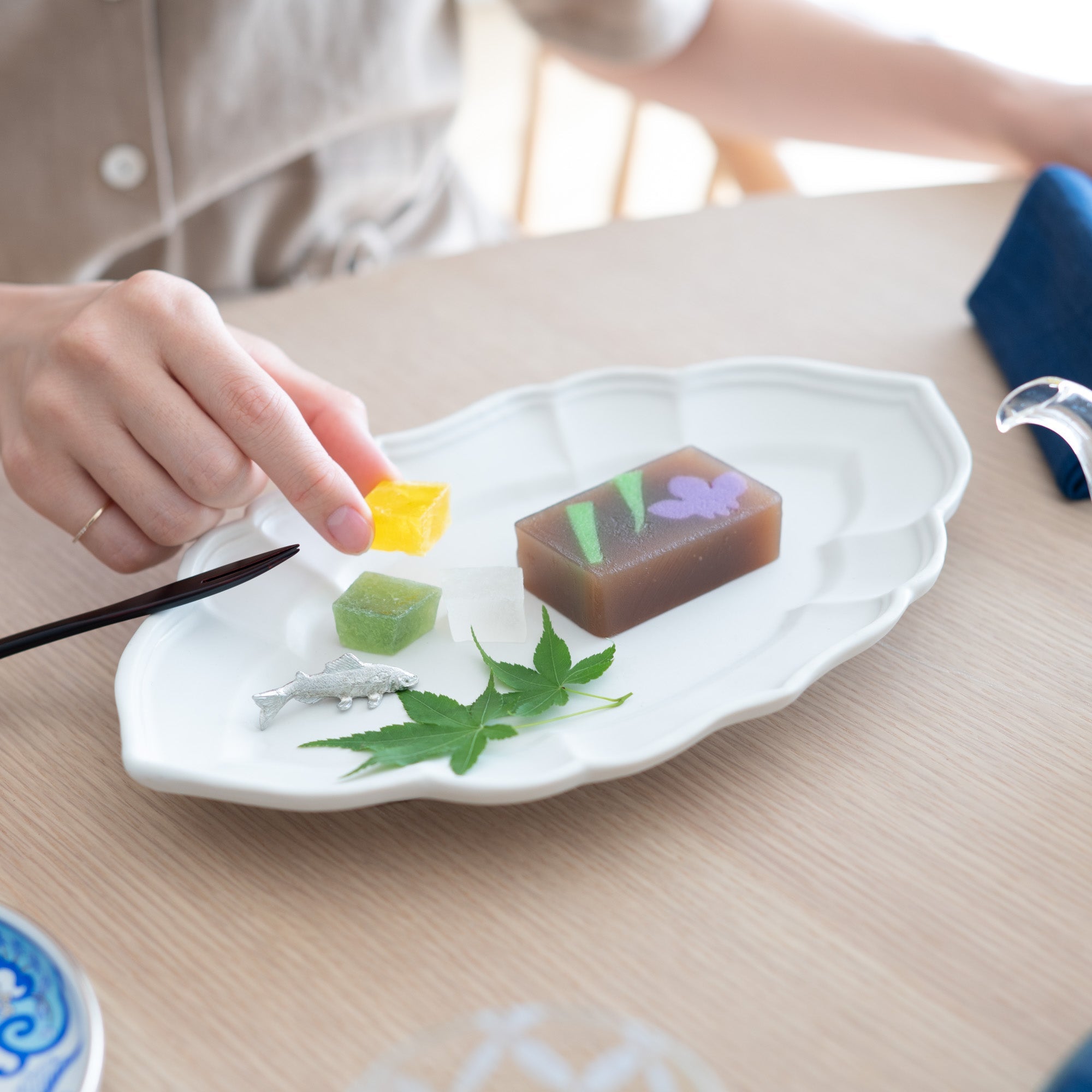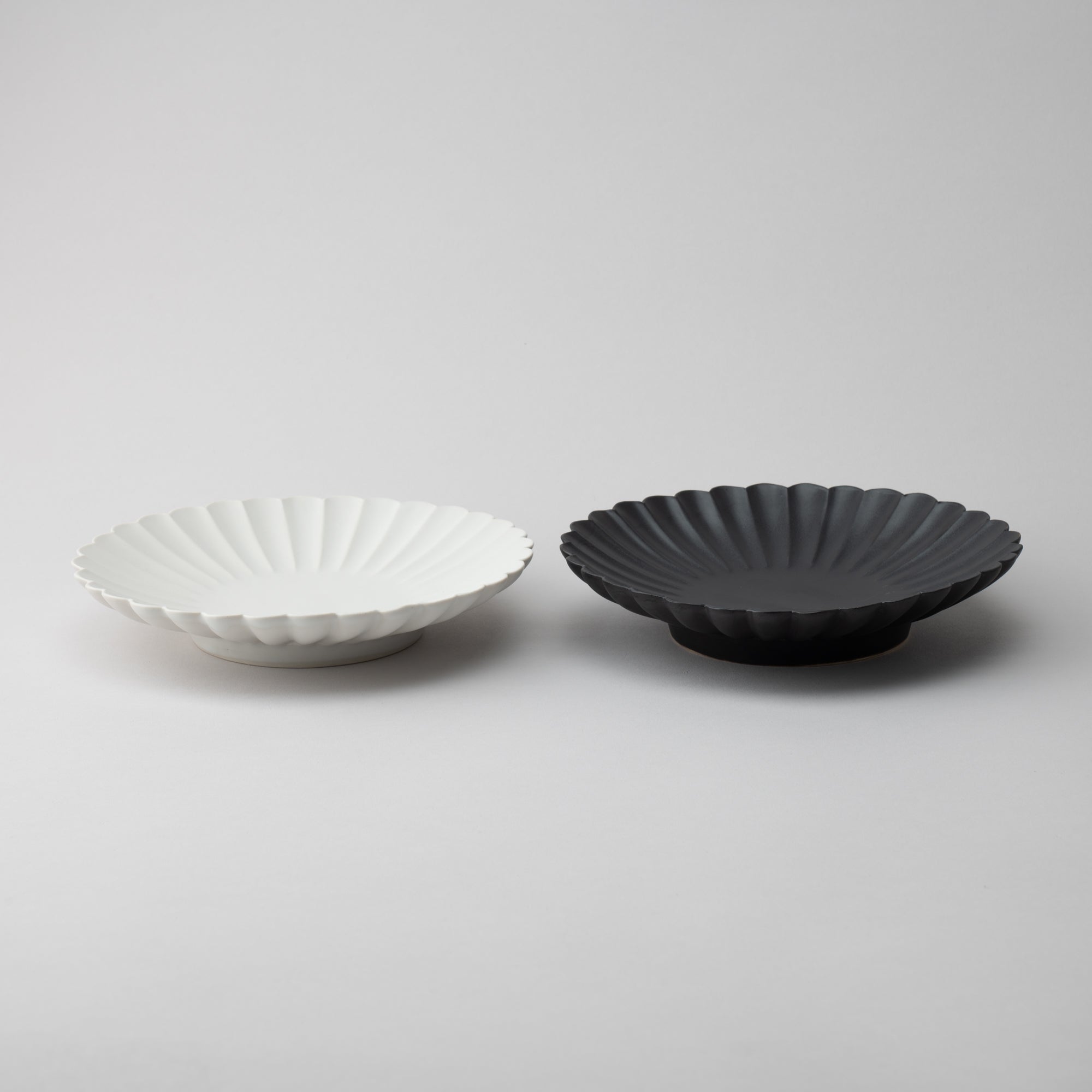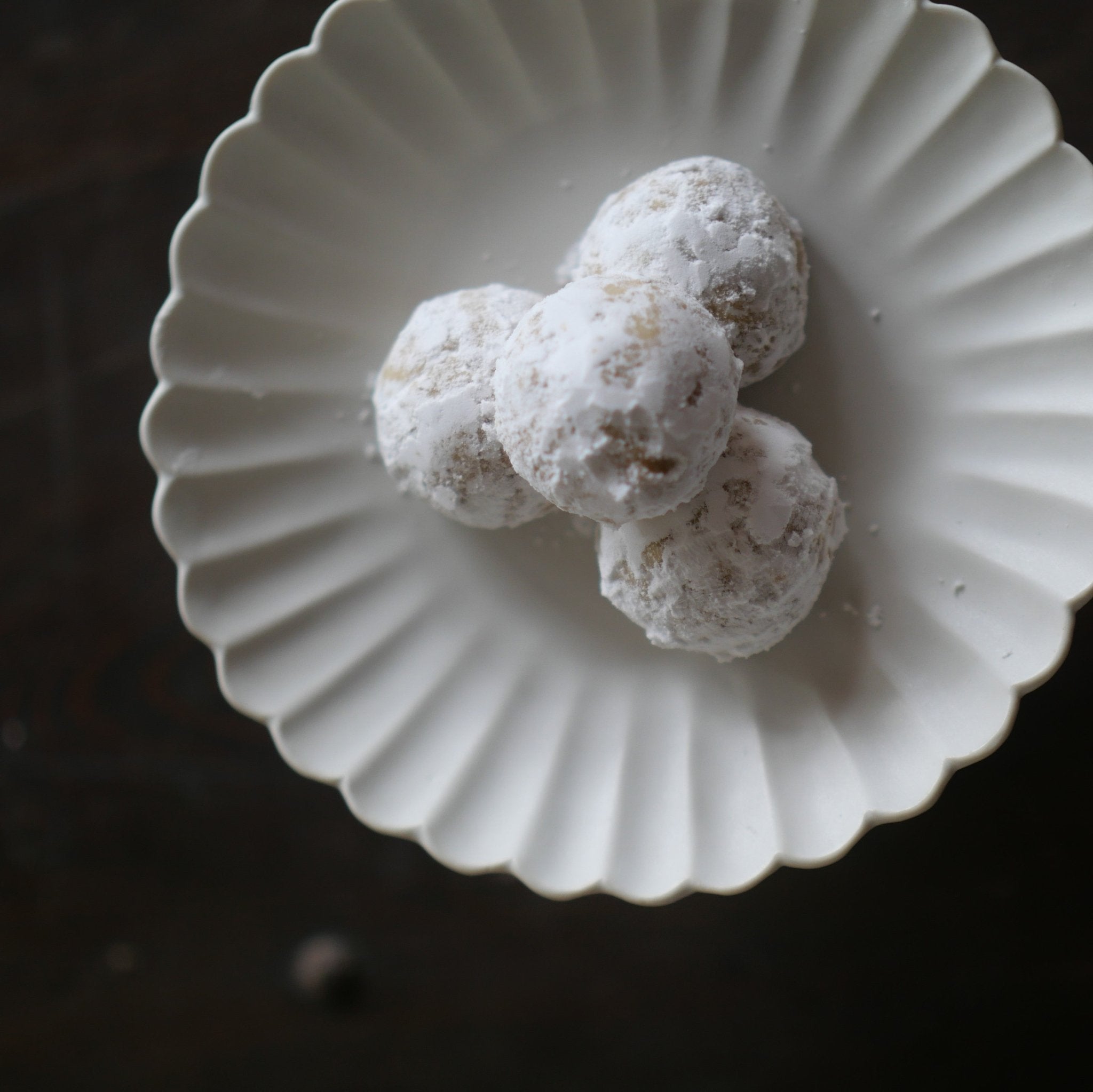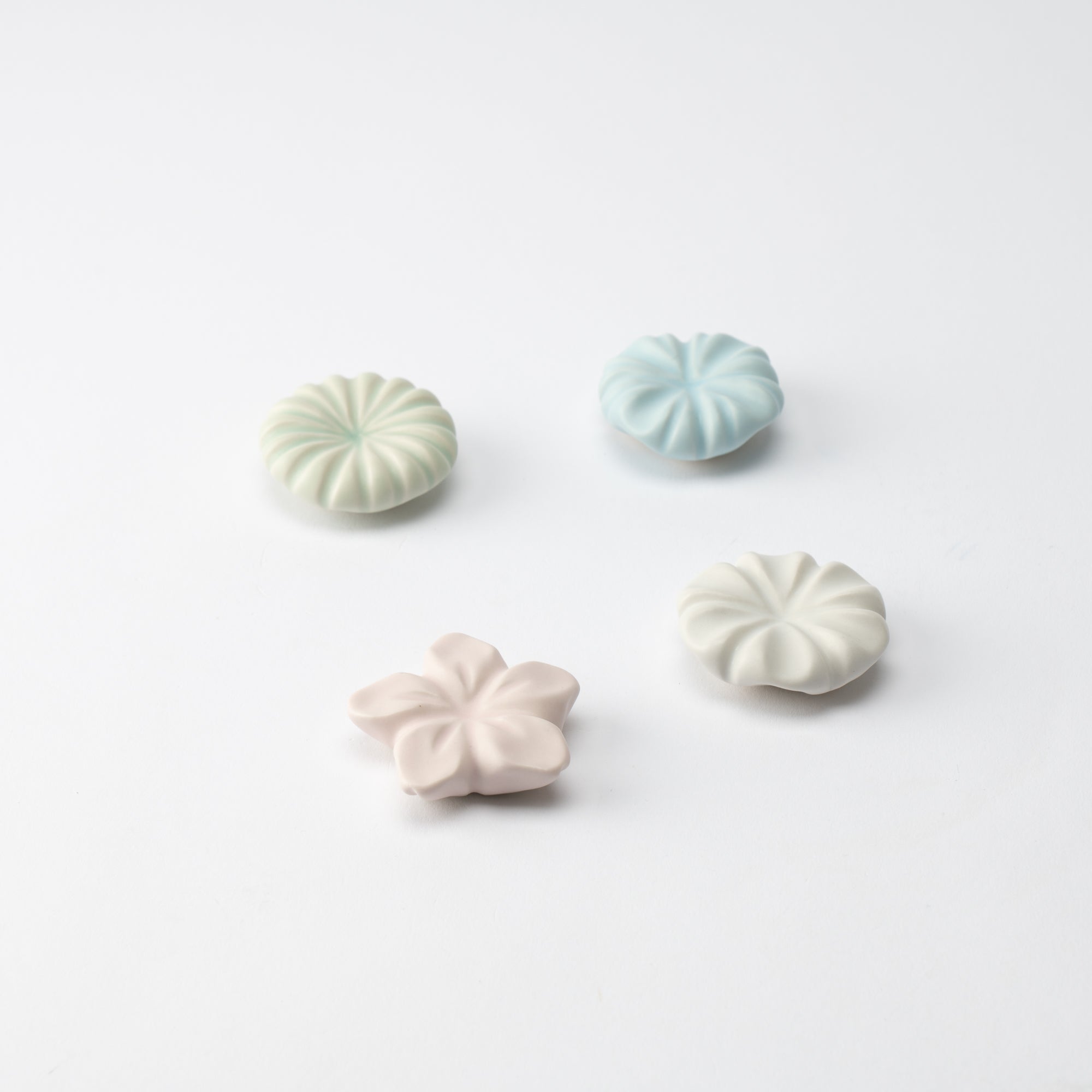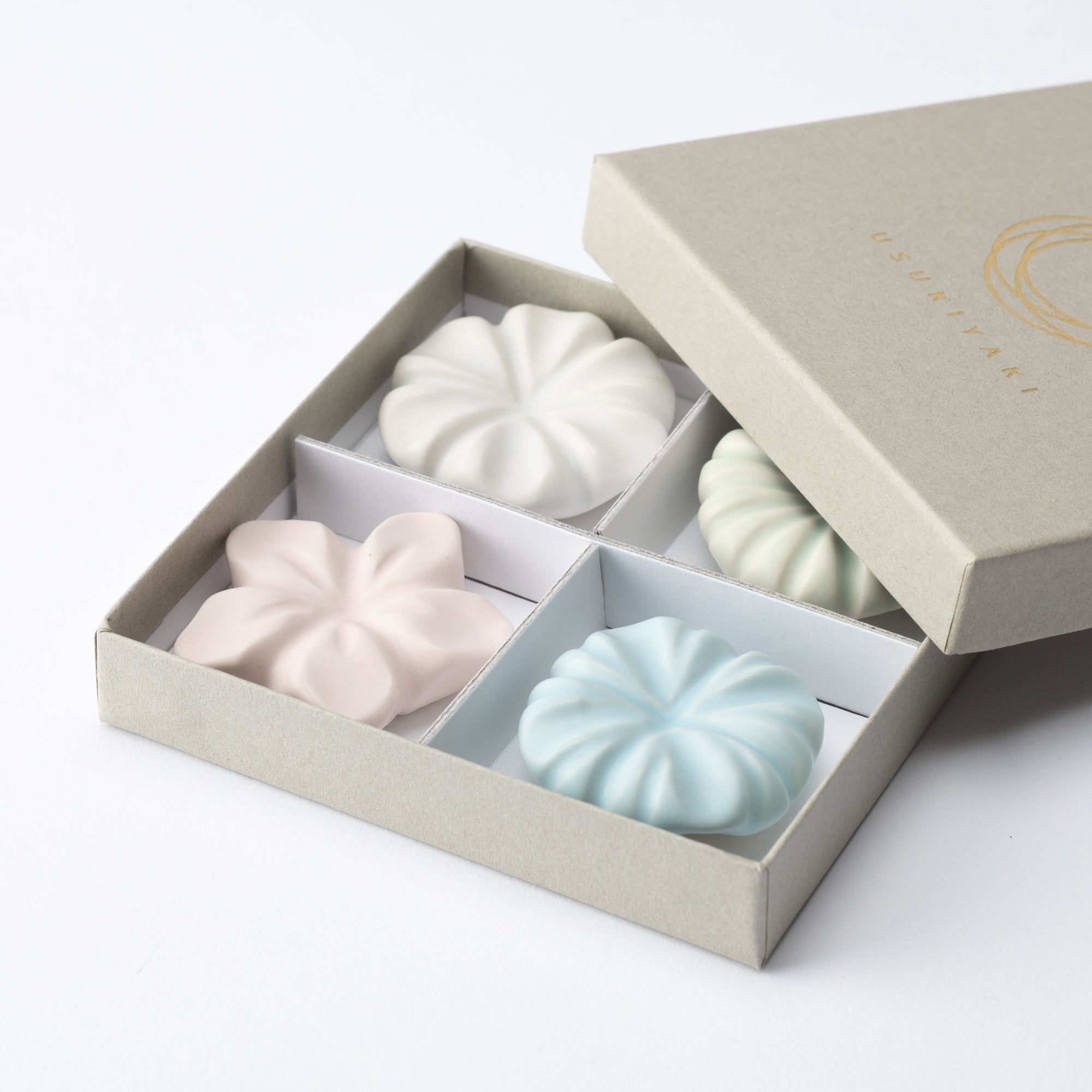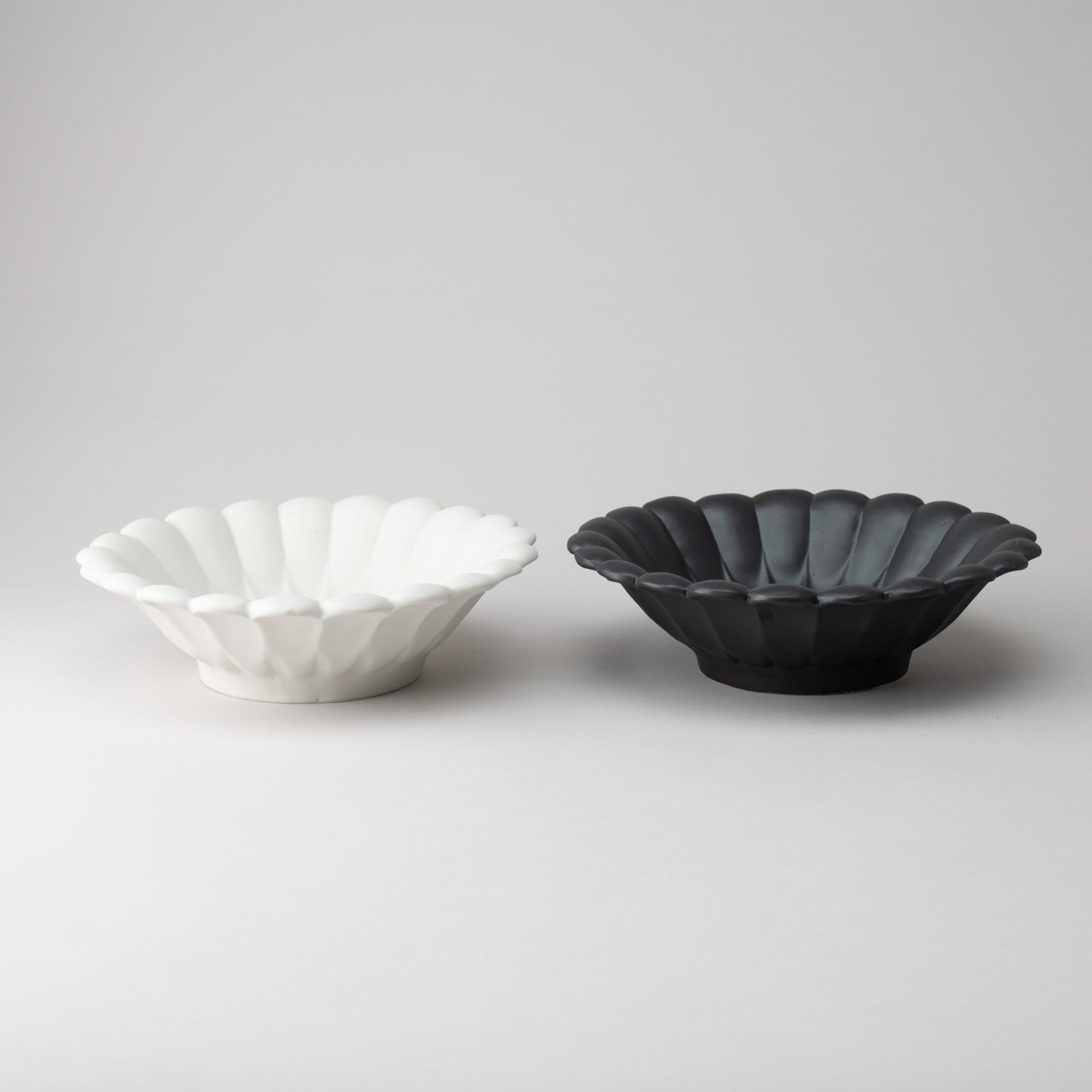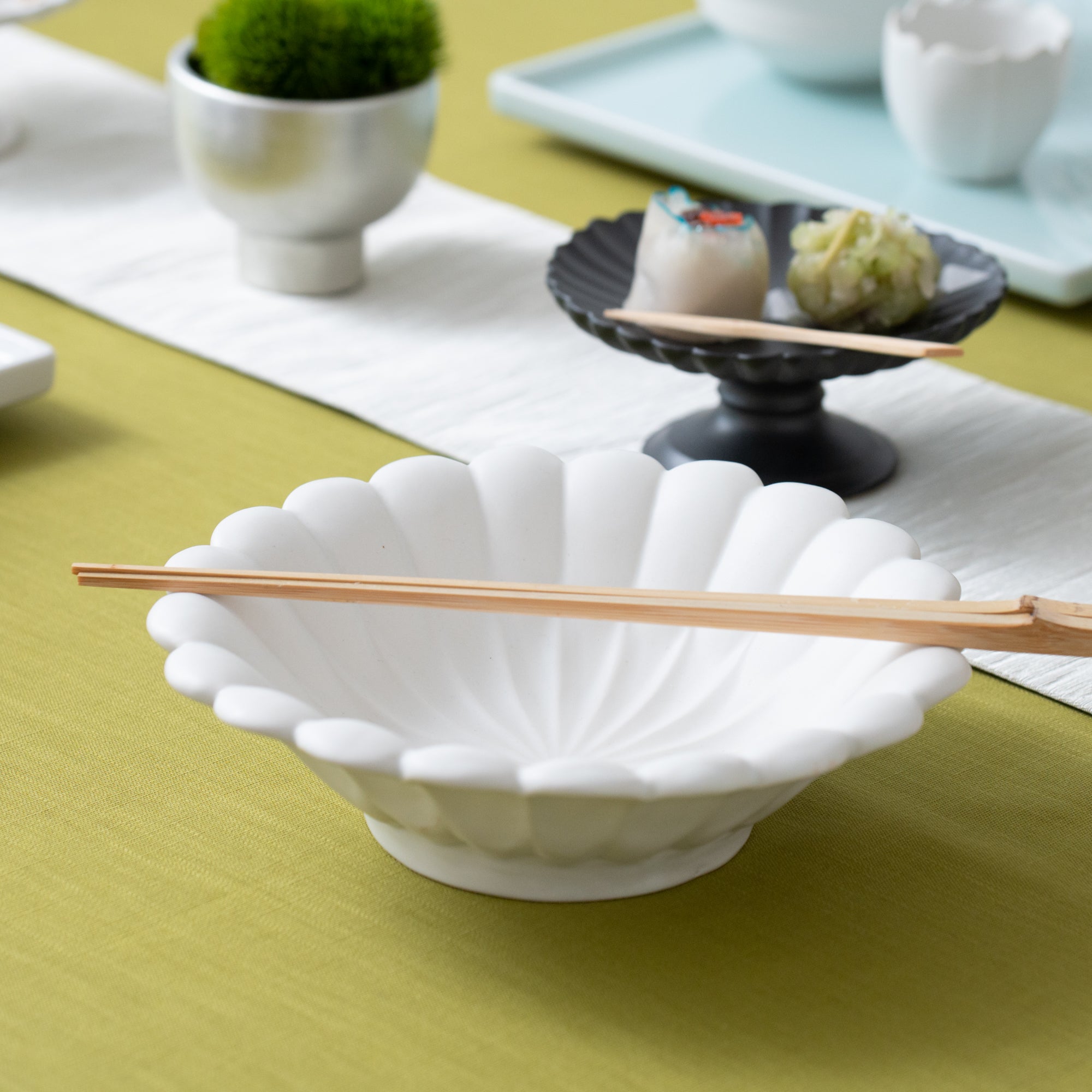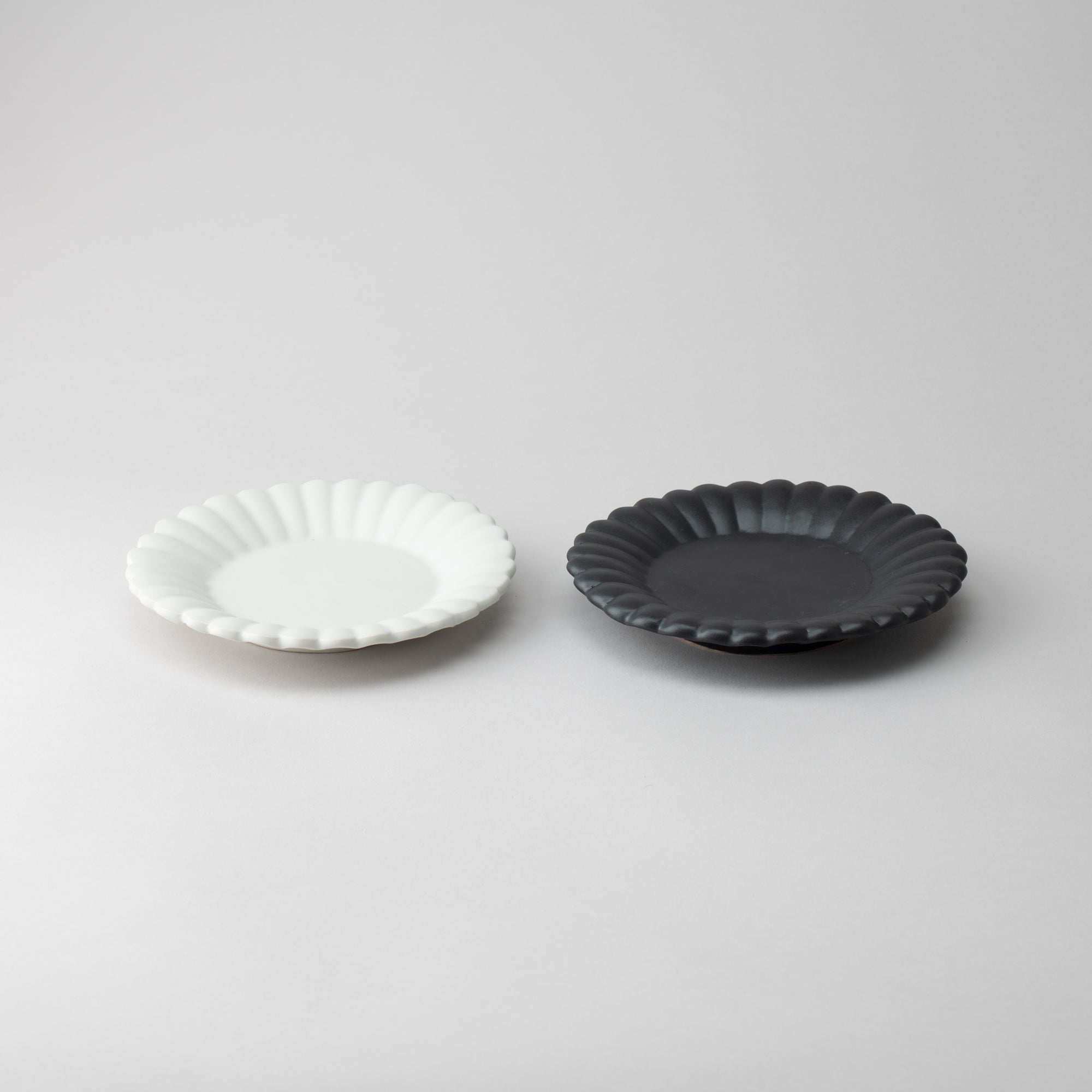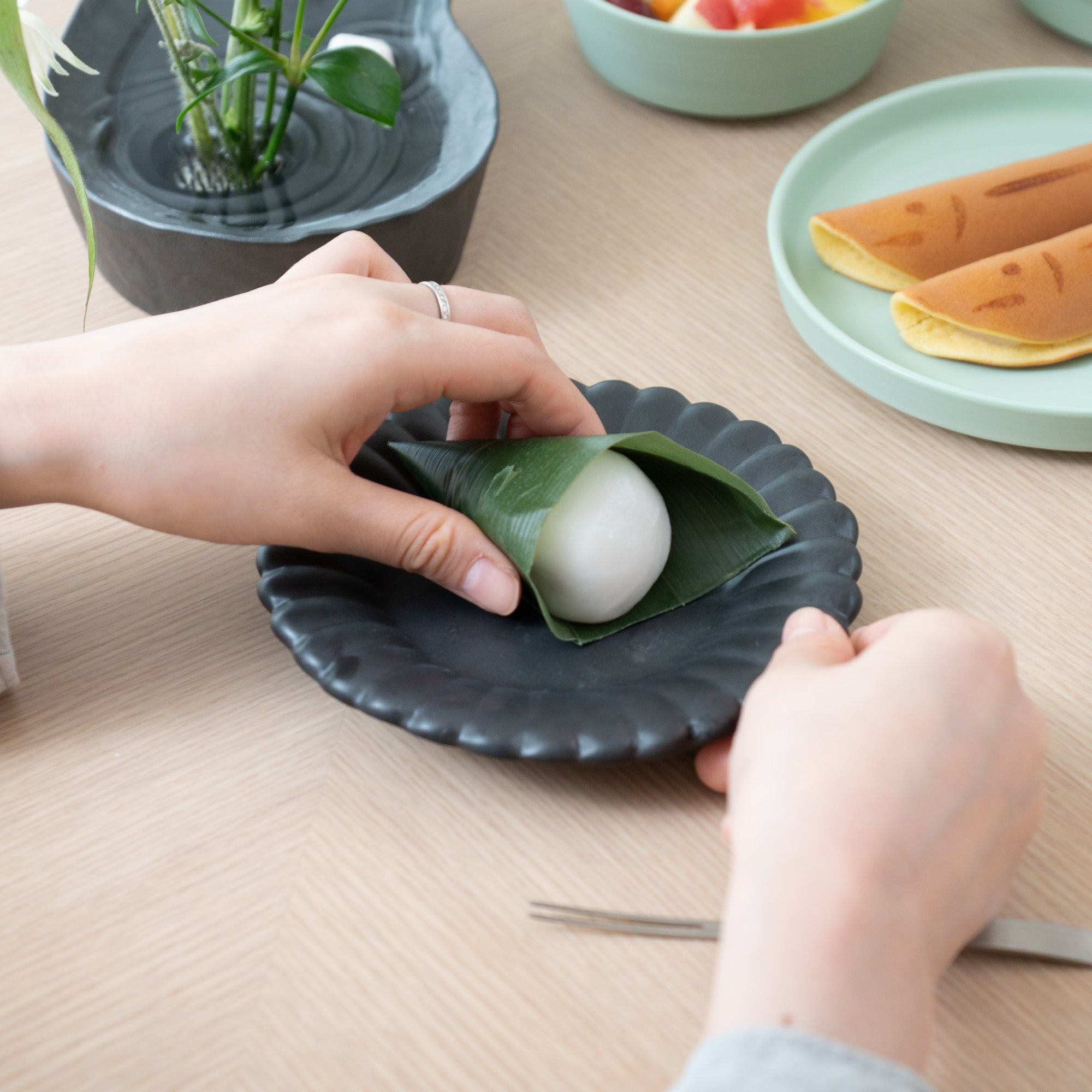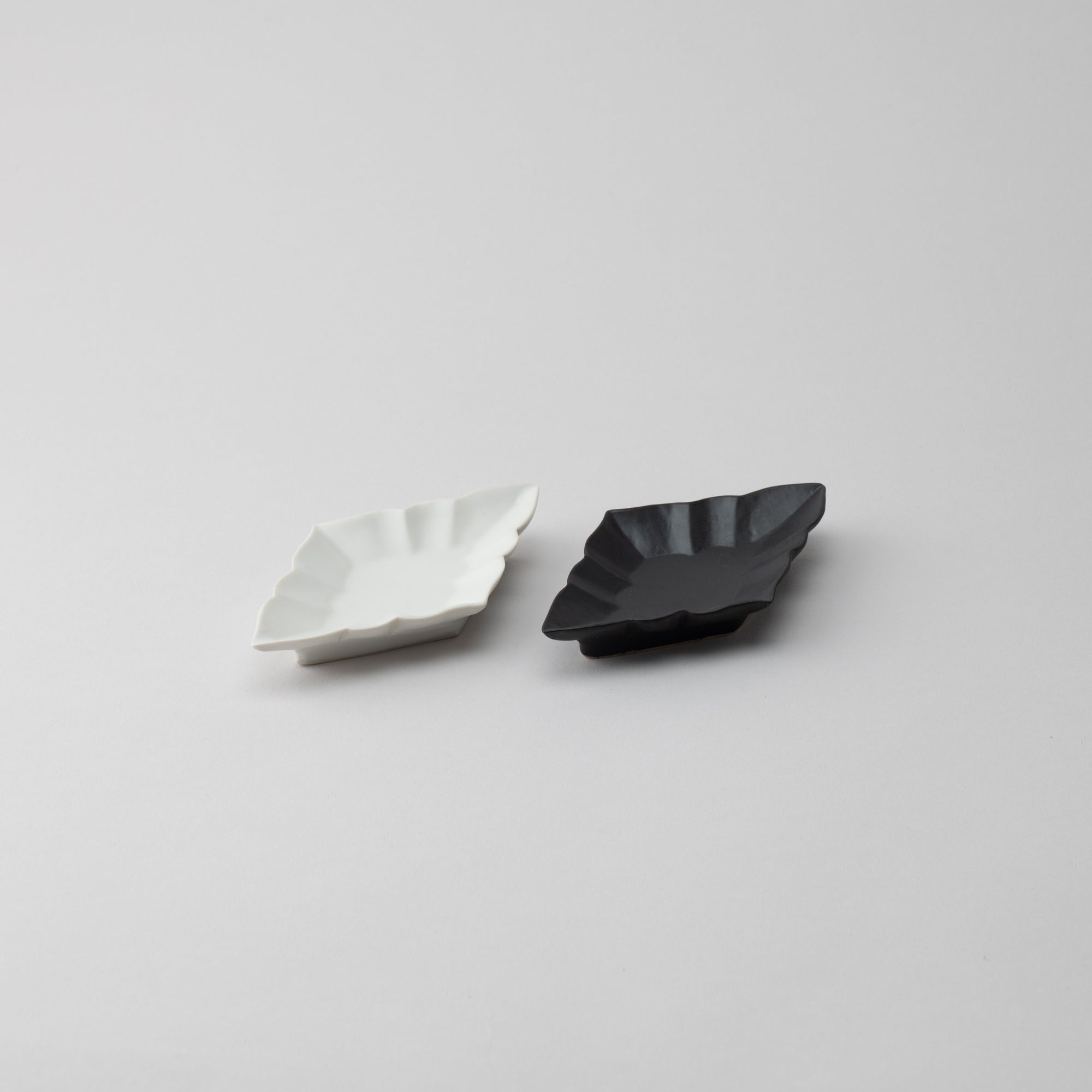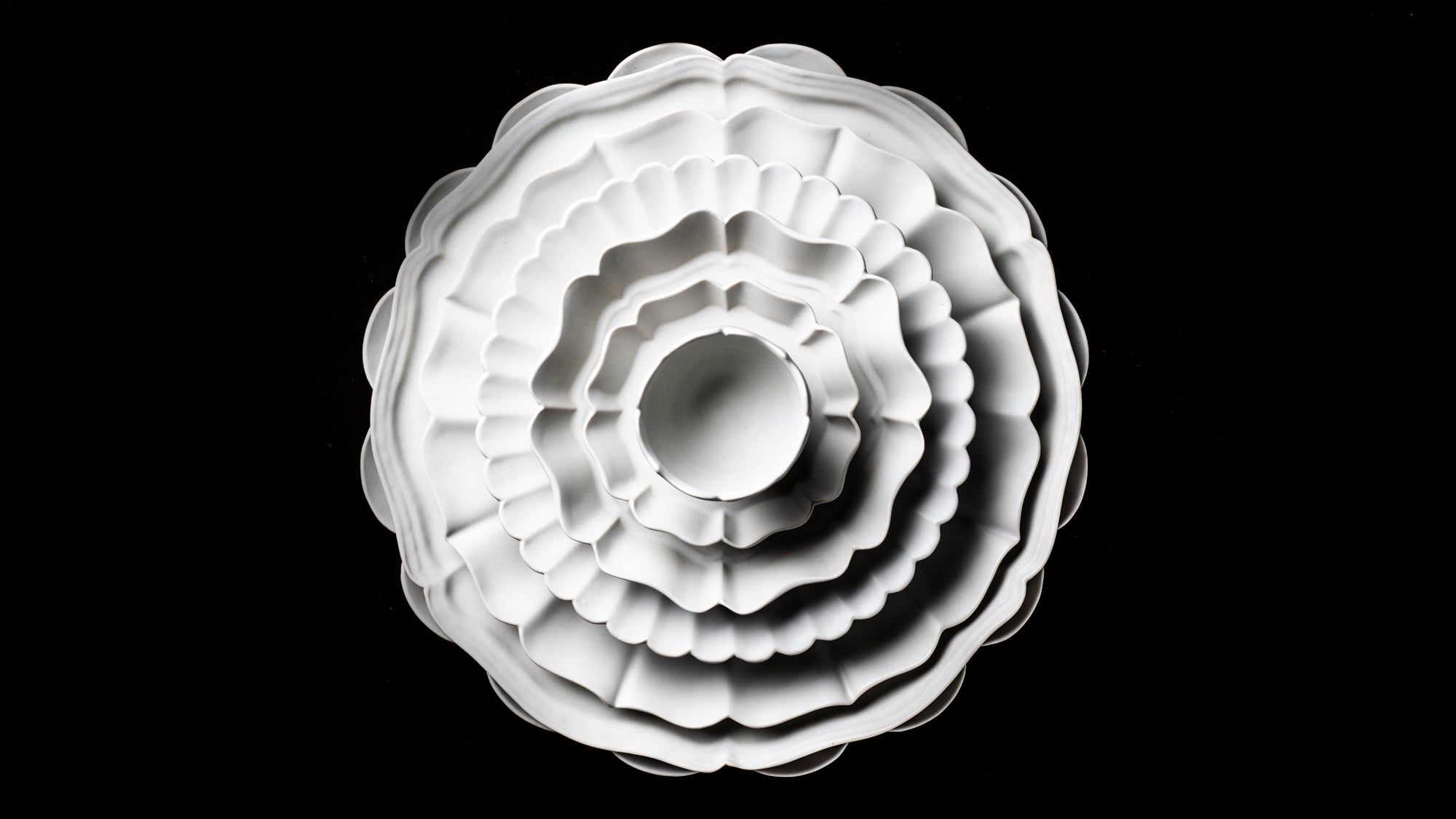
Usuki Ware
Usuki ware "USUKIYAKI", led by Hiroyuki Usami, has revived the pottery that existed in what is now Usuki City, Oita Prefecture during the Edo period, after a lapse of 200 years. The beautiful matte porcelain dishes, which blend the essence of past creations with modern sensibilities, are crafted daily by artisans in a studio surrounded by the rich nature of Usuki City.
Nestled amid rolling hills and the remnants of a castle that casts its shadow over the shimmering sea, Usuki City is an enchanting blend of history, bucolic charm, and a culinary tapestry as rich as its heritage. Here, in an environment embraced by nature's abundance, Hiroyuki Usami reimagines the once-lost art of Usuki ware, "USUKIYAKI", a mystical porcelain from the Edo era that vanished into the mists of time after a brief, luminous decade.
The vessels he crafts, with their matte porcelain finish, are reminiscent of a painter's canvas - where the distinctive rims, delicately modeled after flora, add a touch of elegance. Think of them not just as tableware, but as artful frameworks, elevating each culinary masterpiece they cradle. Their natural texture and gentle demeanor, borne out of a harmonious dance between artisanal hands and nature, are a testament to a nuanced craft. These pieces don't just serve food; they weave a story, transcending the utilitarian, inviting those around the table to savor a deeper, more artful experience with each bite.
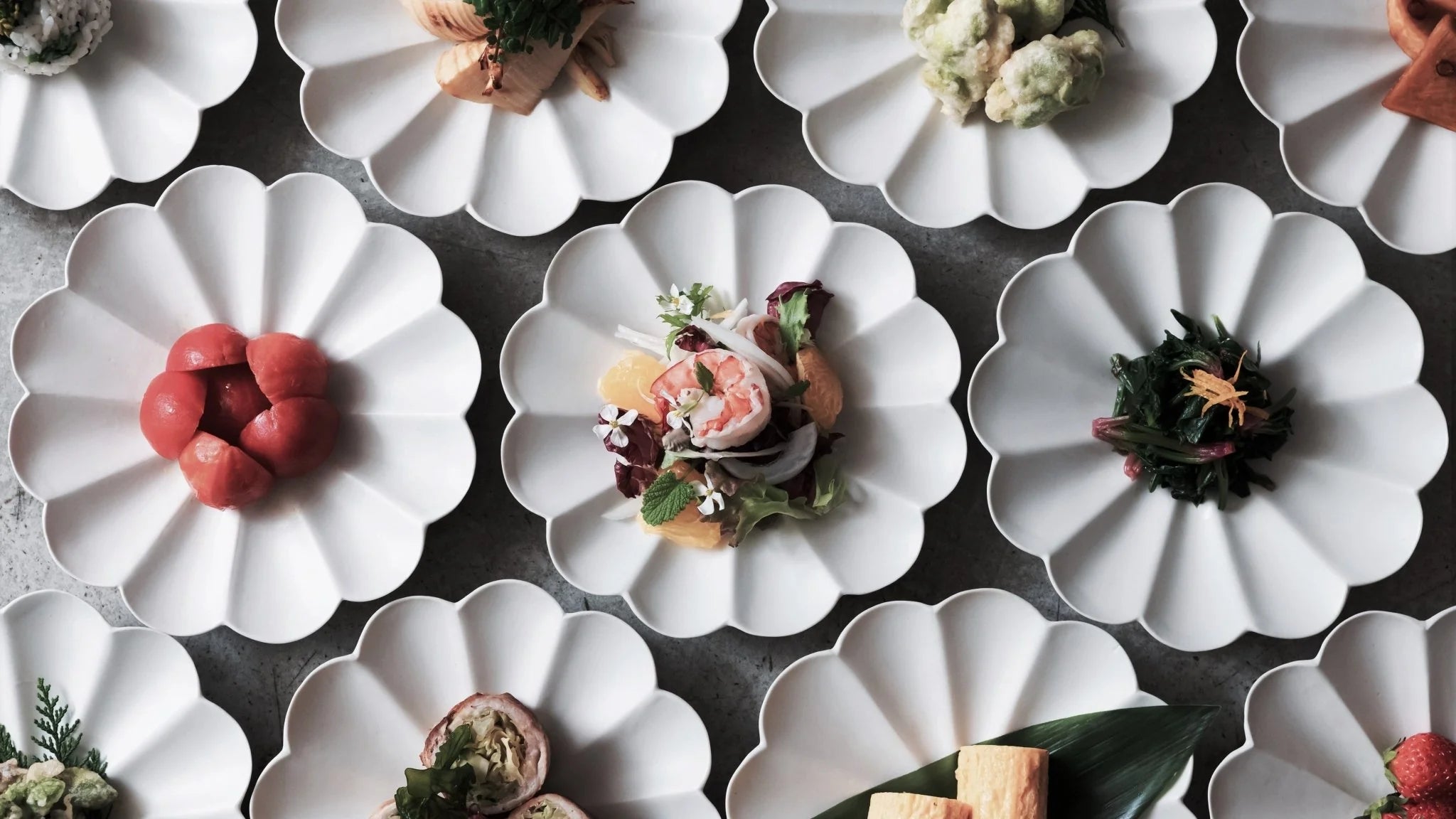
In the past, Usuki ware was opened by Inaba, the lord of Usuki Castle, and was born through the co-creation of artisans called in from Shimabara, Koishiwara, and Komine. Usuki ware does not have a completed recipe, but evolves gradually and delicately through an experimental process. A new history is made not only through the production process, but also through the diversification of the occasions in which these items are used.
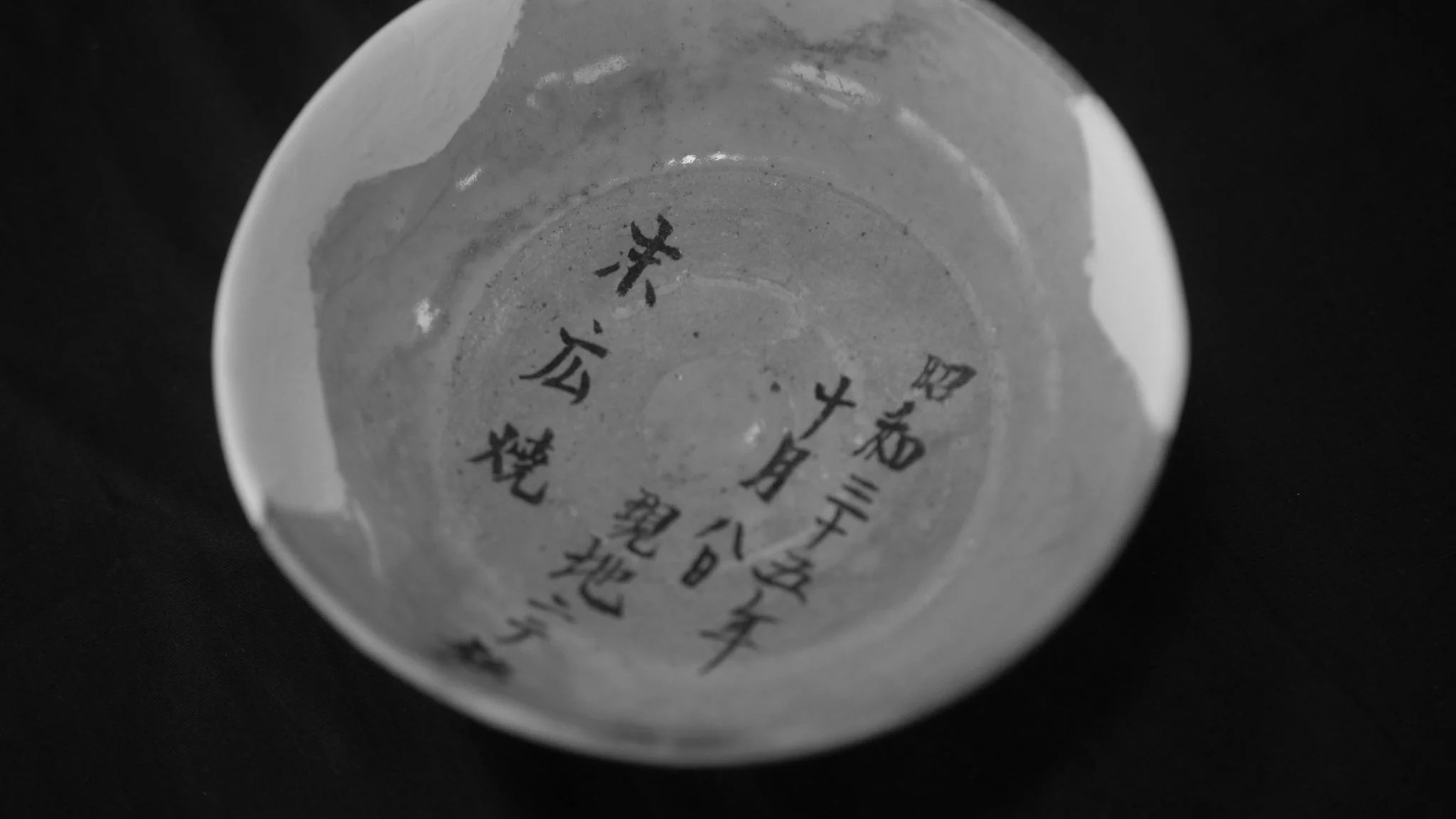
Hiroyuki USAMI
Hiroyuki Usami, the head of Usukiyaki Lab, which was established to revive Usuki ware, is a potter as well as a chef.
His restaurant, USAMI, which boasts dishes that make the most of local ingredients, is crowded daily with local residents and visitors from distant places who have heard about the restaurant. Its beautiful dishes are served on tableware of Usukiyaki.
He is not only a maker of tableware, but also a user. Born and raised in Usuki, his DNA is filled with the natural beauty of Usuki and its rich sensibility for food.
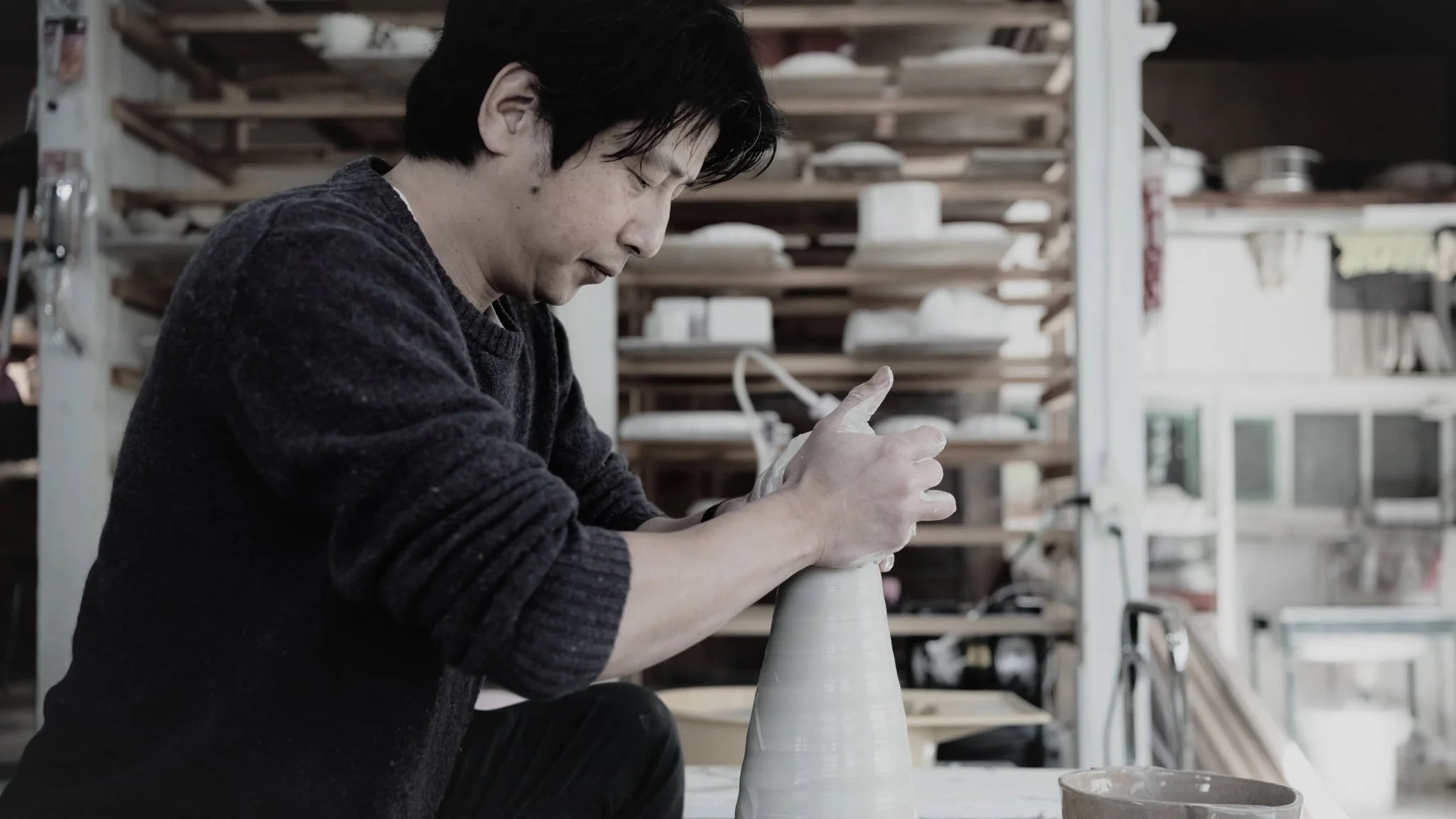
Usukiyaki Lab
In addition to ceramic professionals, Usukiyaki Lab brings together professionals from various fields who share the vision of Usukiyaki.
Composed of people of various generations, genders, and nationalities, Usukiyaki Lab aims to create tableware that are complete only when they are served with cuisine.
Their ultimate goal is to create simple yet gorgeous tableware that brings joy to the user every time.
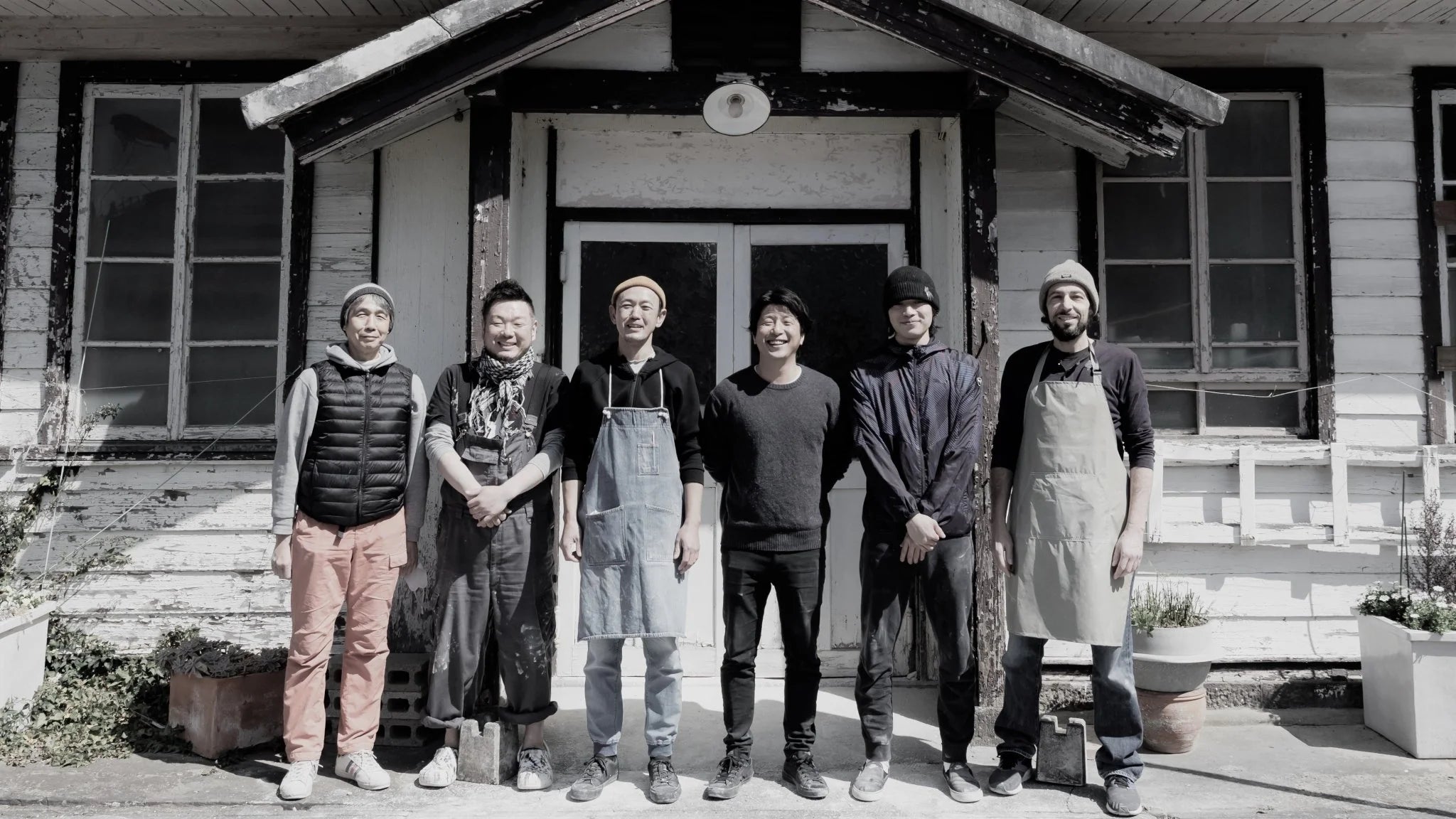
"Our aim is to craft products that will be loved and used across many years."
At the heart of this statement is the deep commitment of artisans who dedicate their days to creation, all the while showing gratitude to the nurturing bounty of nature around them.
Taking cues from the environment, these craftsmen skillfully transform their inspirations into tableware through various handcrafted steps. Indeed, the nature of their work is such that the final product's appearance remains uncertain until the very moment it's fired. Handmade methods might not yield vast quantities, but it's this very limitation that makes each piece special and worthy of the effort poured into it.
With thoughtful use of resources and unwavering dedication, they endeavor to produce items that stand the test of time. And it's in the shared responsibility of both the creators and those who use these items that this regional pottery, born from nature's generosity, becomes a truly sustainable choice for both our world and its inhabitants.
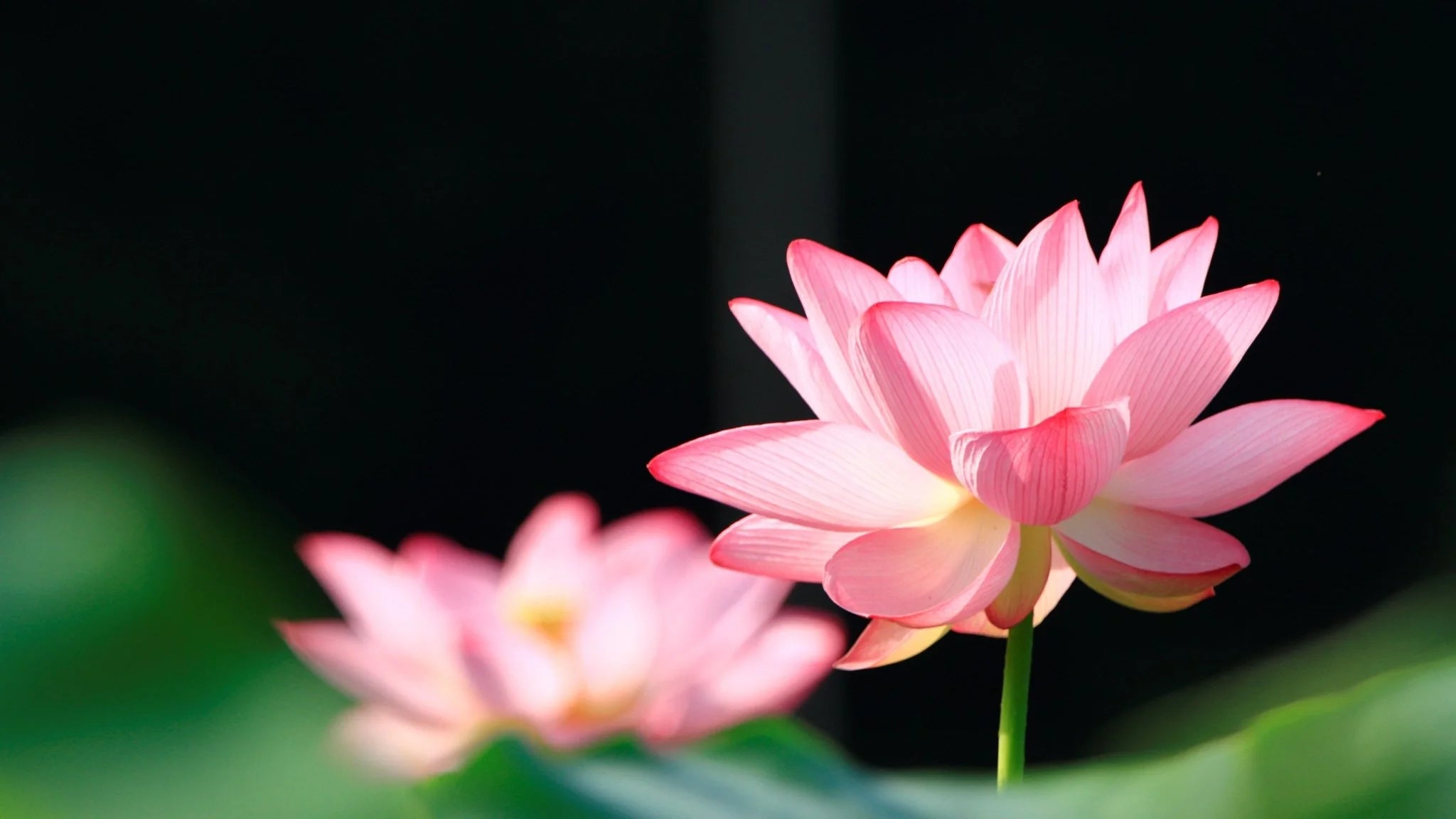
About USUKI City
Usukiyaki is deeply rooted in the birthplace, Usuki City, Oita Prefecture.
Surrounded by the sea facing the Bungo Channel and mountains dotted with famous flower spots such as cherry blossoms and lotus blossoms, the city has the atmosphere of a castle town with many shrines and temples.
The mountains, the land, the sea, the farming village, and the city are all part of this very Japanese landscape. A visit to this area will help you understand why Usuki ware was born with the motif of the beauty of natural formations, which is the characteristic feature of Usuki ware.
Usuki City has a diverse food culture, including miso, soy sauce, and sake making, which is blessed by its nutrient-rich geology and clean water. In 2021, Usuki City was certified as a member of the UNESCO Creative Cities Network.
Mr. Hiroyuki Usami sees the significance of continuing to produce Usukiyaki here, and his artisans, who share his passion, are creating wonderful works of art.
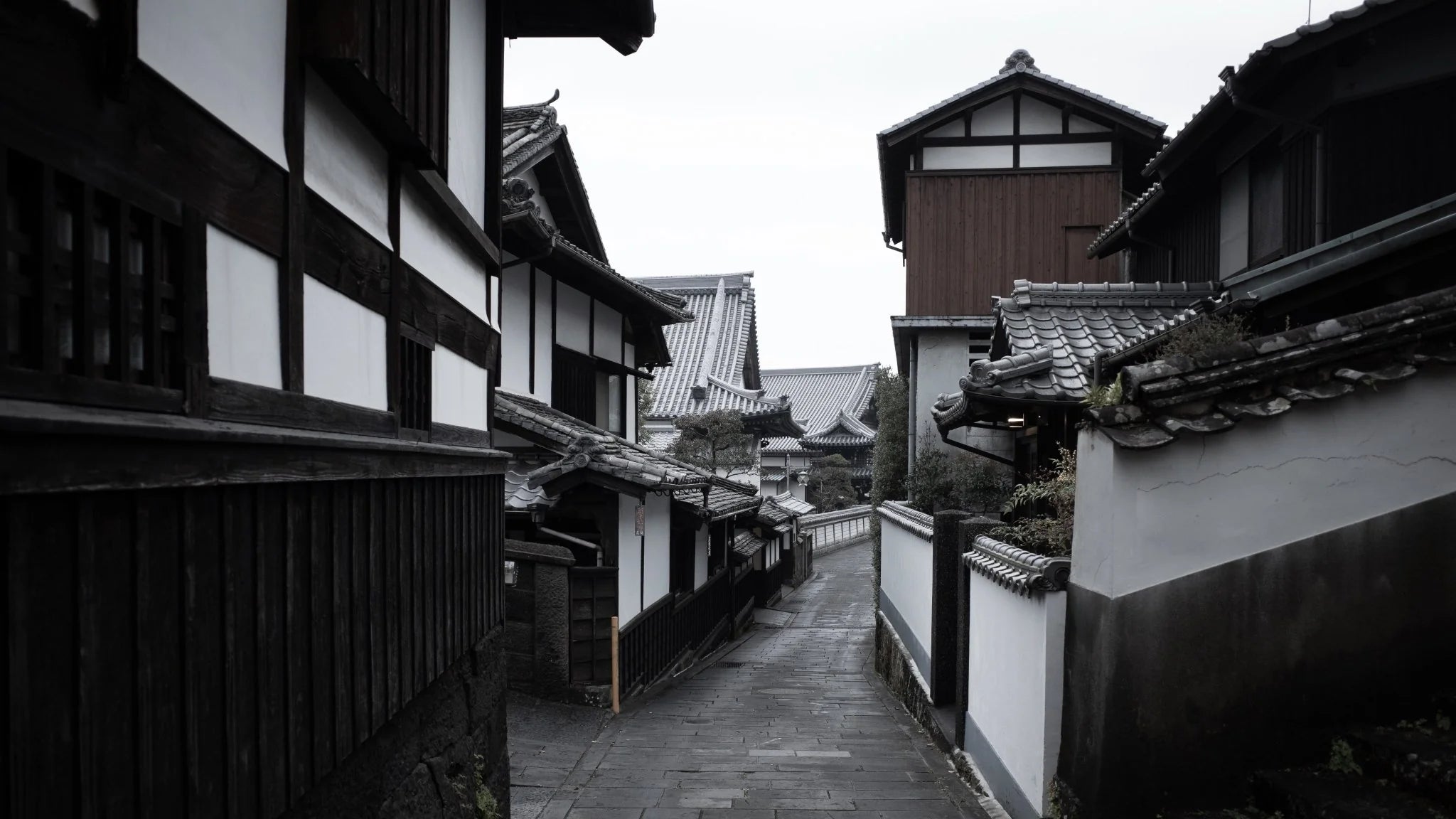
Clay
Among old materials about Usuki ware, there are references that the clay used for Usuki ware was brought from Shimabara or Imari.
In the revival of Usuki ware by the Usuki Ware Research Institute, they started blending clays from various regions according to the products by referring to the old records. The surface of Usuki ware is not white like western porcelain, but has iron powder and bubble pores, which are inevitable to create the unique texture of Usuki ware.
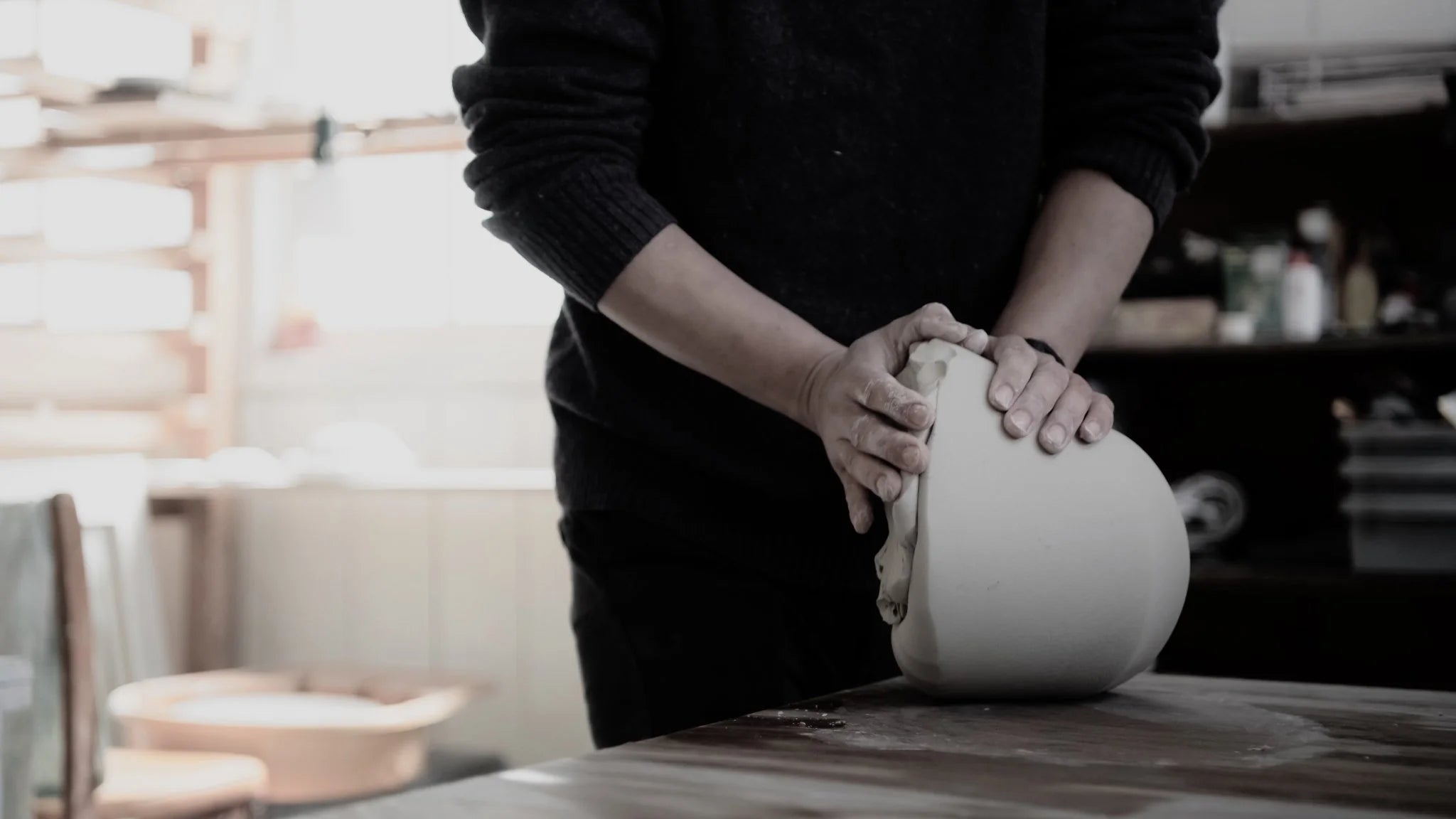
Molding
Usuki ware had many flower-shaped designs on white porcelain made by Shimabara potters. Using this as a clue, a "Rinka" series made by "Katauchi" technique was created.
Katauchi is a molding technique in which a thinly stretched base clay material is covered with a plaster mold and pressed by hand to form the shape of flowers and petals, or to emboss a pattern carved into the mold onto a base material. Compared to casting, in which liquid ceramic clay is poured into a mold, this technique retains the warmth of handmade.
In order to pursue even more beauty and functionality, the foot is made using a potter's wheel, and the edges of the petals are cut using thread. The shadows casted by the curves of the rim that symbolize the beauty of Usuki ware are created by this combination of techniques.
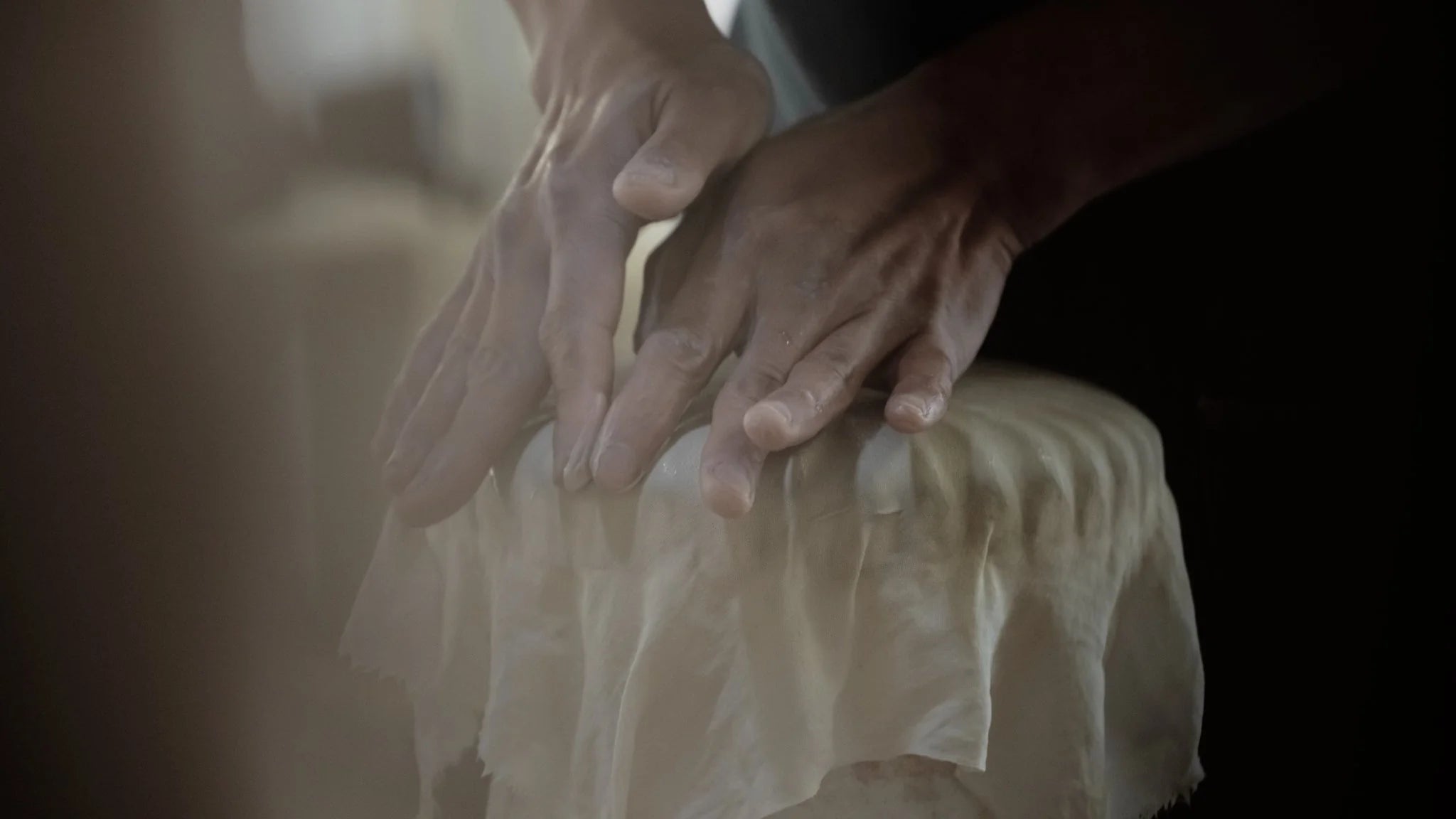
Glazing
Glazes, which are applied to tableware before firing, are important not only for adding color to the tableware but also for enhancing the utility of the tableware. Usuki ware's glazes developed to give tableware the soft impression as if coated with white icing, naturally complementing food and ingredients. Even if the glaze has a good color, it will flake off if it is not compatible with the clay. It is the glaze that was developed through trial and error by artisans while considering the balance between texture and functionality.
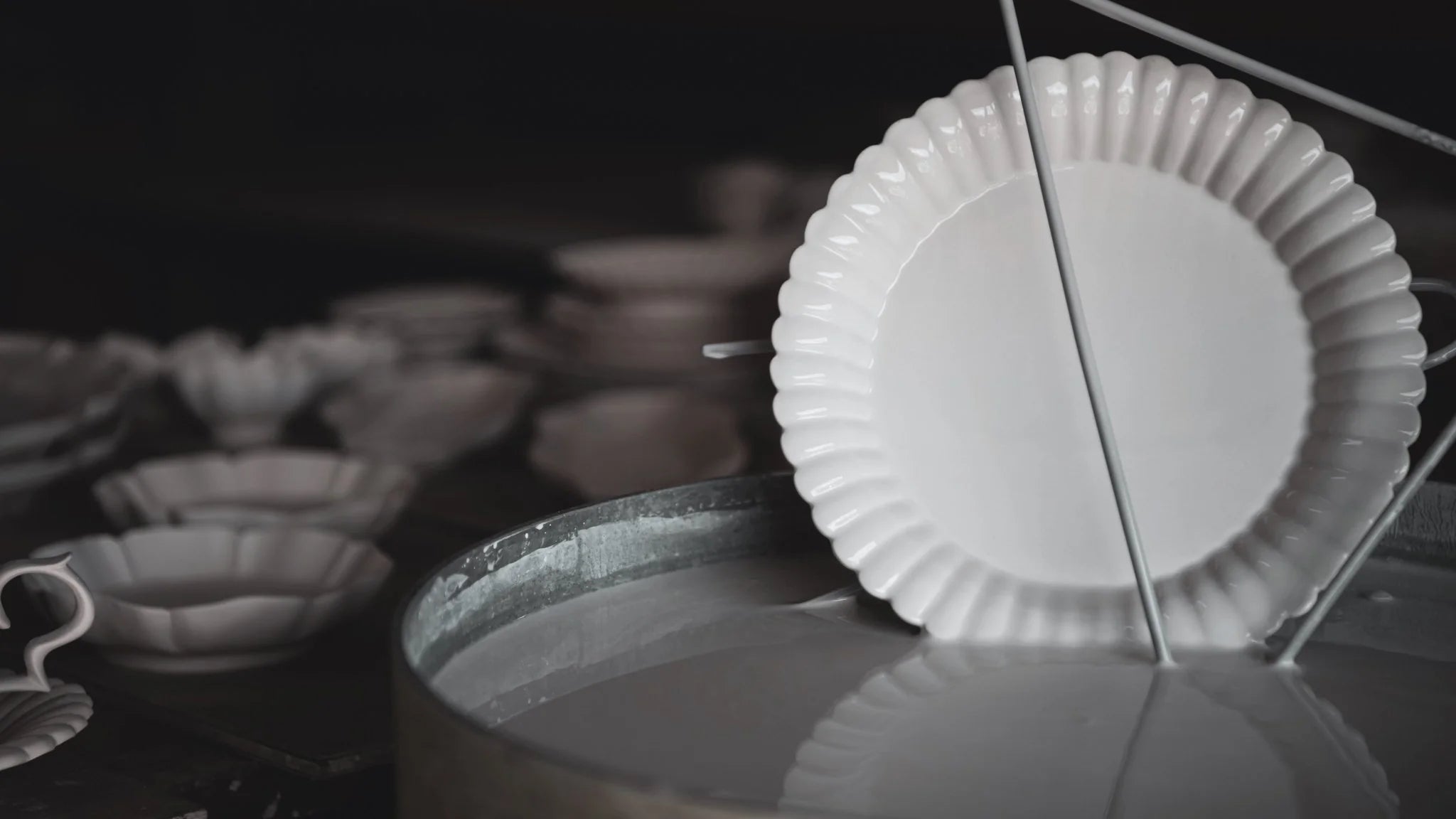
Firing
Usuki ware, which has many unique shapes, is fired at 1280 degrees for 16 hours, which is higher than usual, to increase its durability as tableware. These temperatures and times are fine-tuned by the craftsmen according to the condition of the clay and the weather.
After baking, finished pieces that did not meet the product standards are reworked and baked again. While there are many kilns that dispose of those pieces because reprocessing is too troublesome, the Usuki ware kilns take care of this process in order to use limited resources effectively and protect the environment.
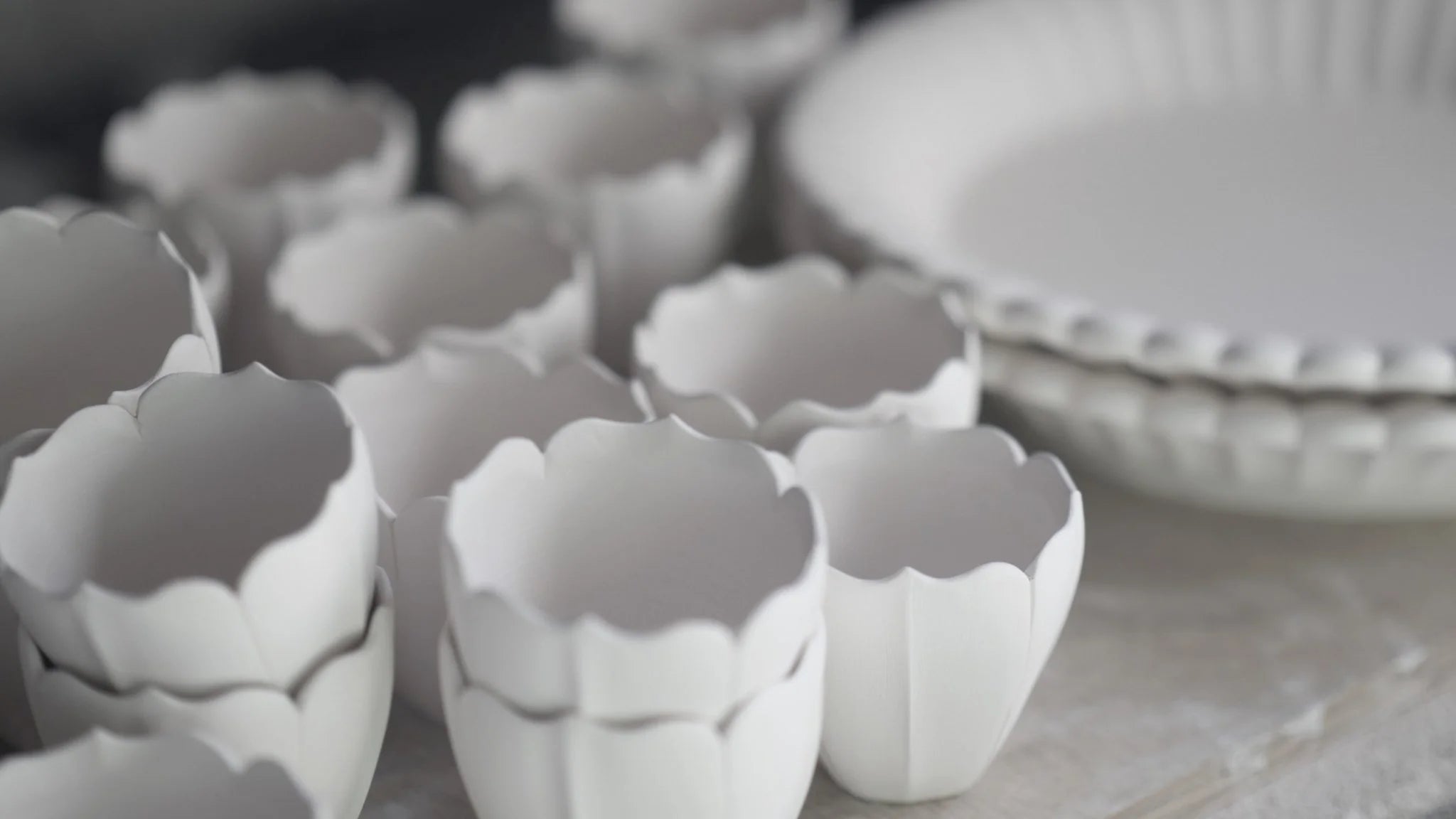
Makers
Filters




